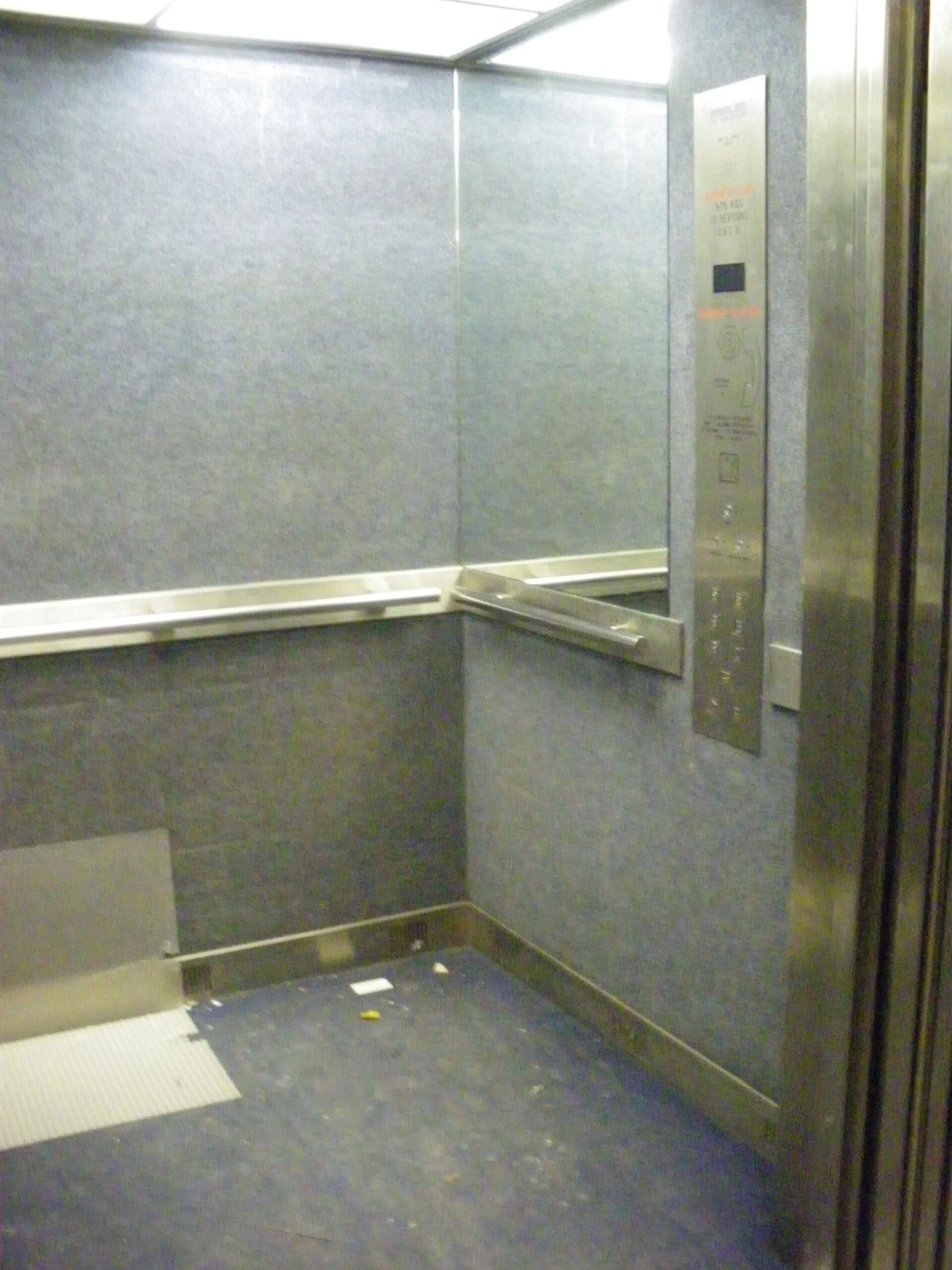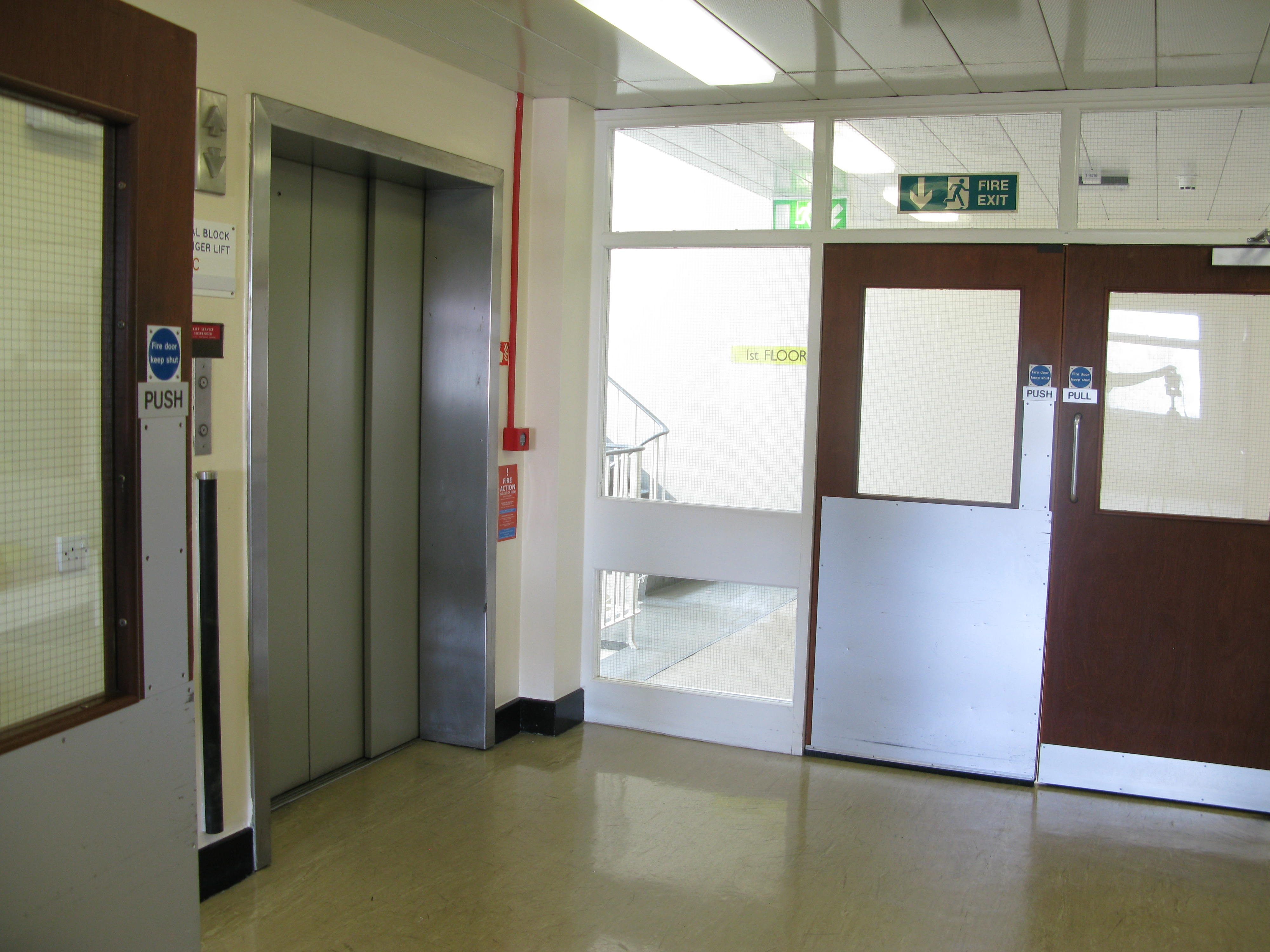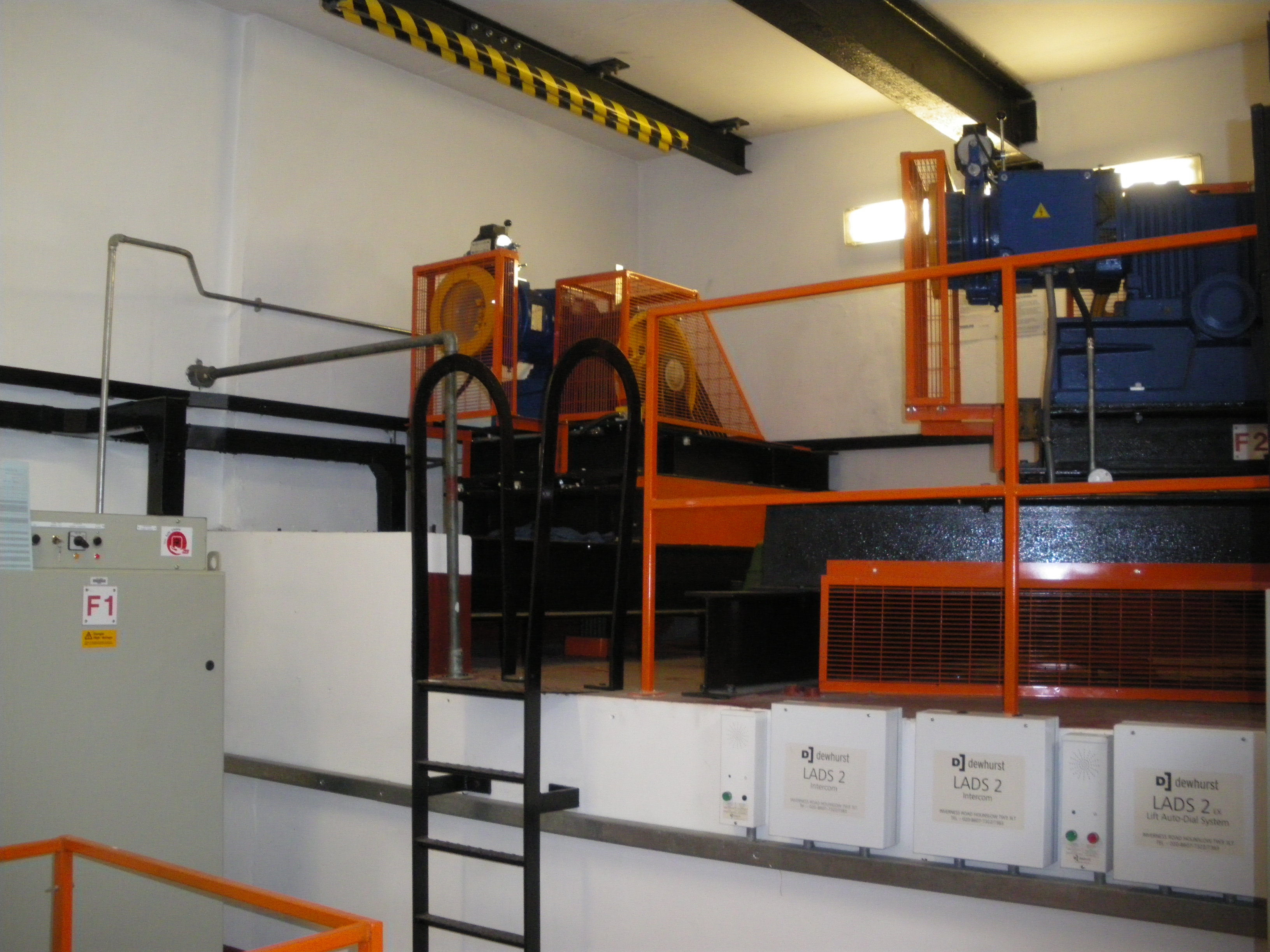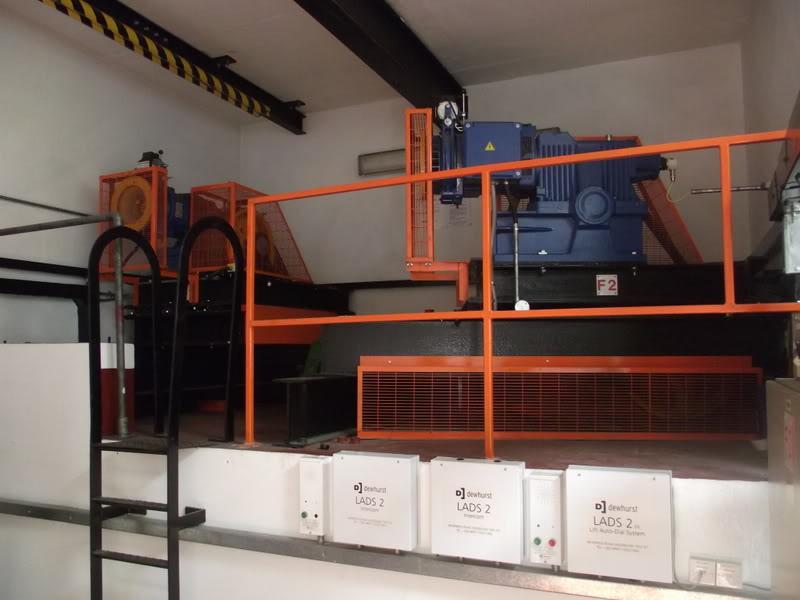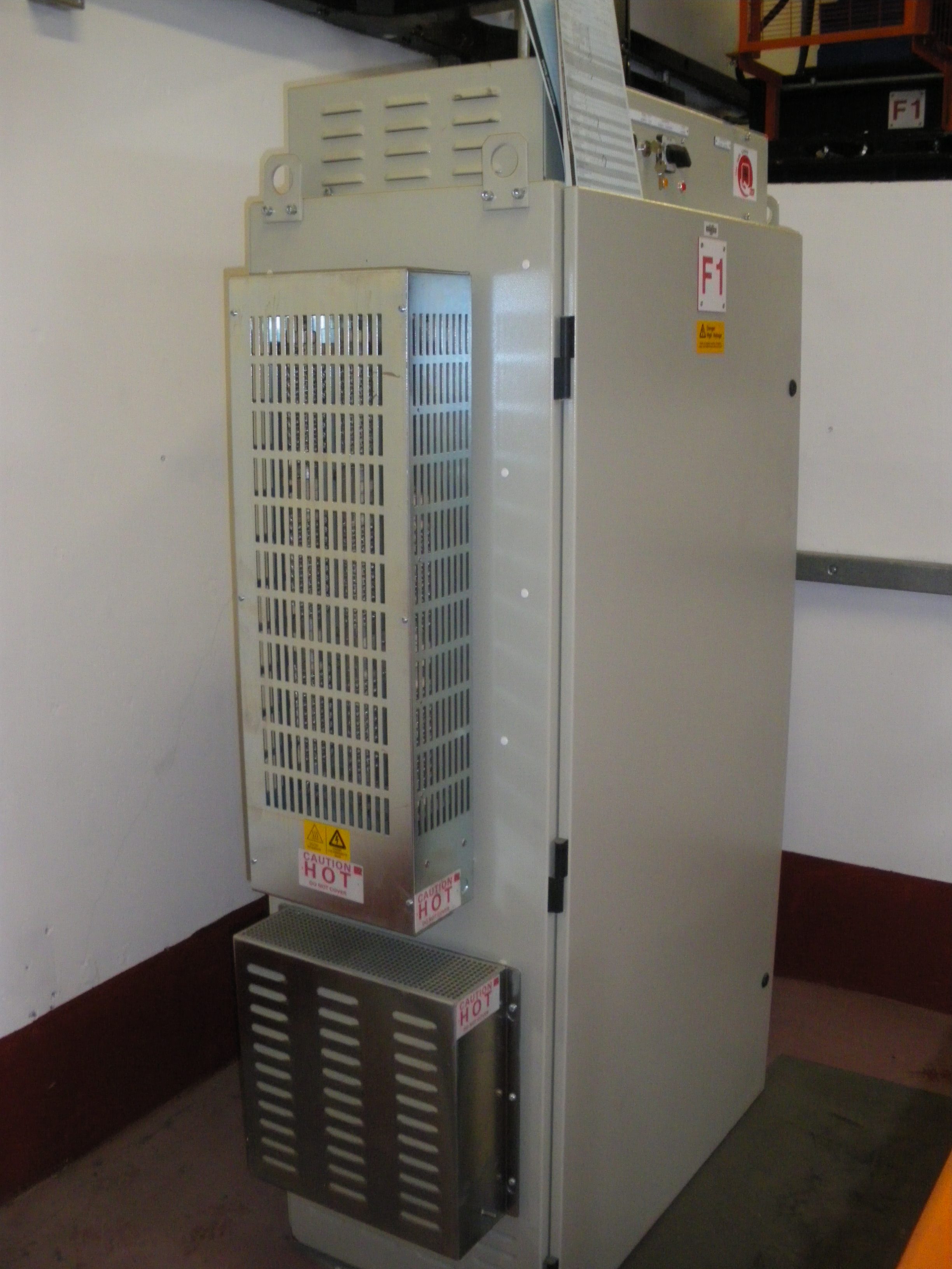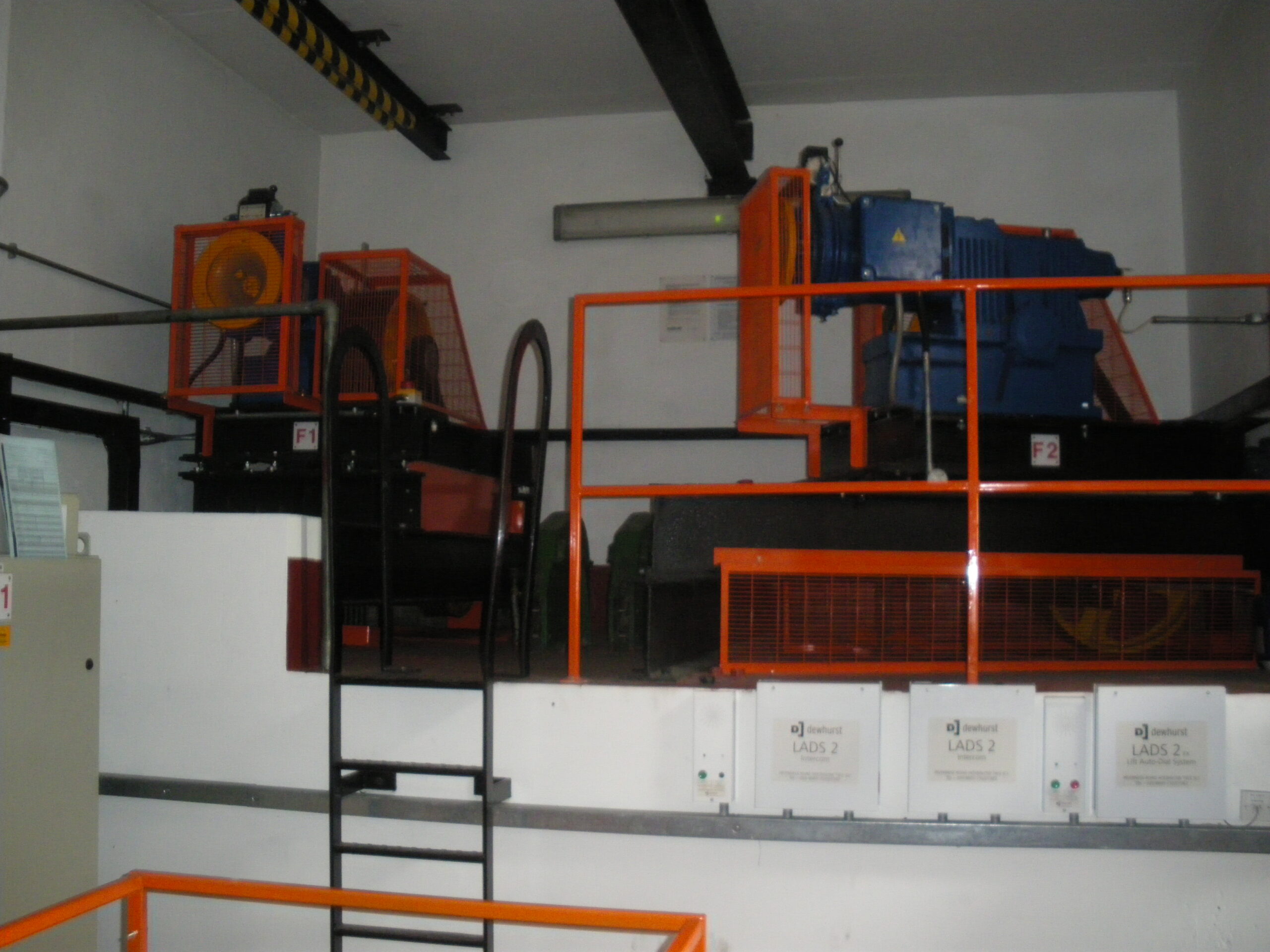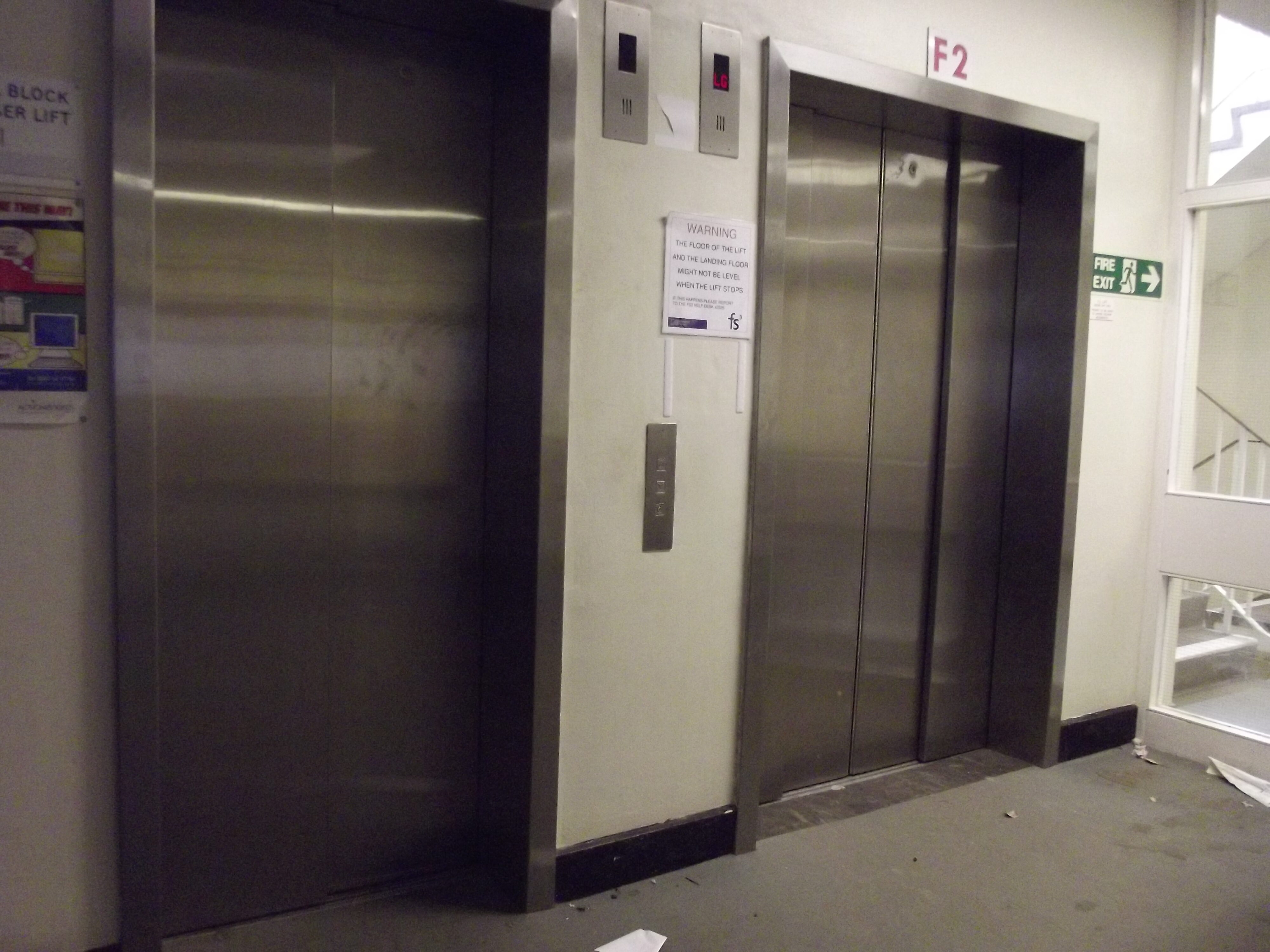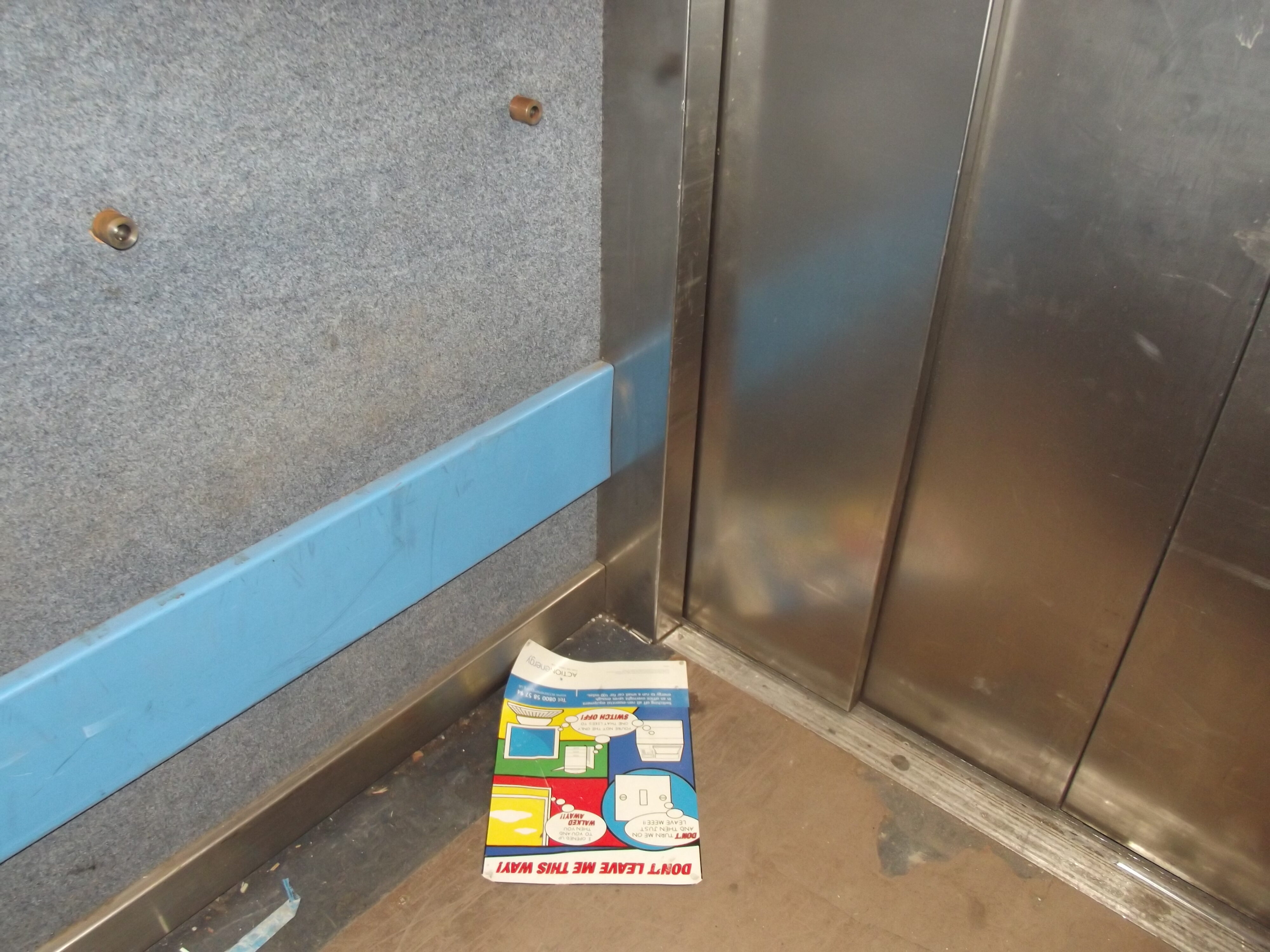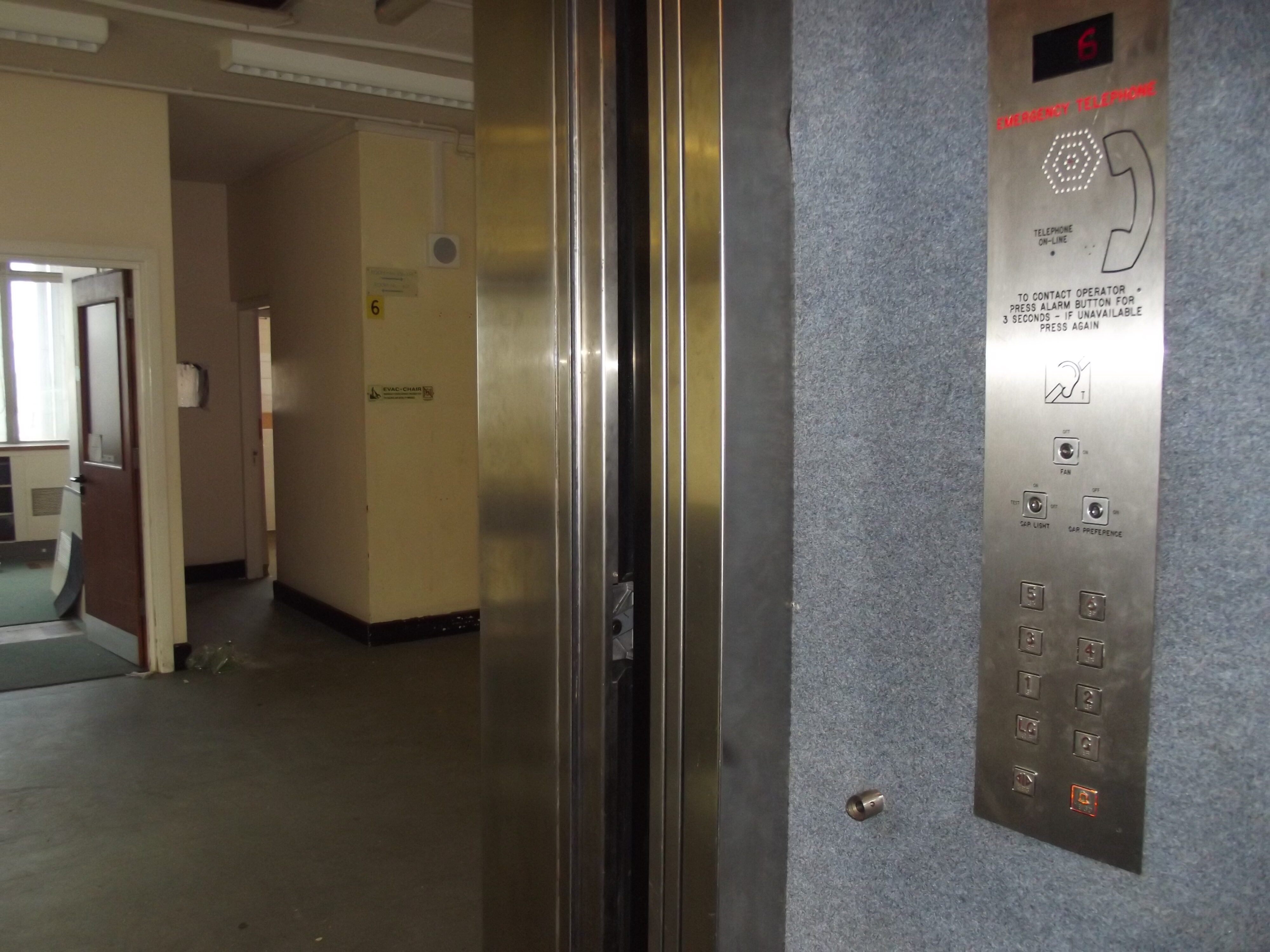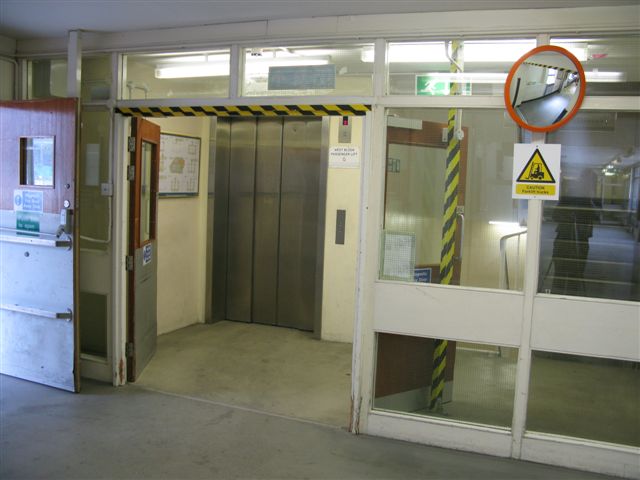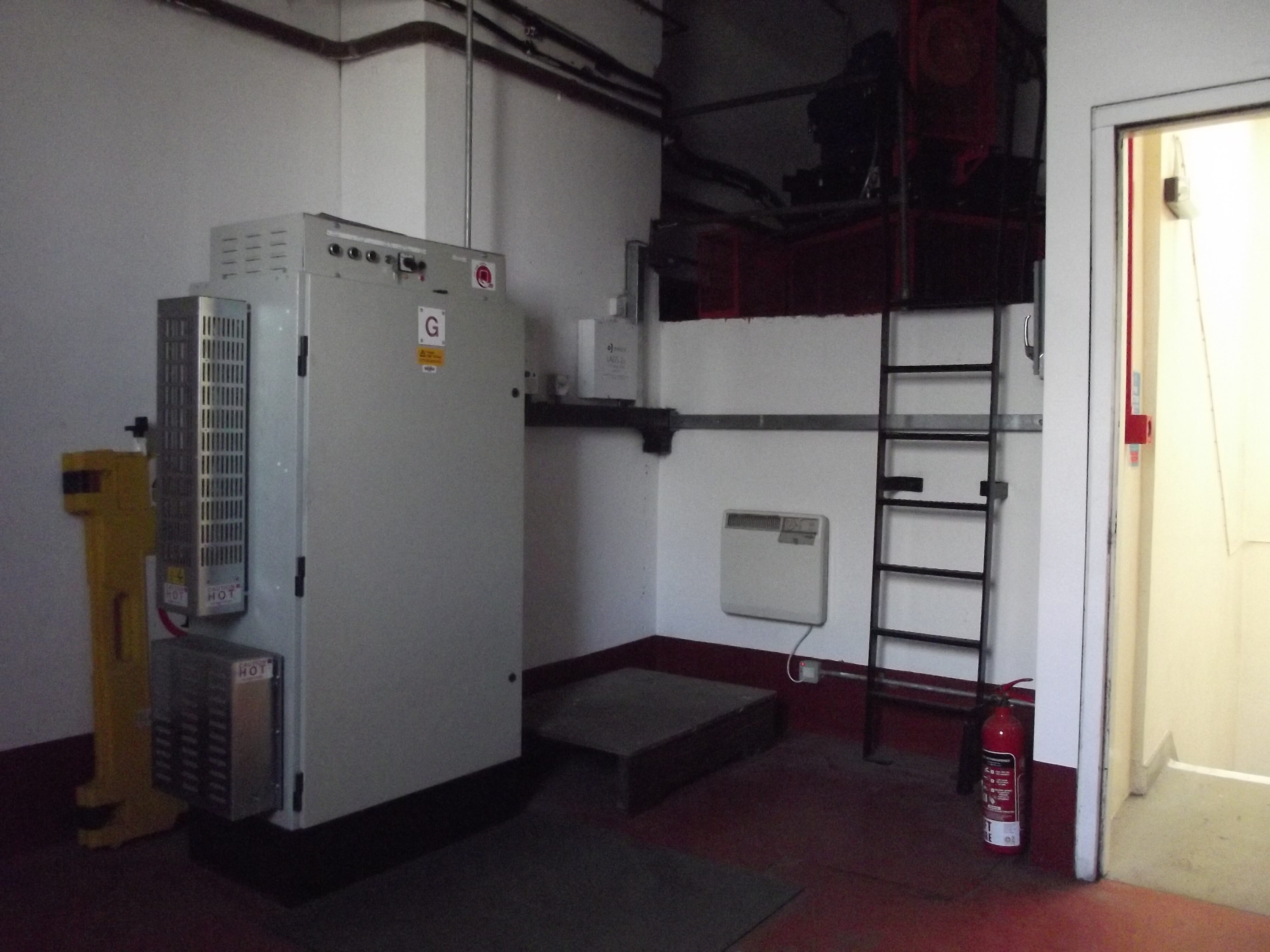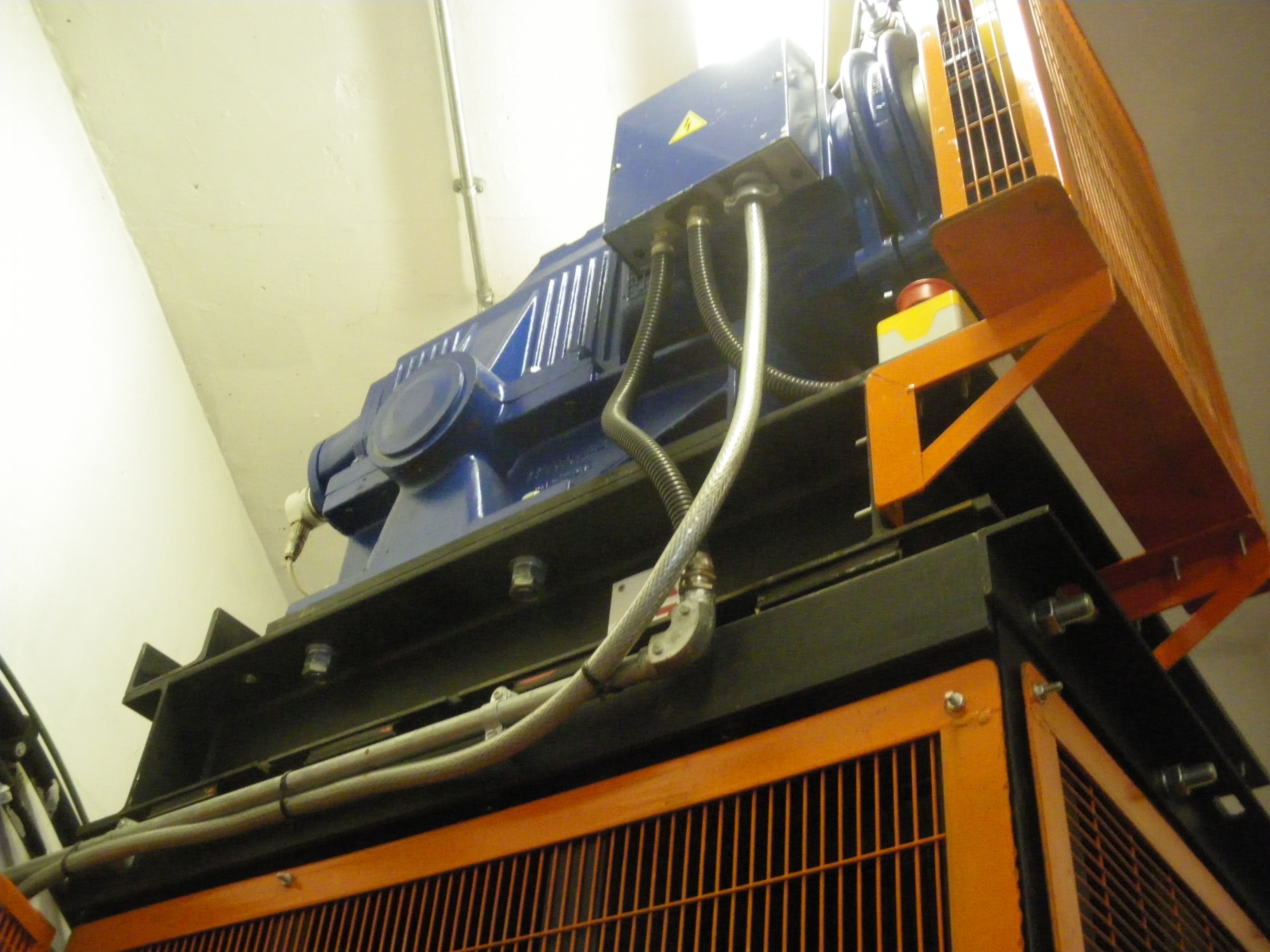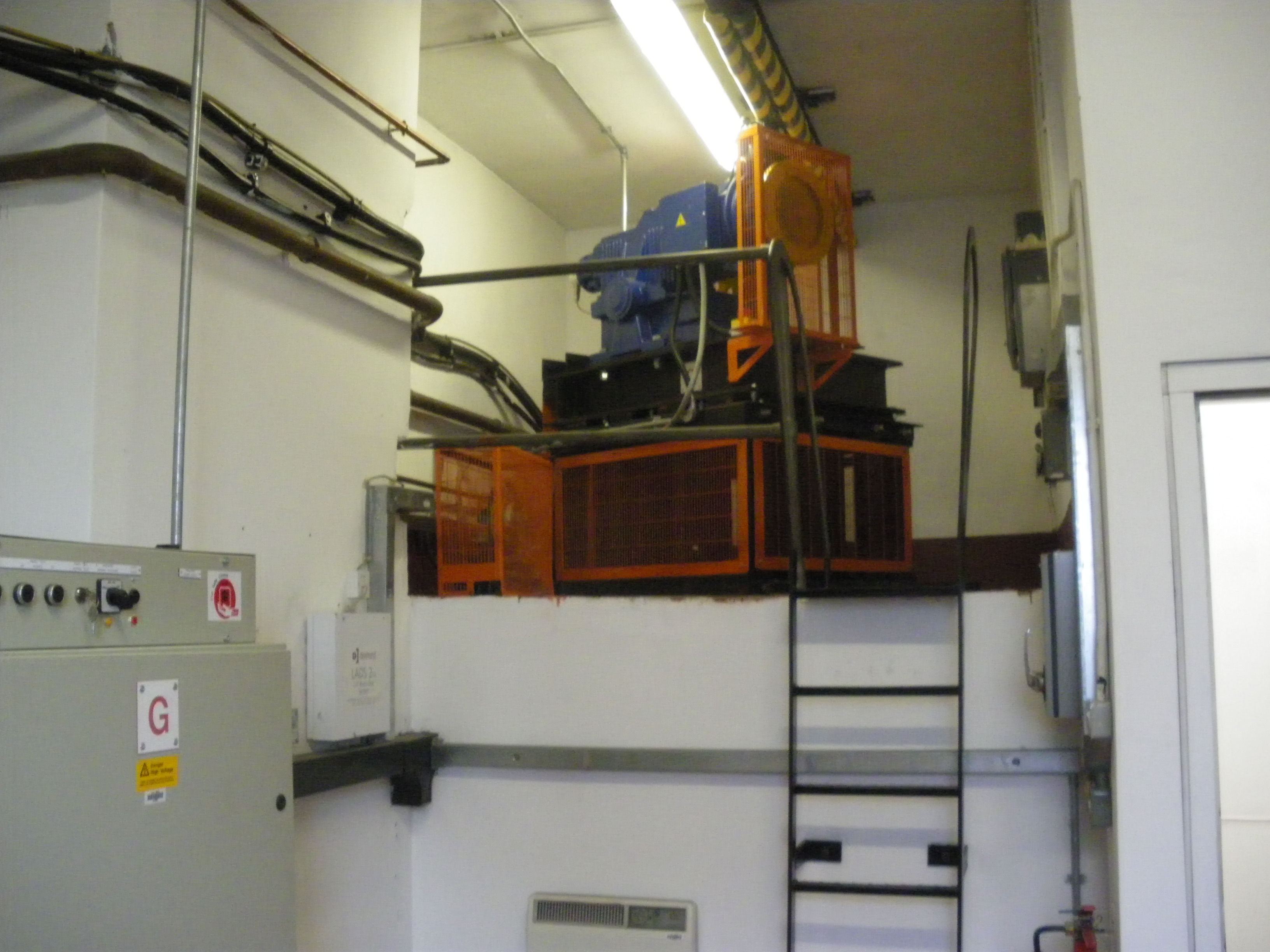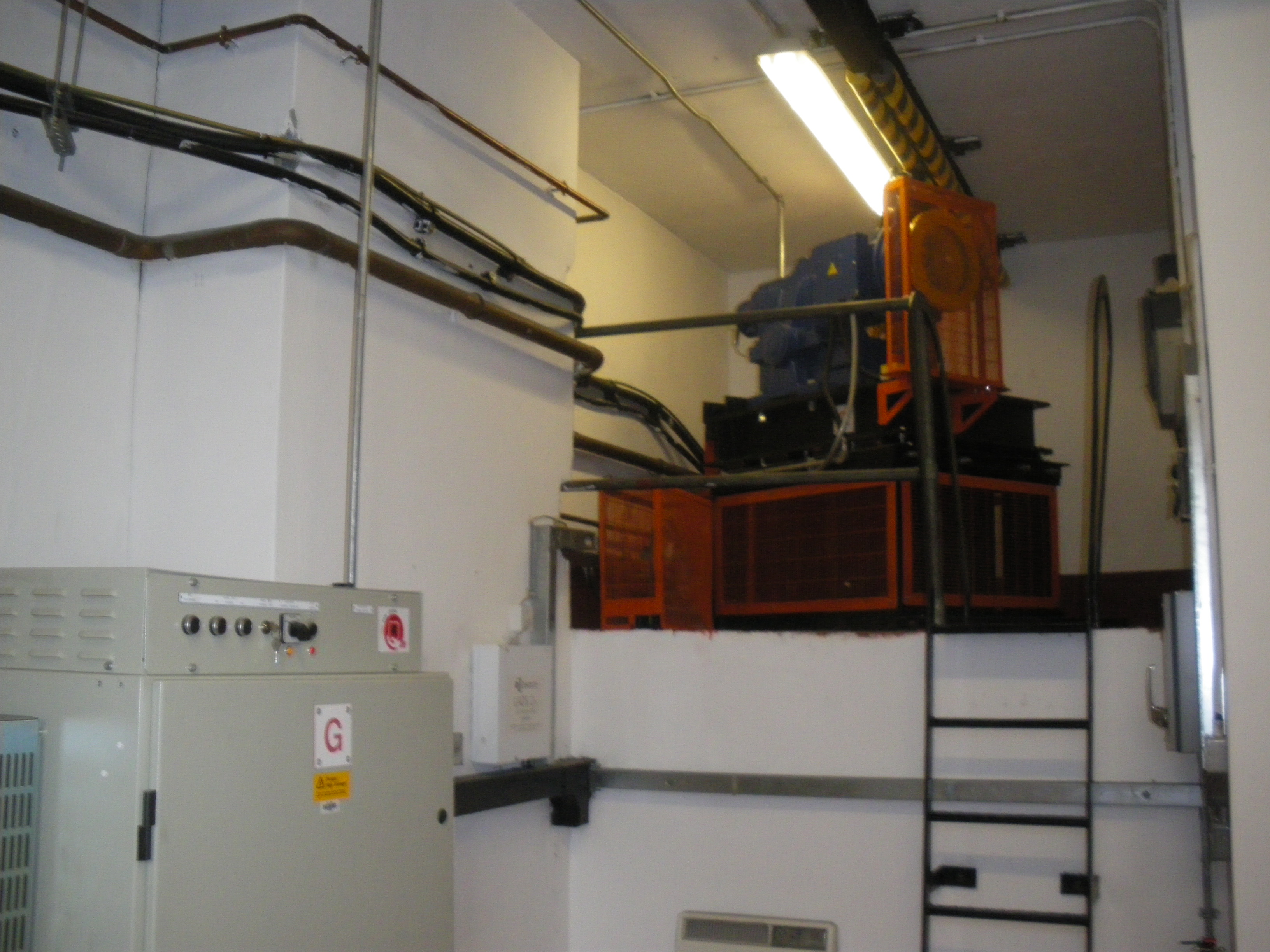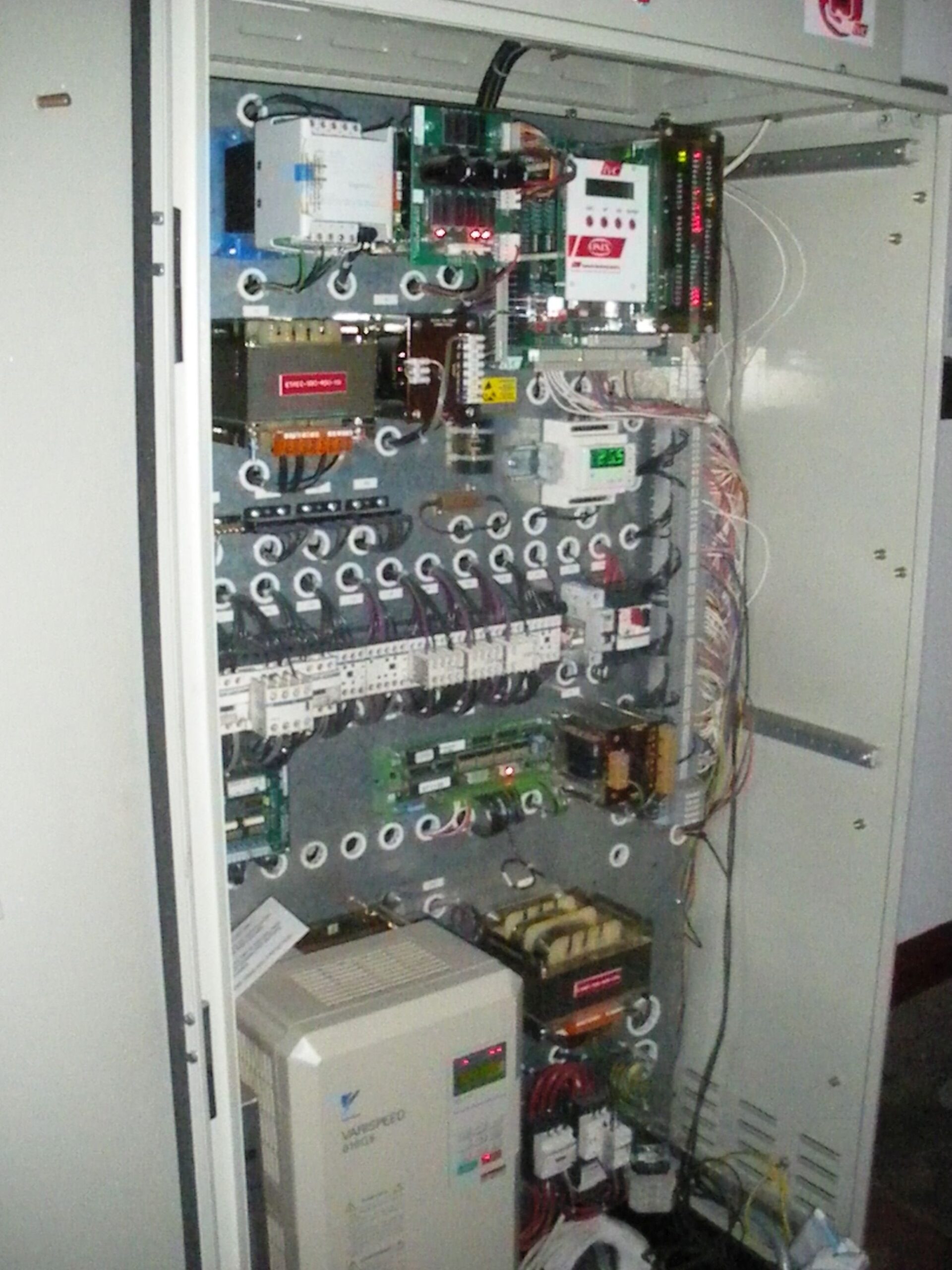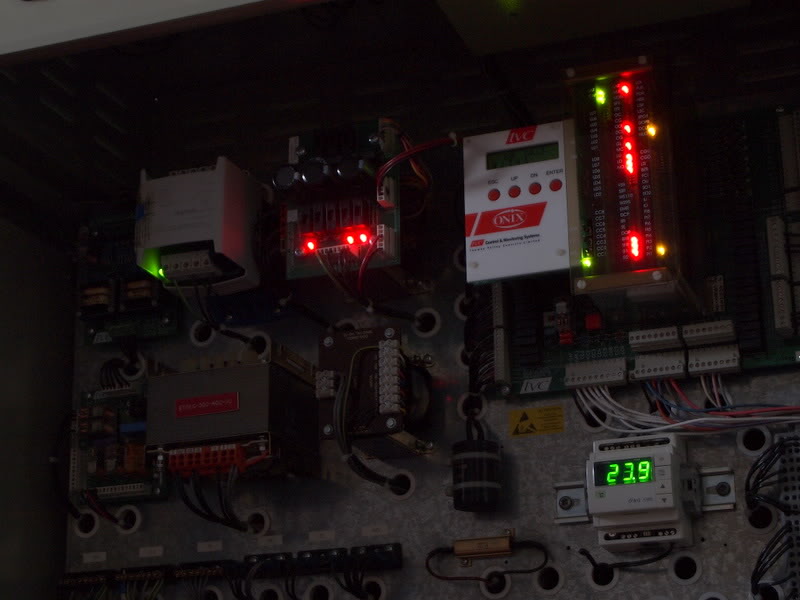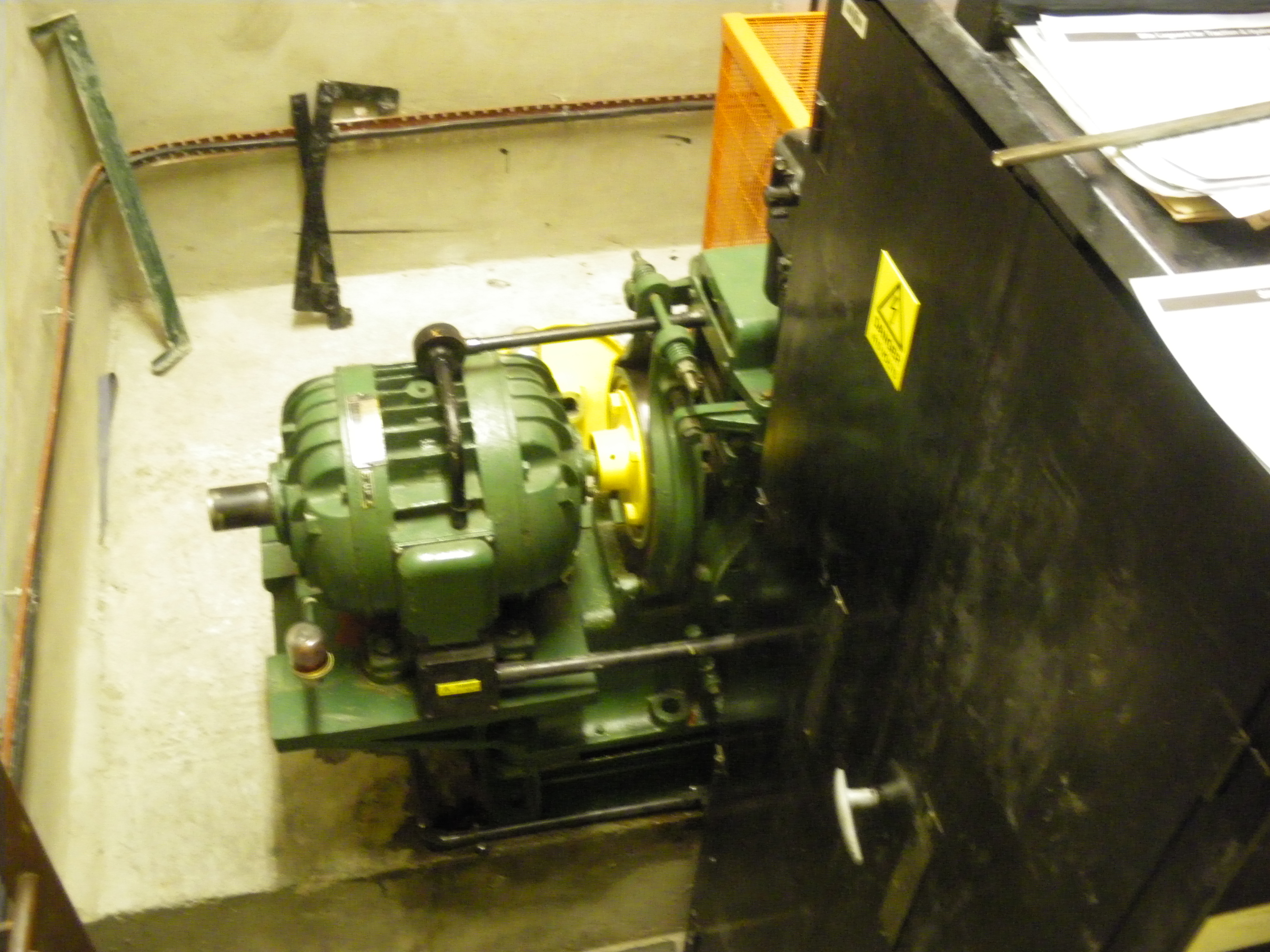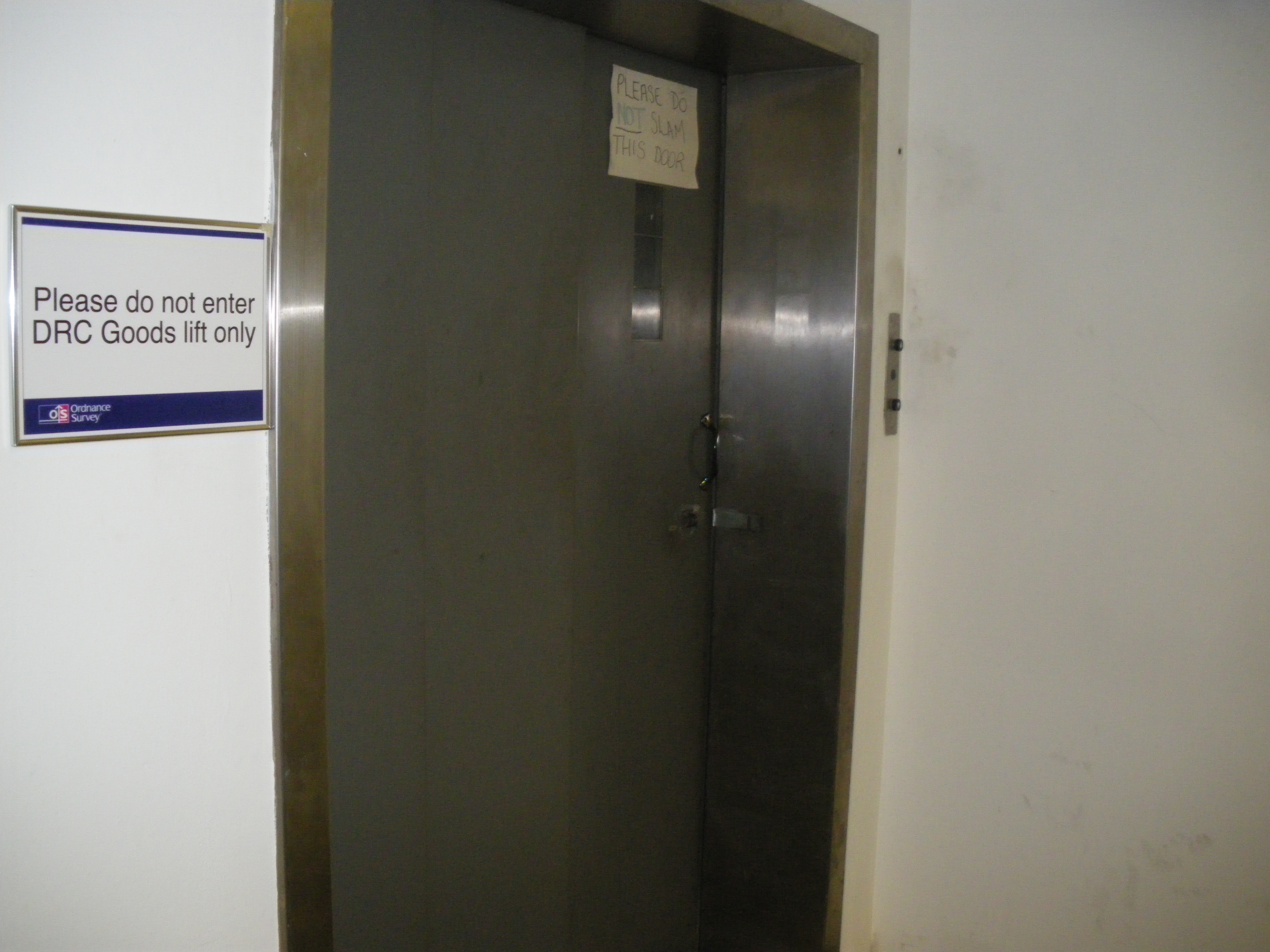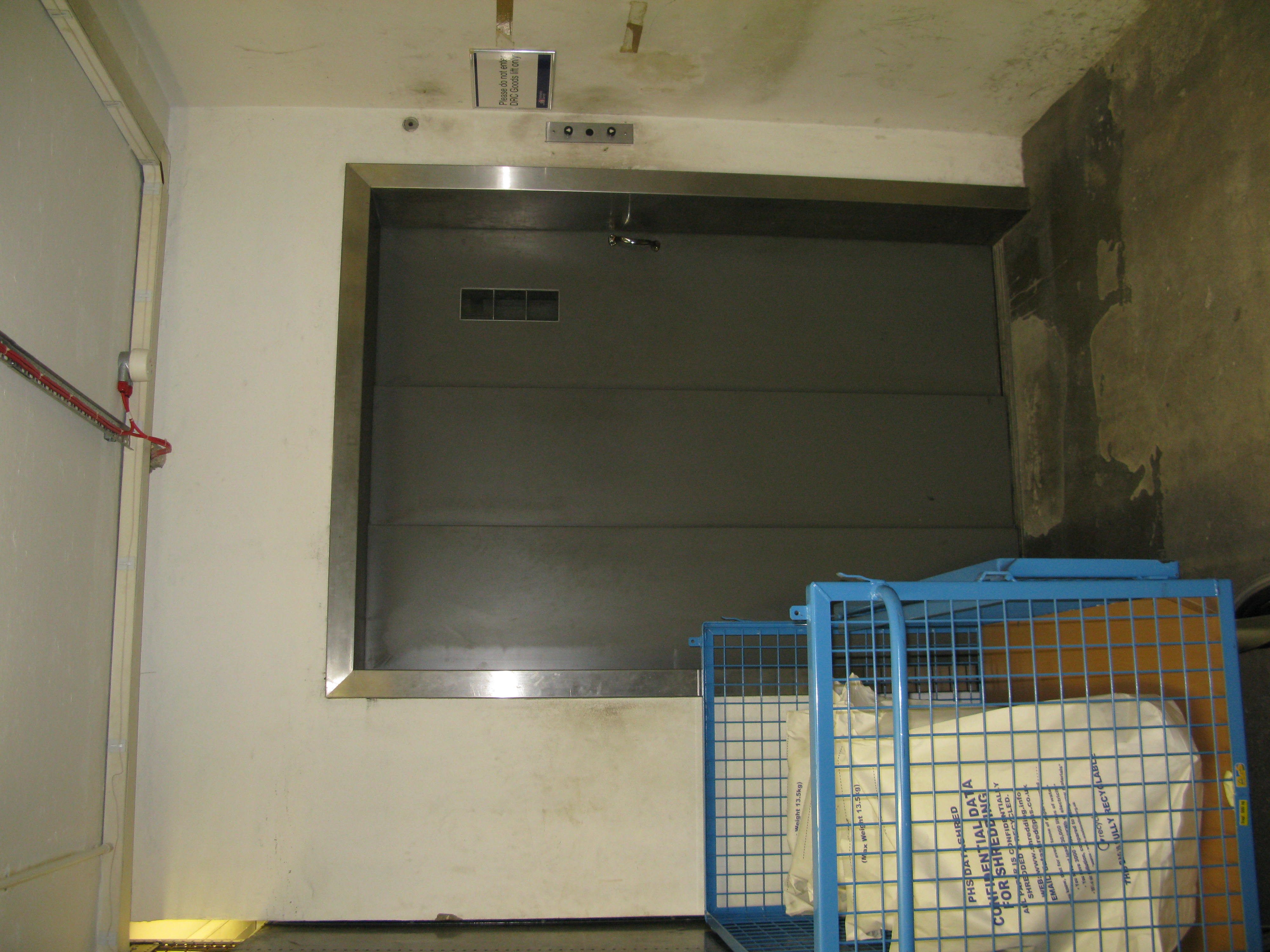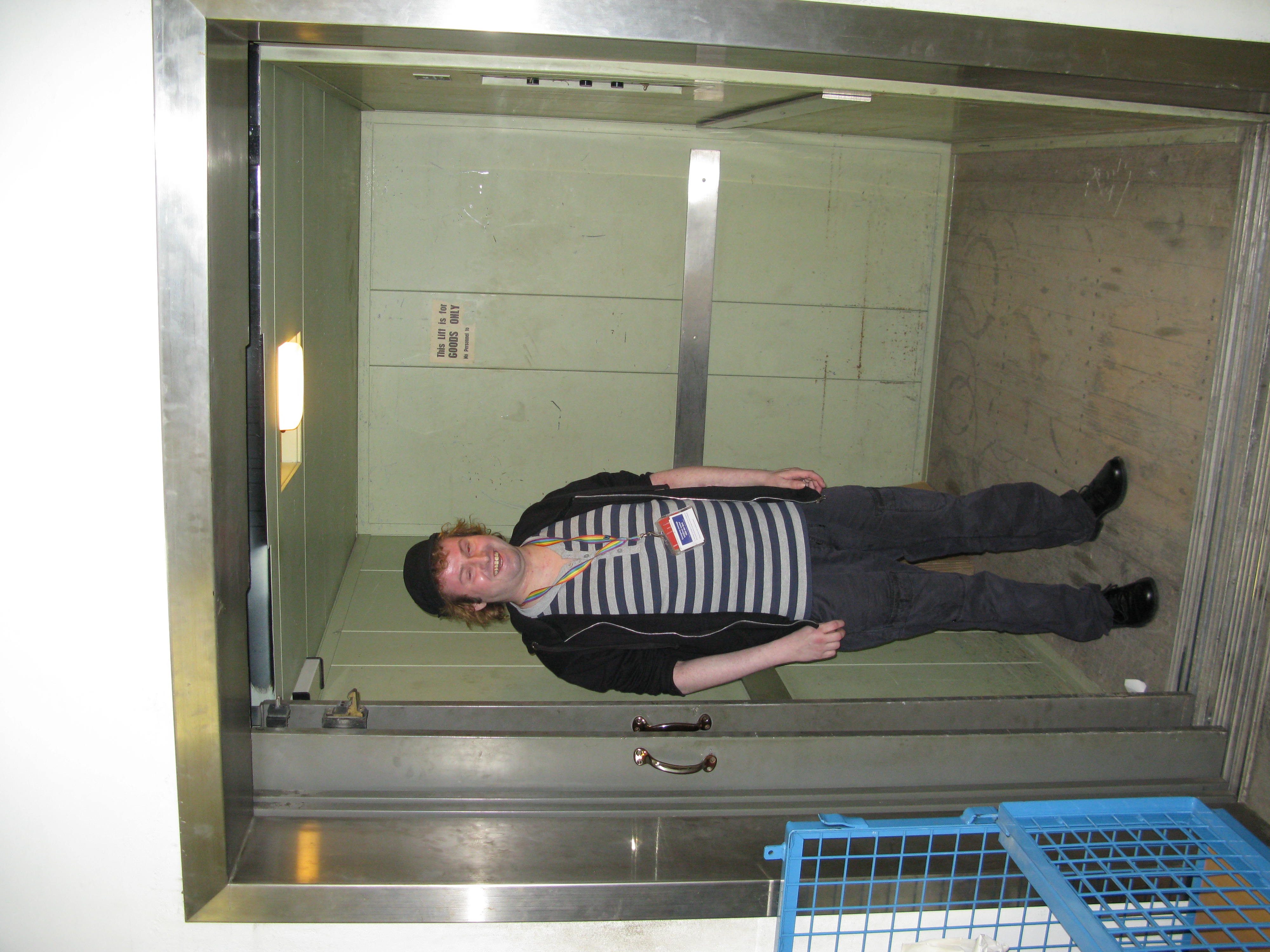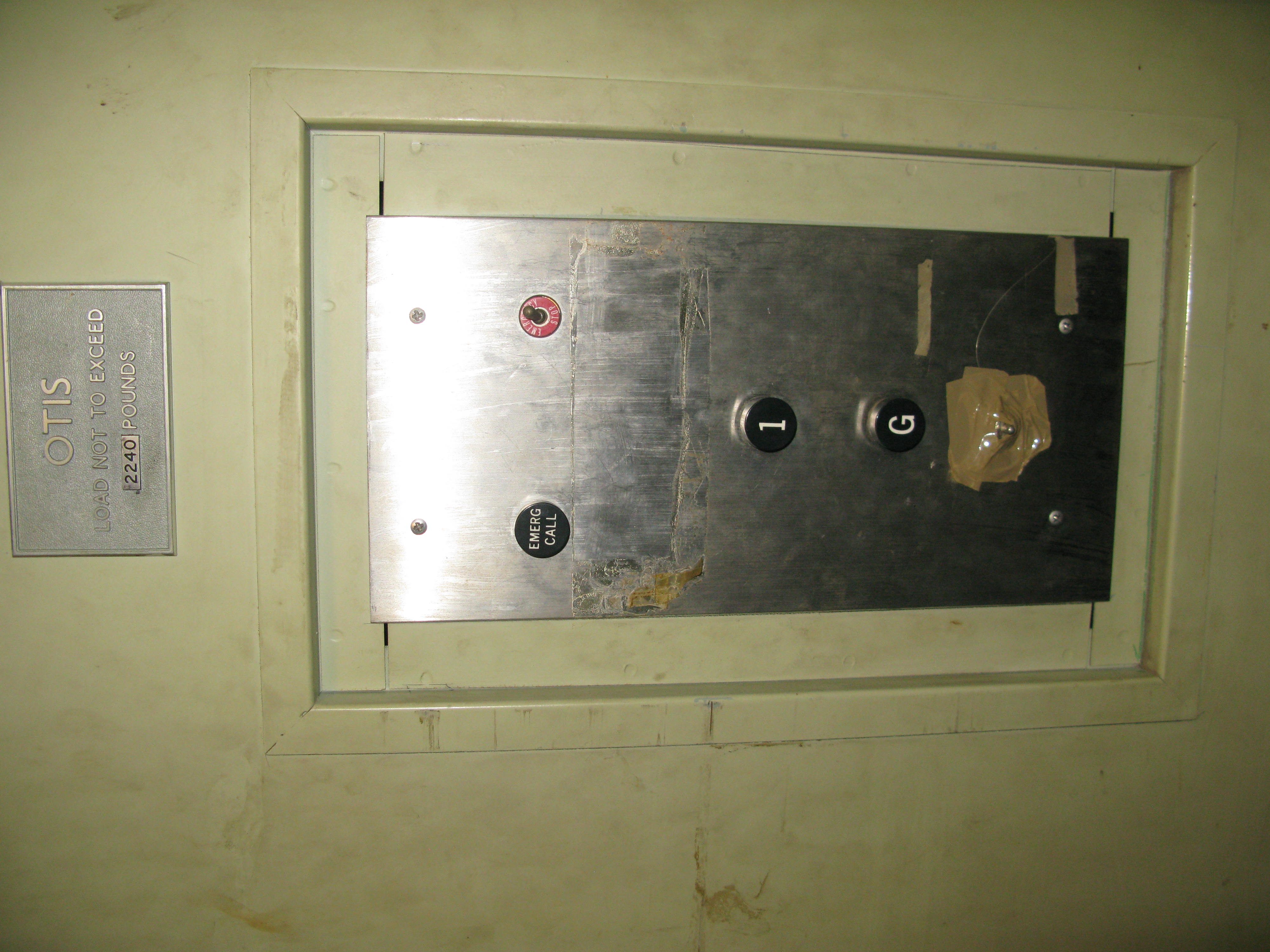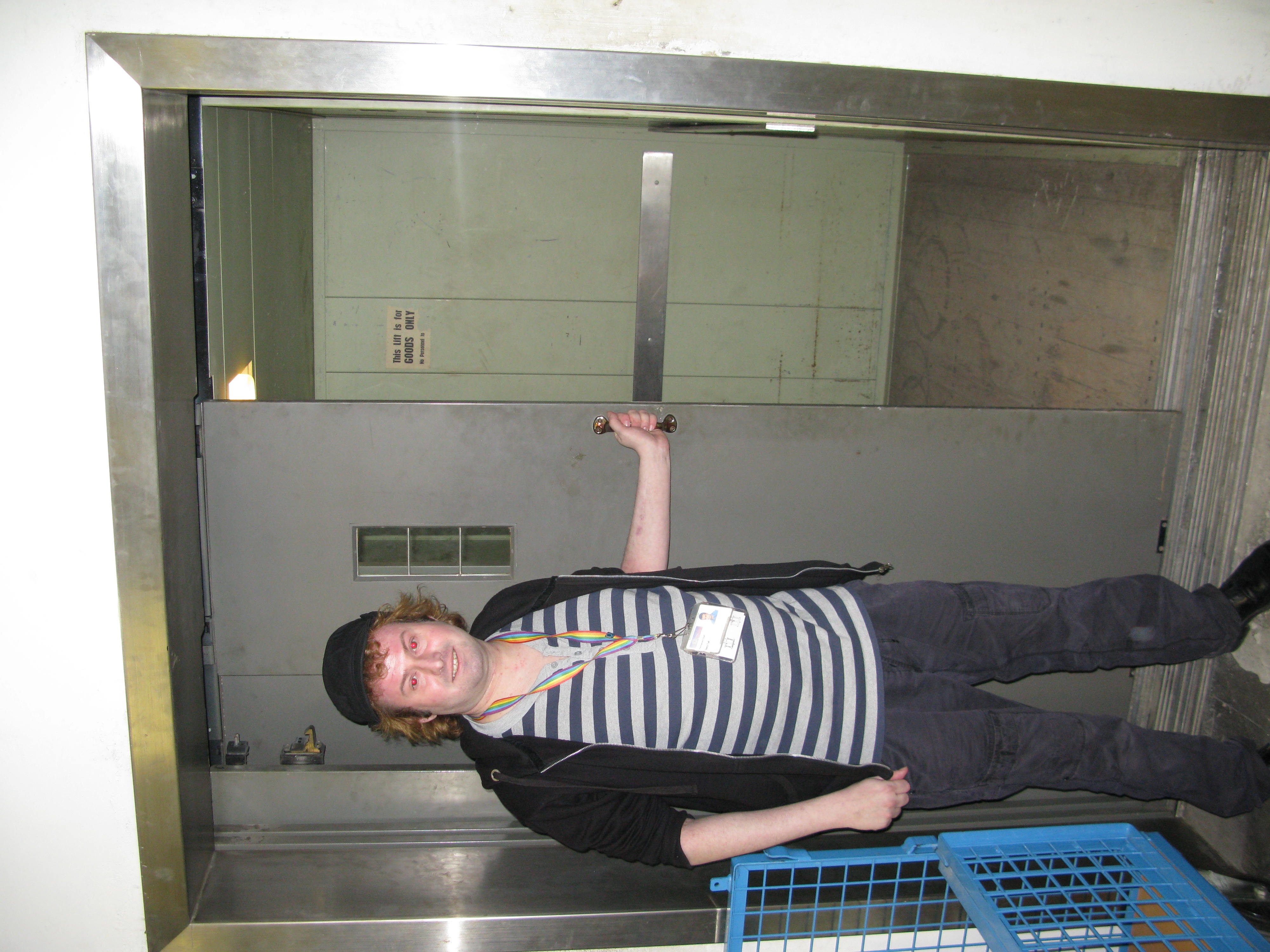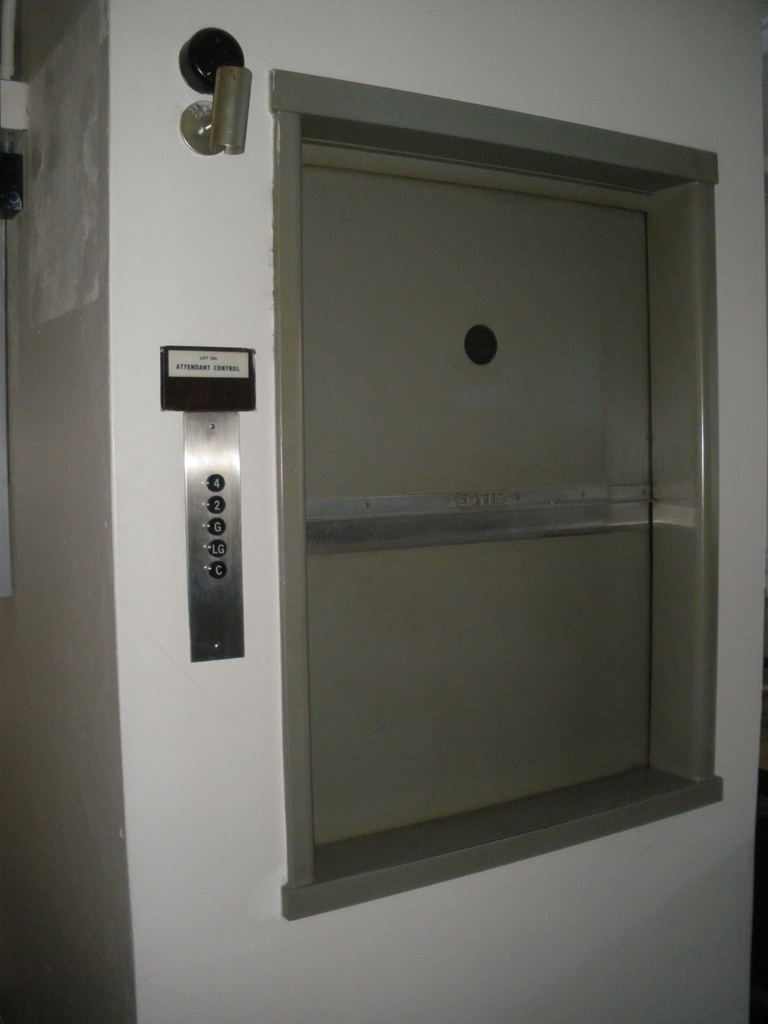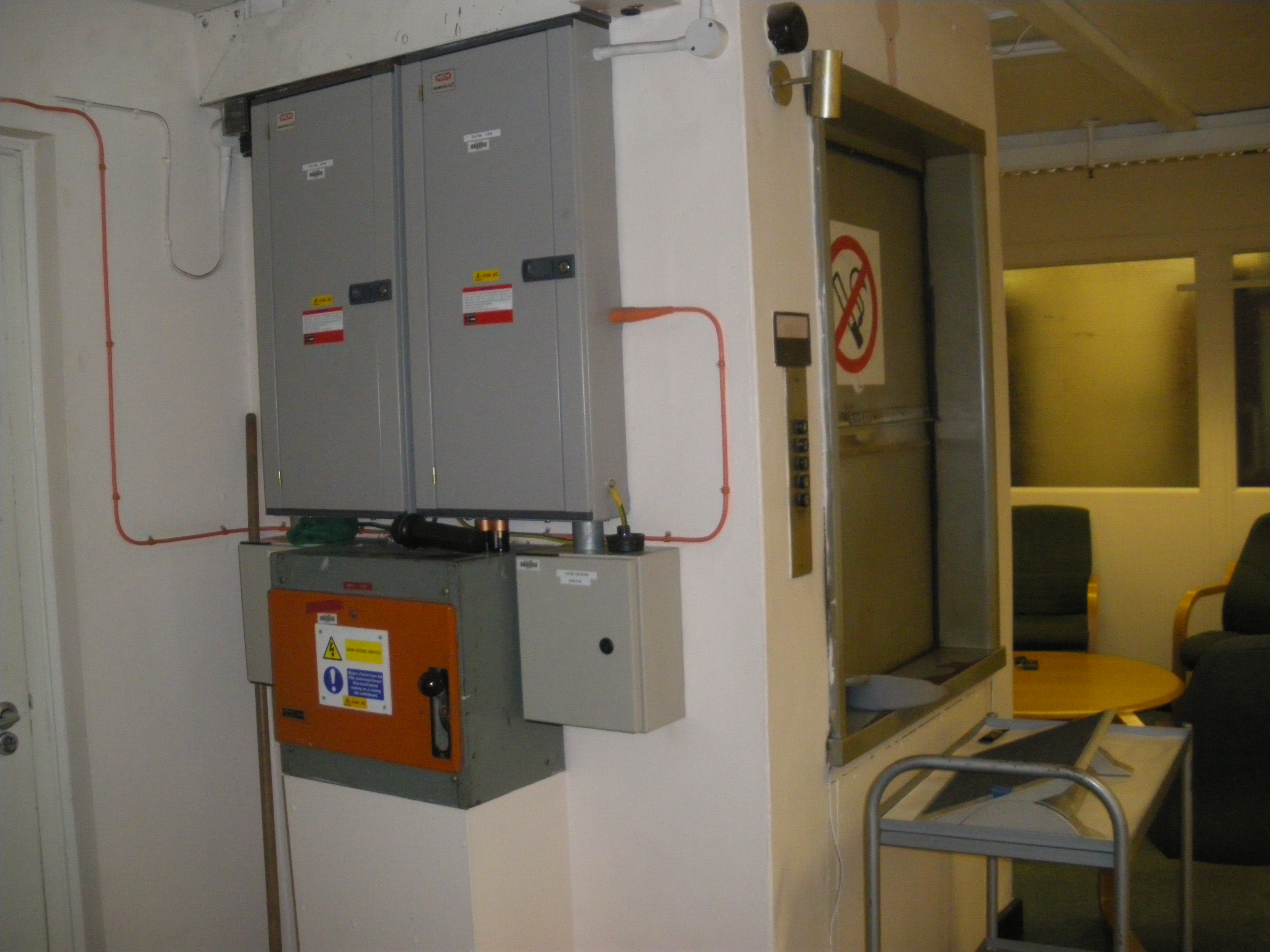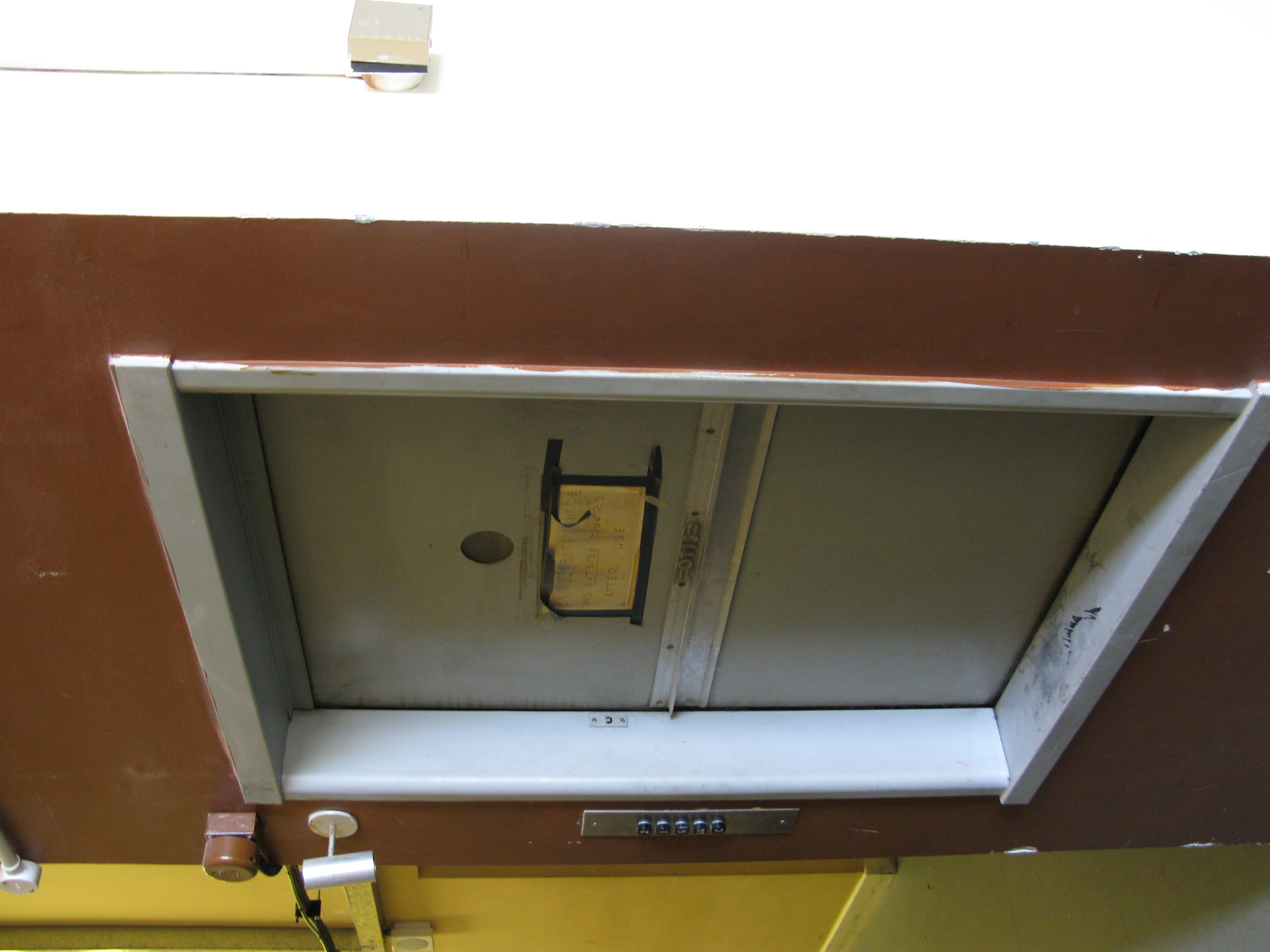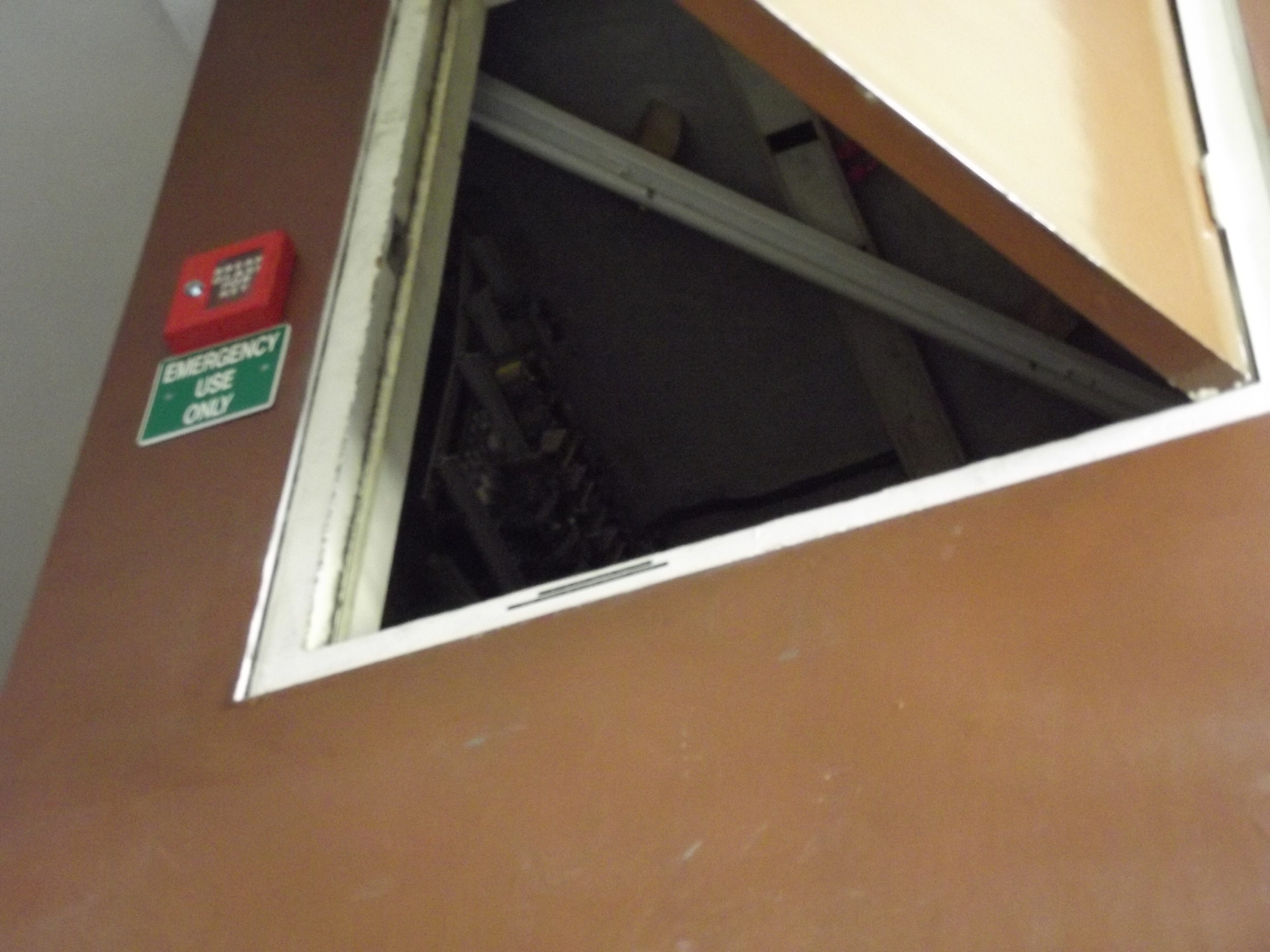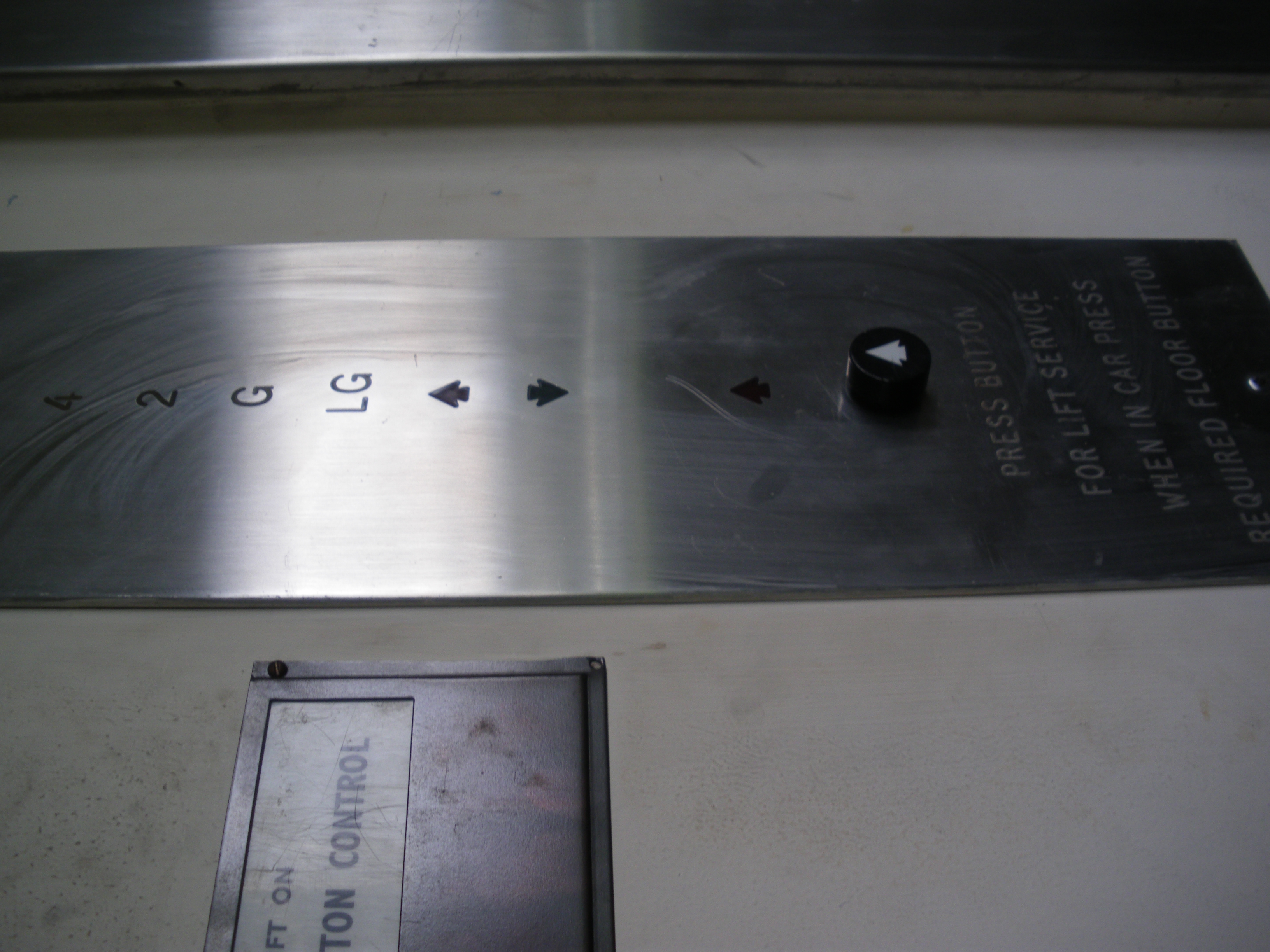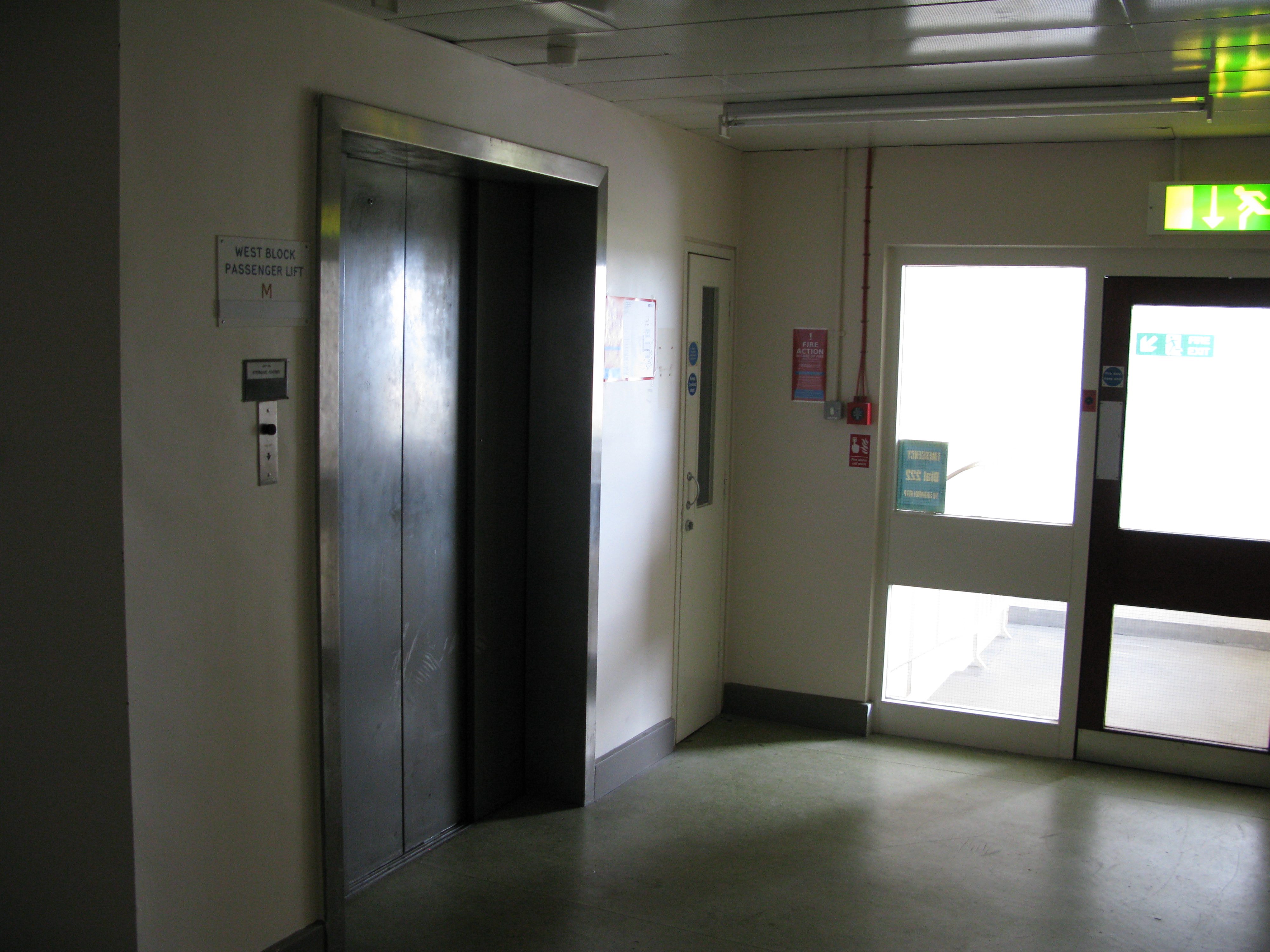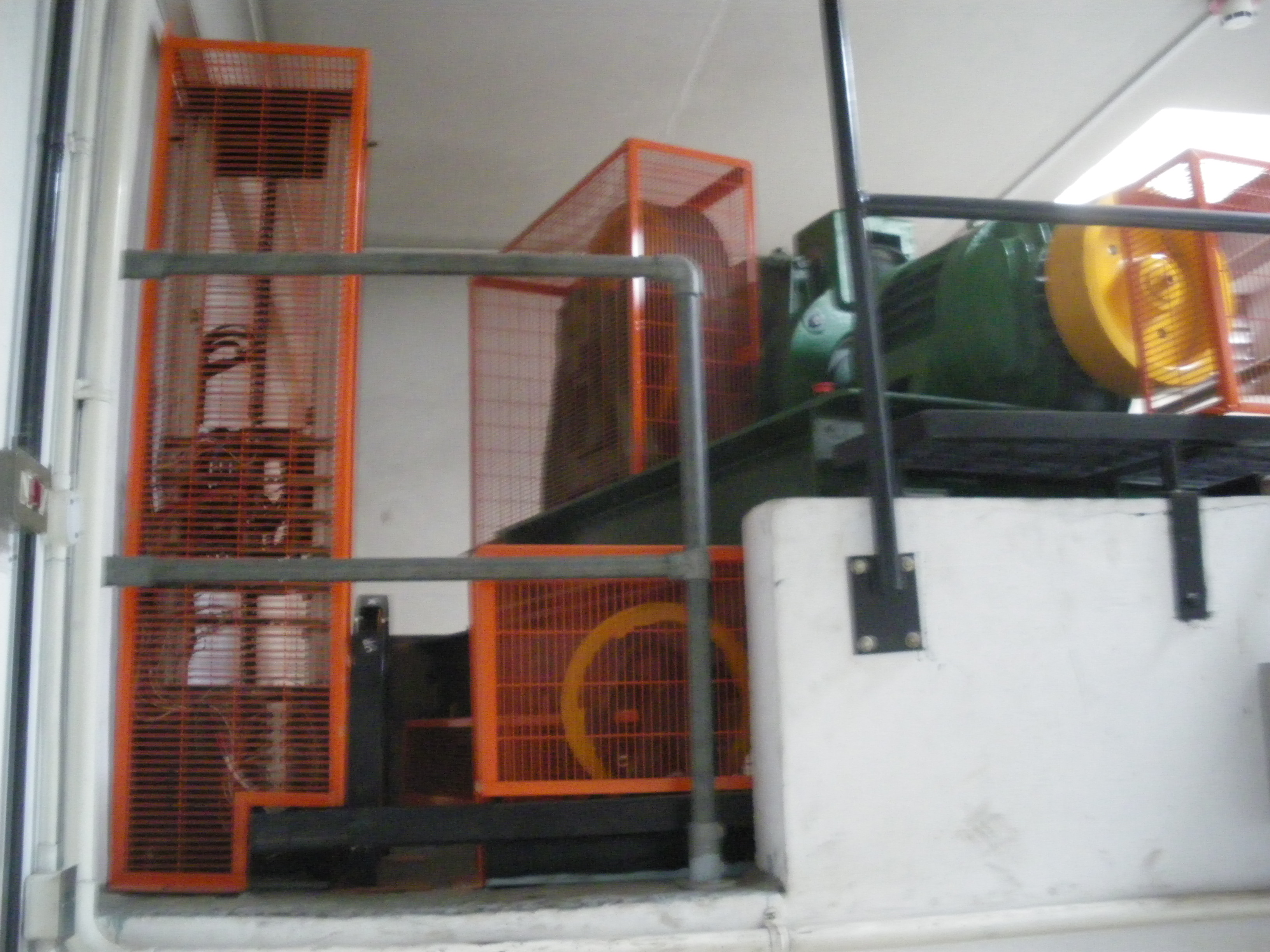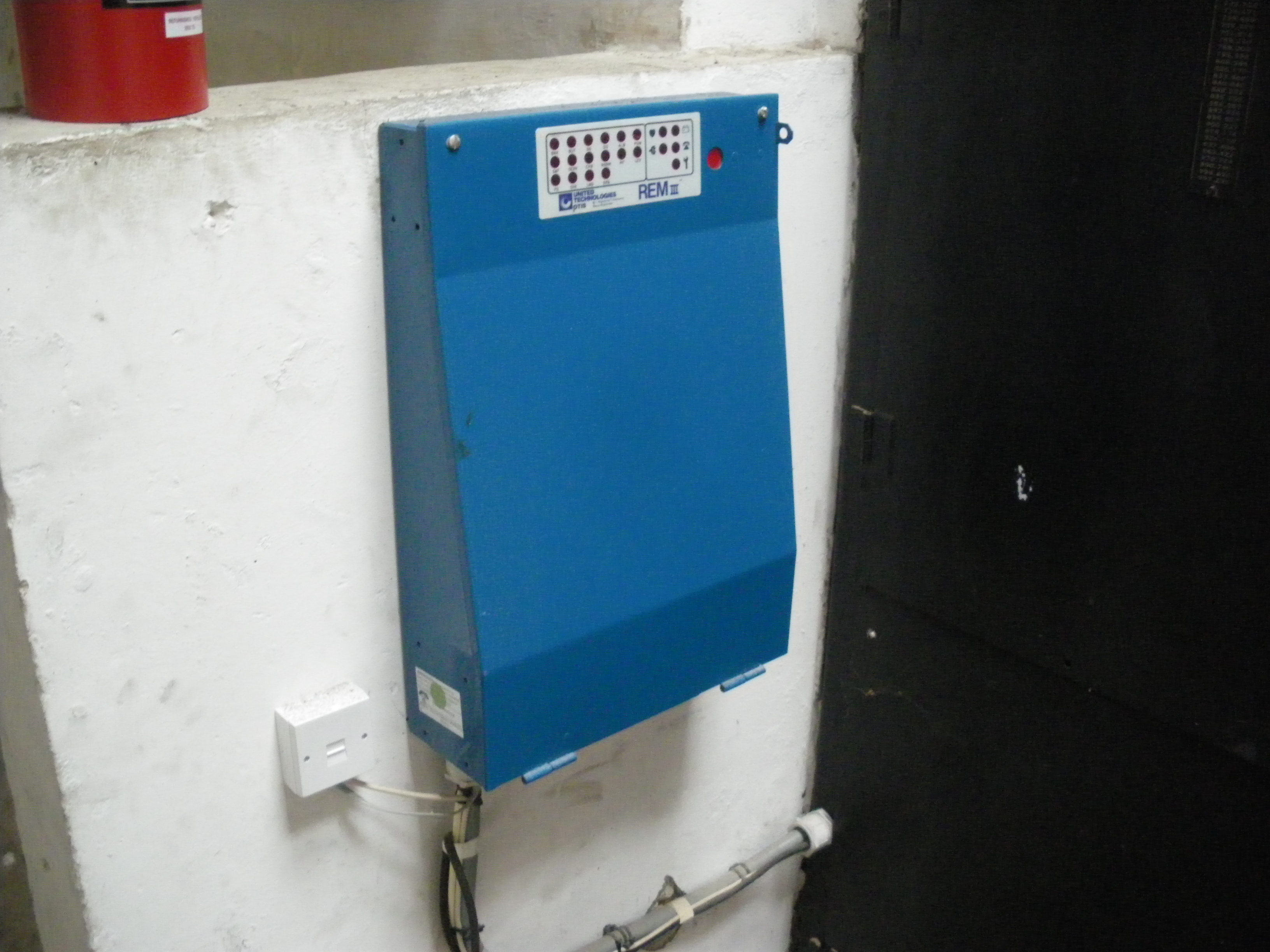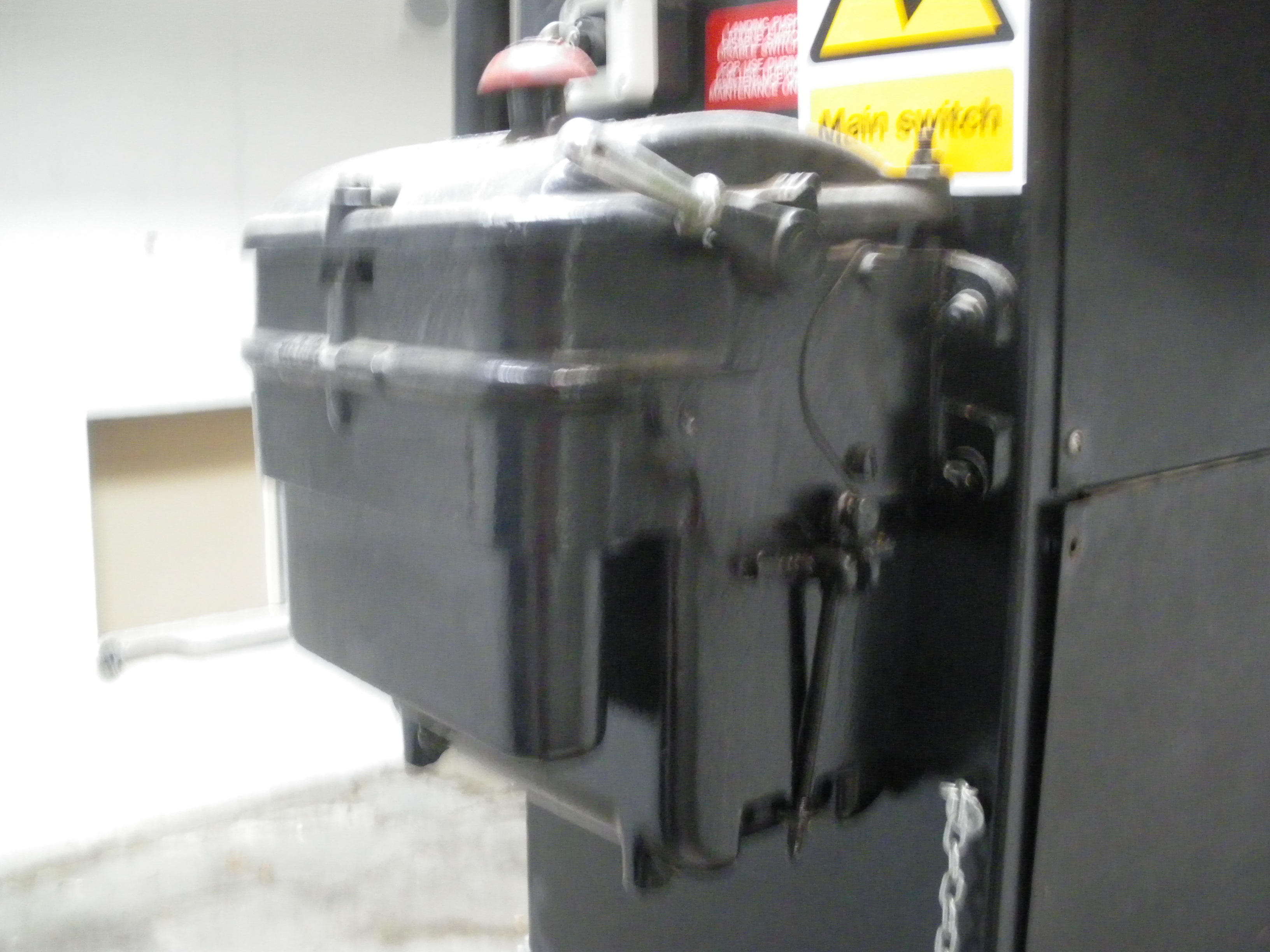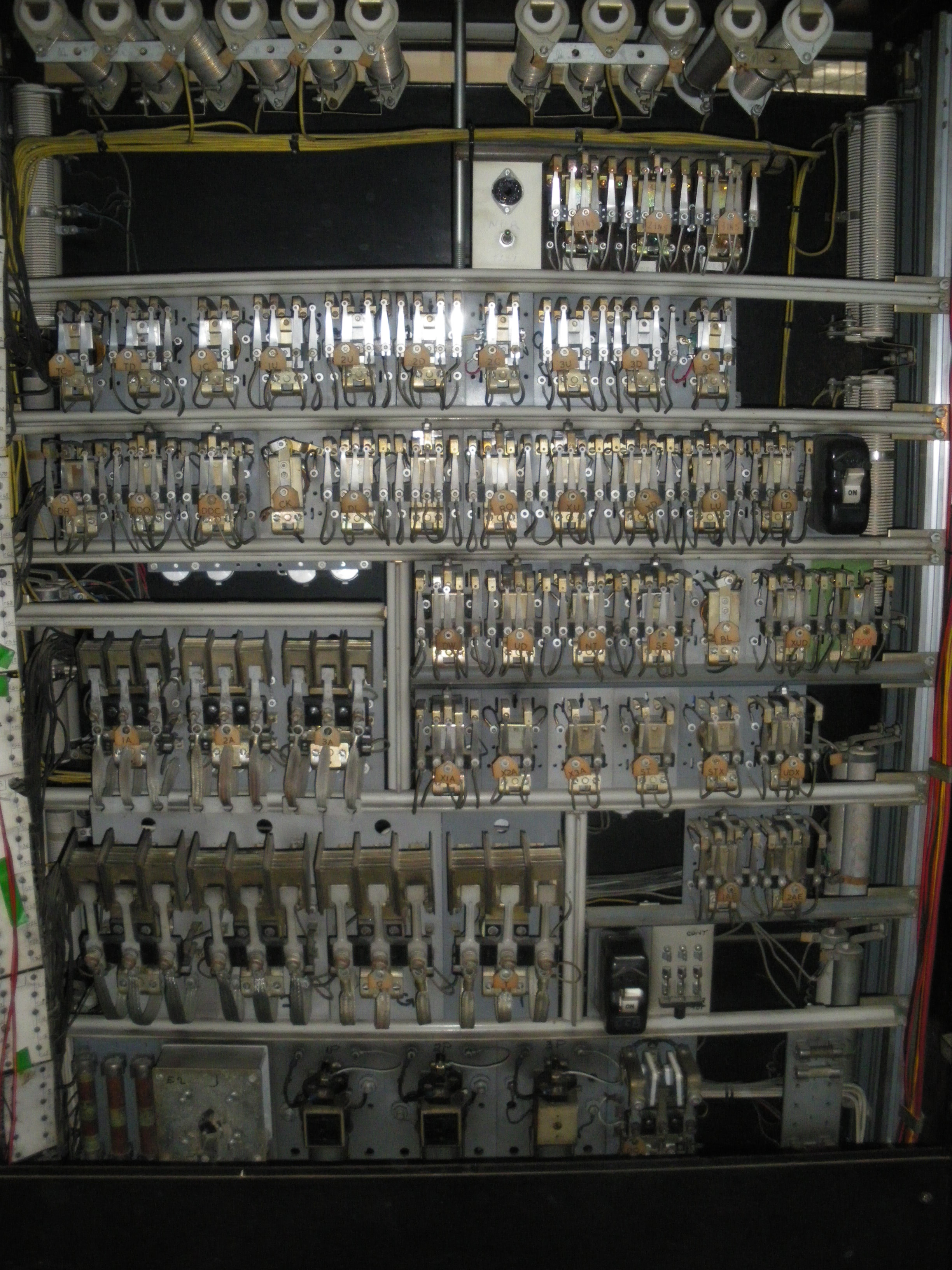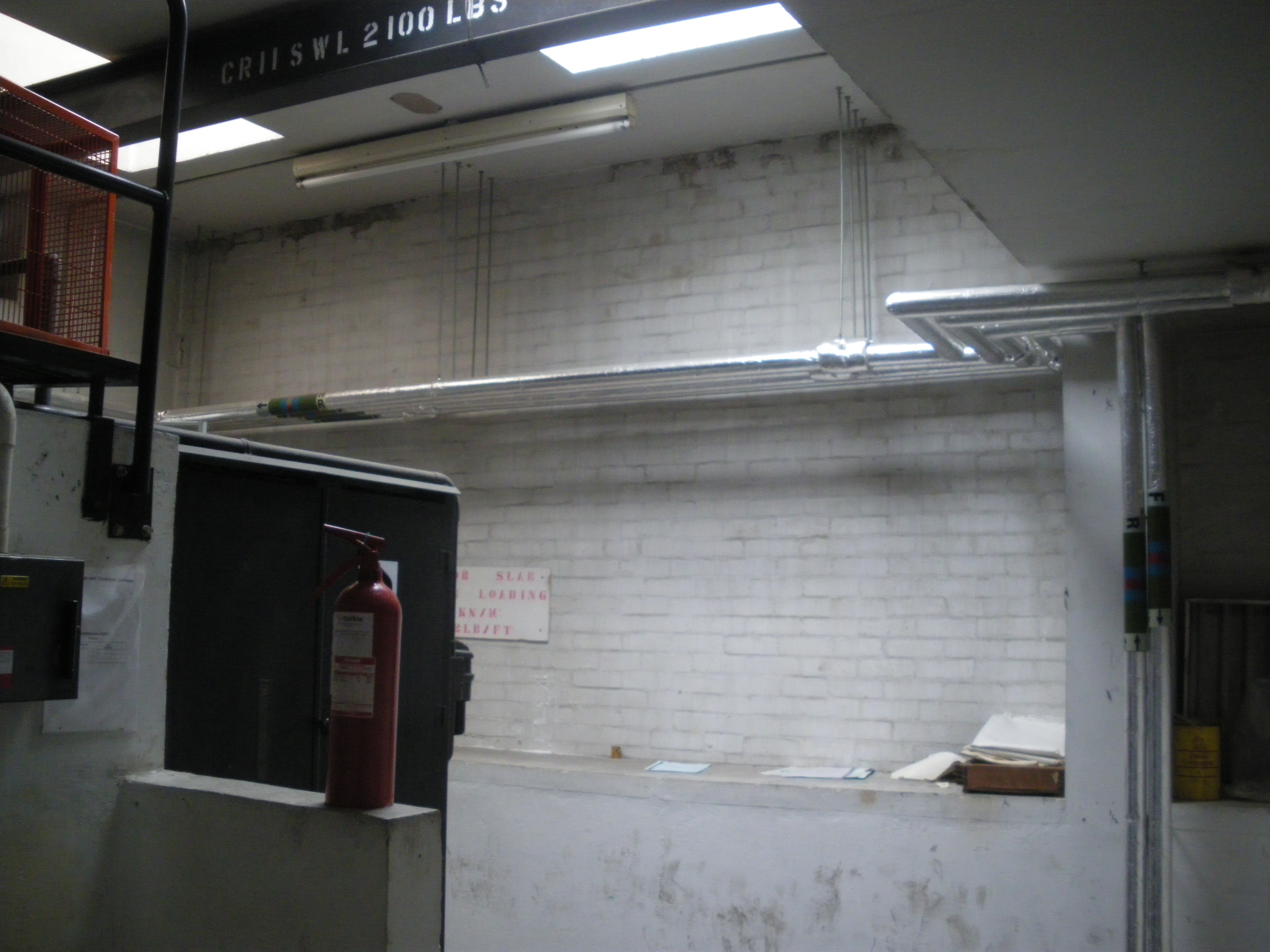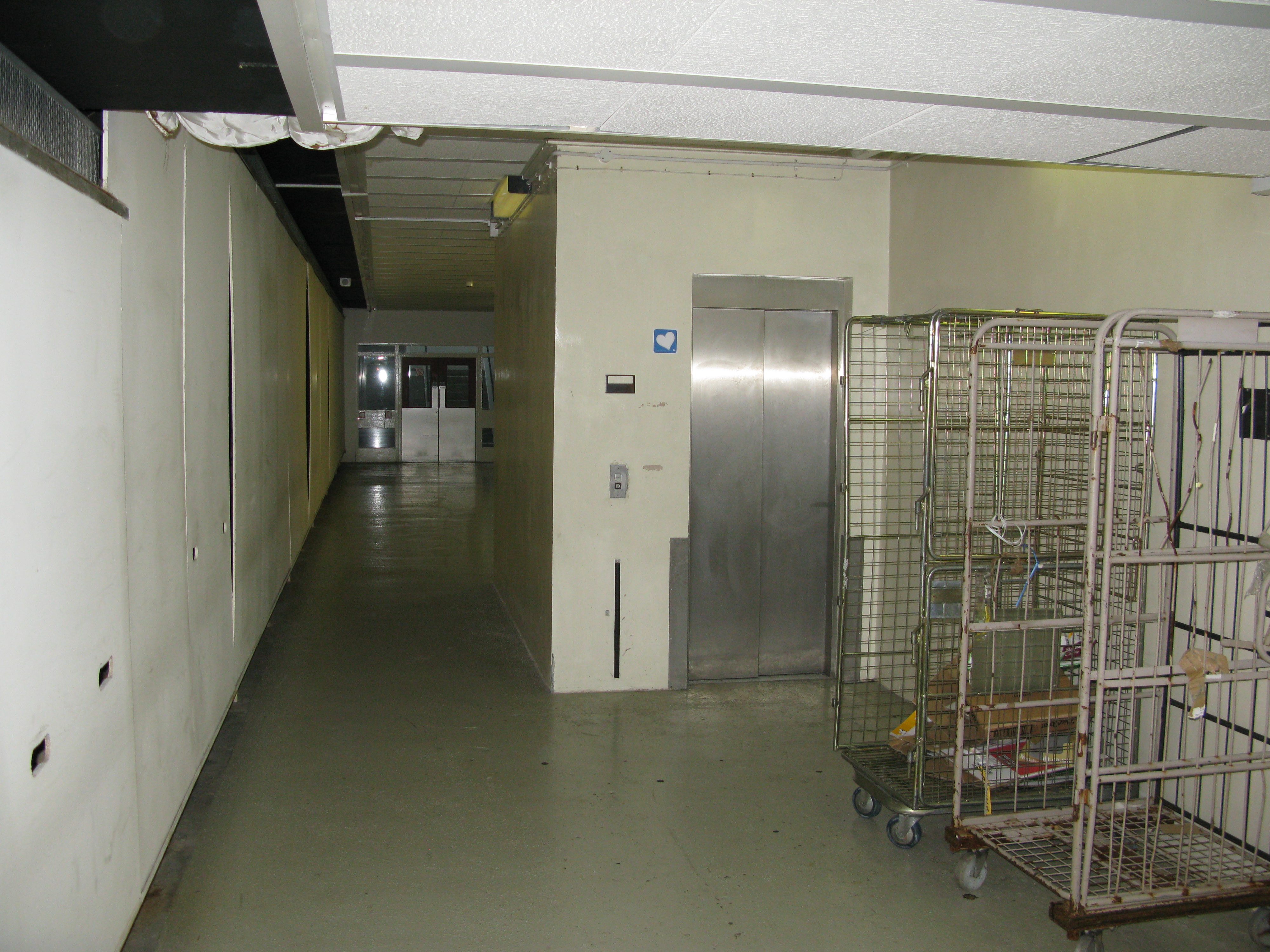The lifts around the Maybush HQ were subject to several ‘urban myths’, including that they were second hand when installed! This page will have some information about the lifts around the building for those who are either curious or just very bored!
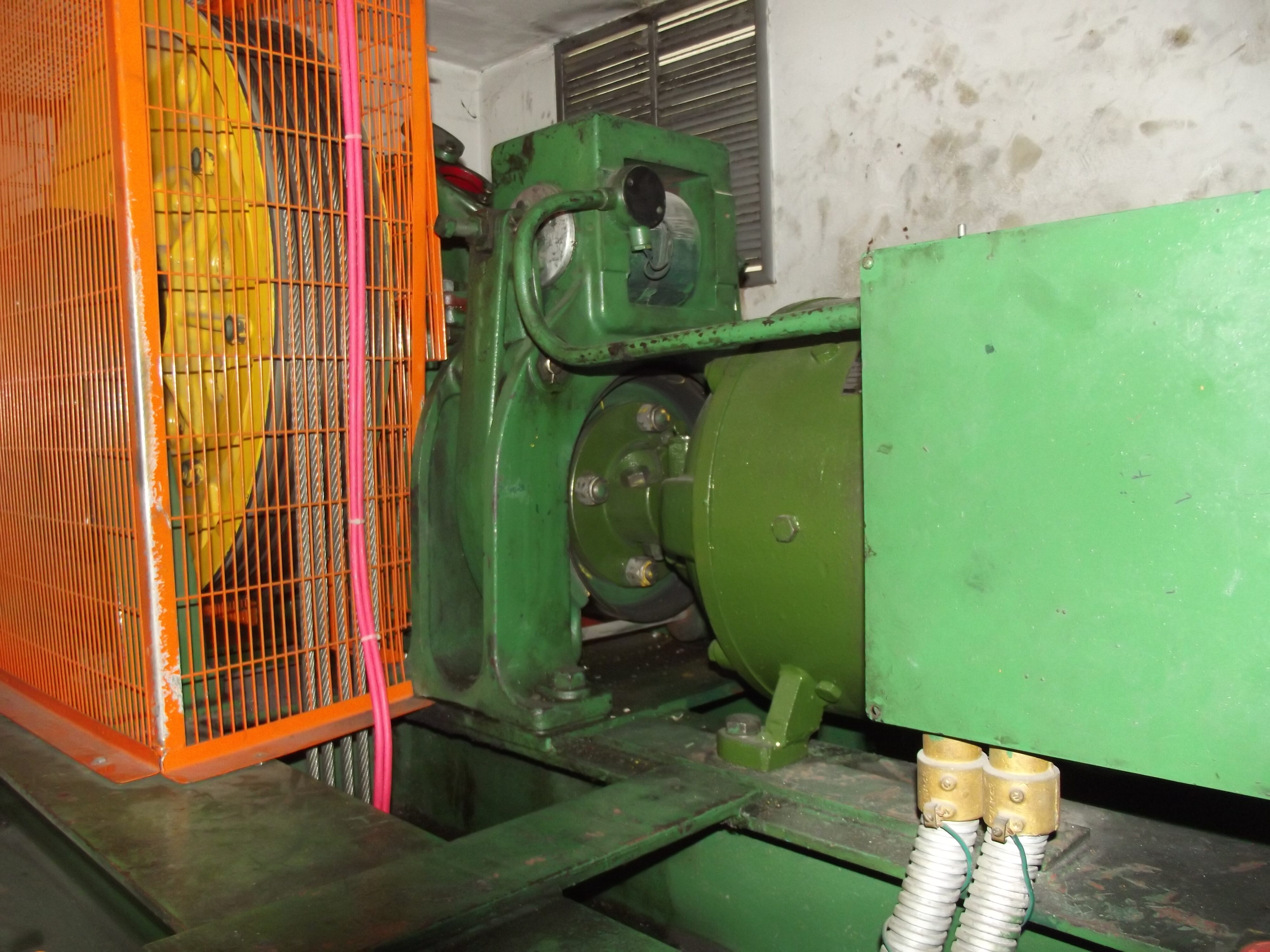
Above is a good example of ‘A’ lift’s operating machine – the motor on the right connects to a spring-loaded brake that fails shut so the lift can only be moved if that is released. When I did lift release training (probably 2007-08), we were taught how to release the brake by hand (with a special clamping tool) although when there was a real breakdown with passengers inside the lift, myself and one of the actual maintenance engineers struggled to get it moving (the idea being you gently release the brake and let the lift go down to the next floor and then open the doors by hand to let the people out). In this case, it was stuck fast and so they had to get the passengers out by ladder as the lift was stuck a metre or so below the closest floor level. However, there were about 16 people in a lift designed for 12 if I remember rightly!
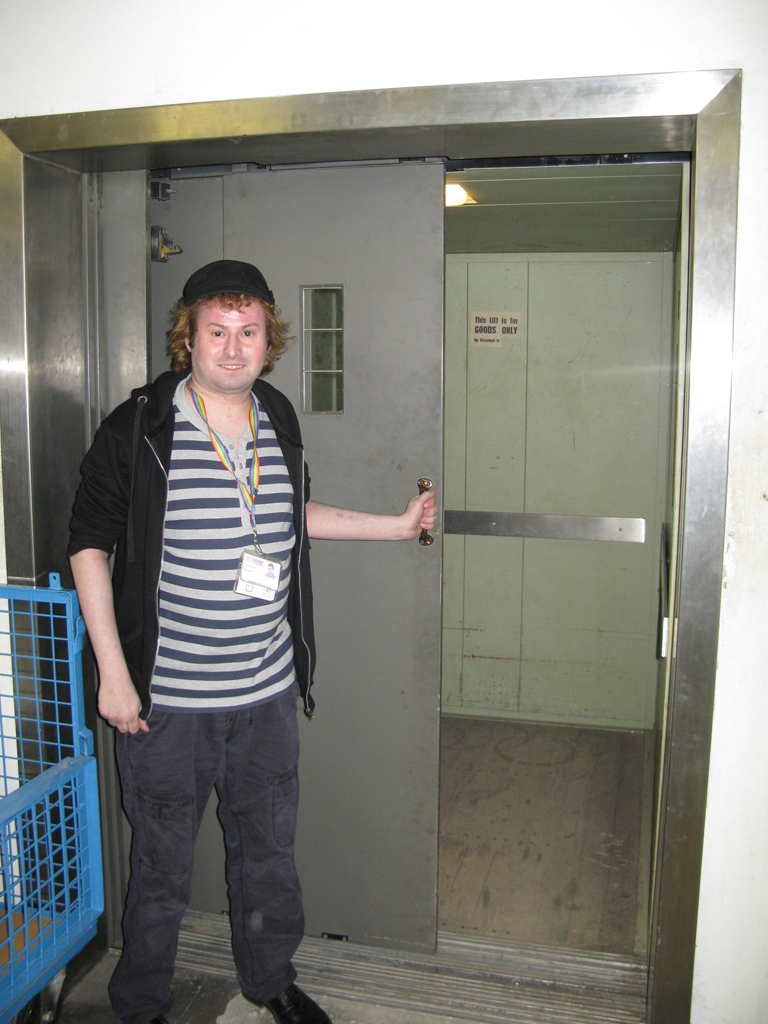
The principles of the basic automatic lift system was pioneered by Otis as early as the 1920s but obviously this equipment here is newer than that and probably much improved. By the 1980s, relay logic control systems such as this were made obsolete due to microprocessor control systems, which were smaller, used less power and improved functionality, such as digital floor displays.
All the original lifts at OSO Maybush were installed by Otis, inventor of the lift and still the world’s largest lift manufacturer. According to the original information for staff booklet, they were all ‘passenger operated and fully automatic’, although some of them also had an option for ‘attendant control’ (whether this was actually used or not, and why is unknown) and indeed they have a locked control panel containing buttons for just ‘Up’ and ‘Down’. Apart from the exceptions mentioned below, the original lifts all had circular flush metal call buttons with illuminated numbers or illuminated dots, red/green arrow signals on each landing (except for the bottom floor, which had an indicator with illuminated numbers, most of which have not worked for years). The lift cars contained a simple control panel, again with flush metal buttons and a door open and close button, as well as a separate red/green up/down arrow signal, an attendant control box, an alarm (which looks like a later addition) and an indicator above the doors with the floor numbers on. The buttons are supposed to light up when you press them but some don’t – presumably a bulb or relay contact is broken somewhere.
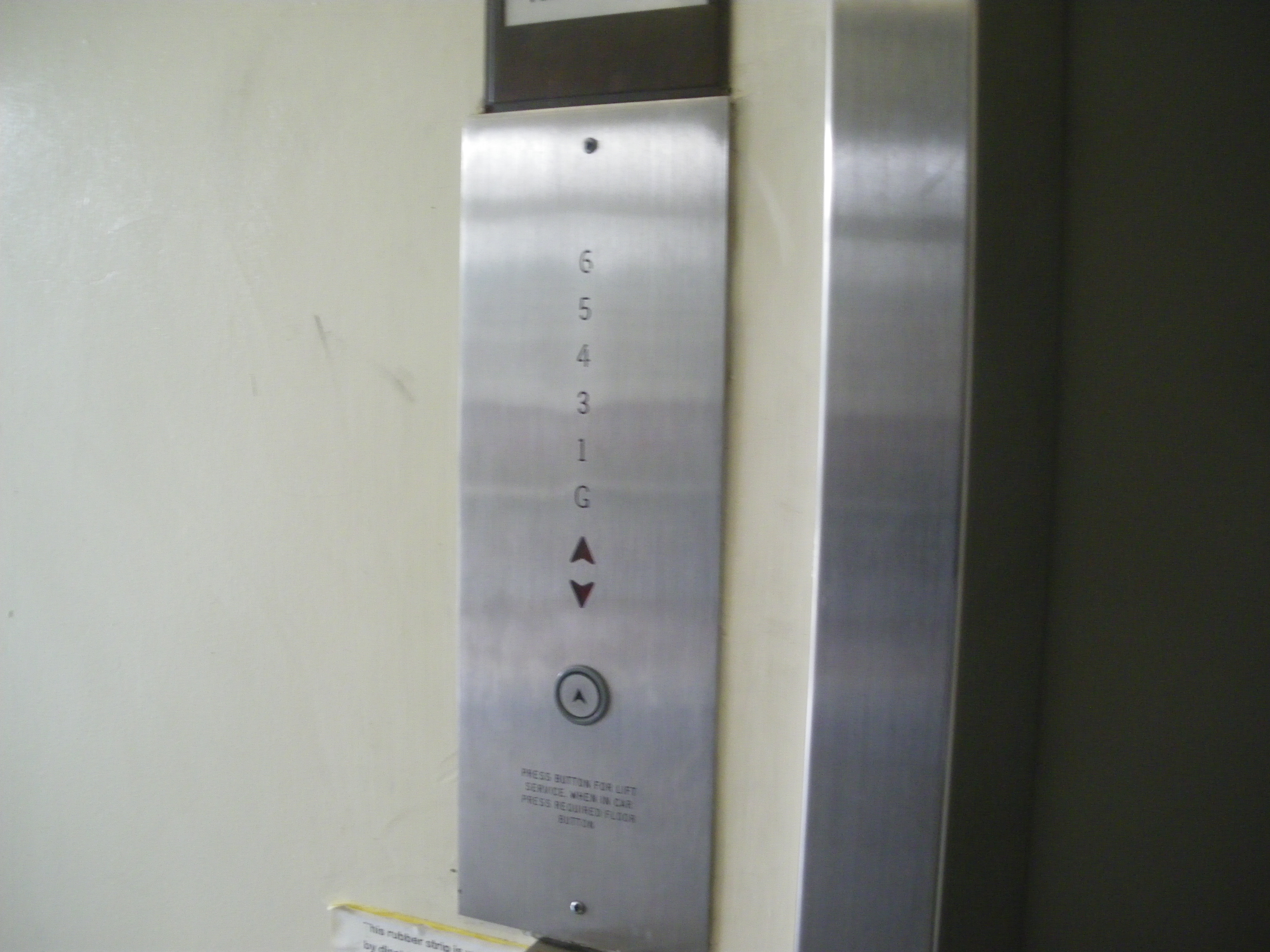
The lifts used standard OTIS equipment, typical of that used at the time, including a mechanical floor selector (a fascinating device that is connected to the lift car by a metal tape and moves up and down to tell the control system where the lift is in the shaft).
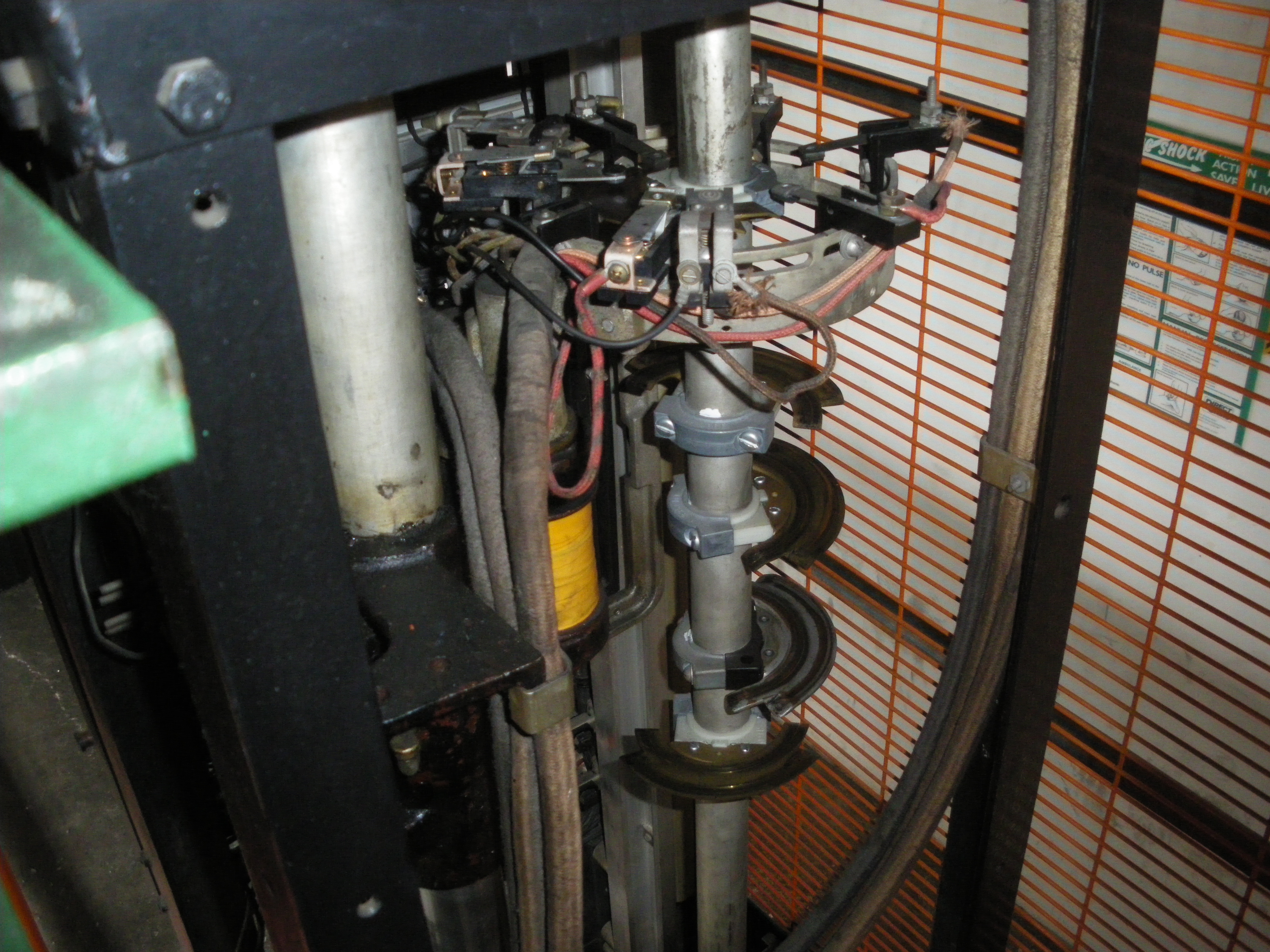
The selector was connected to a rack of relay-based control logic equipment, which contained relays, contactors and large resistors (plus loads of wiring!). The system is referred to as ’21UCL’ although I have also seen references to 10UCL.
The control equipment drove a combined motor-generator set that converted AC electricity to DC electricity – this then drives the main motor.
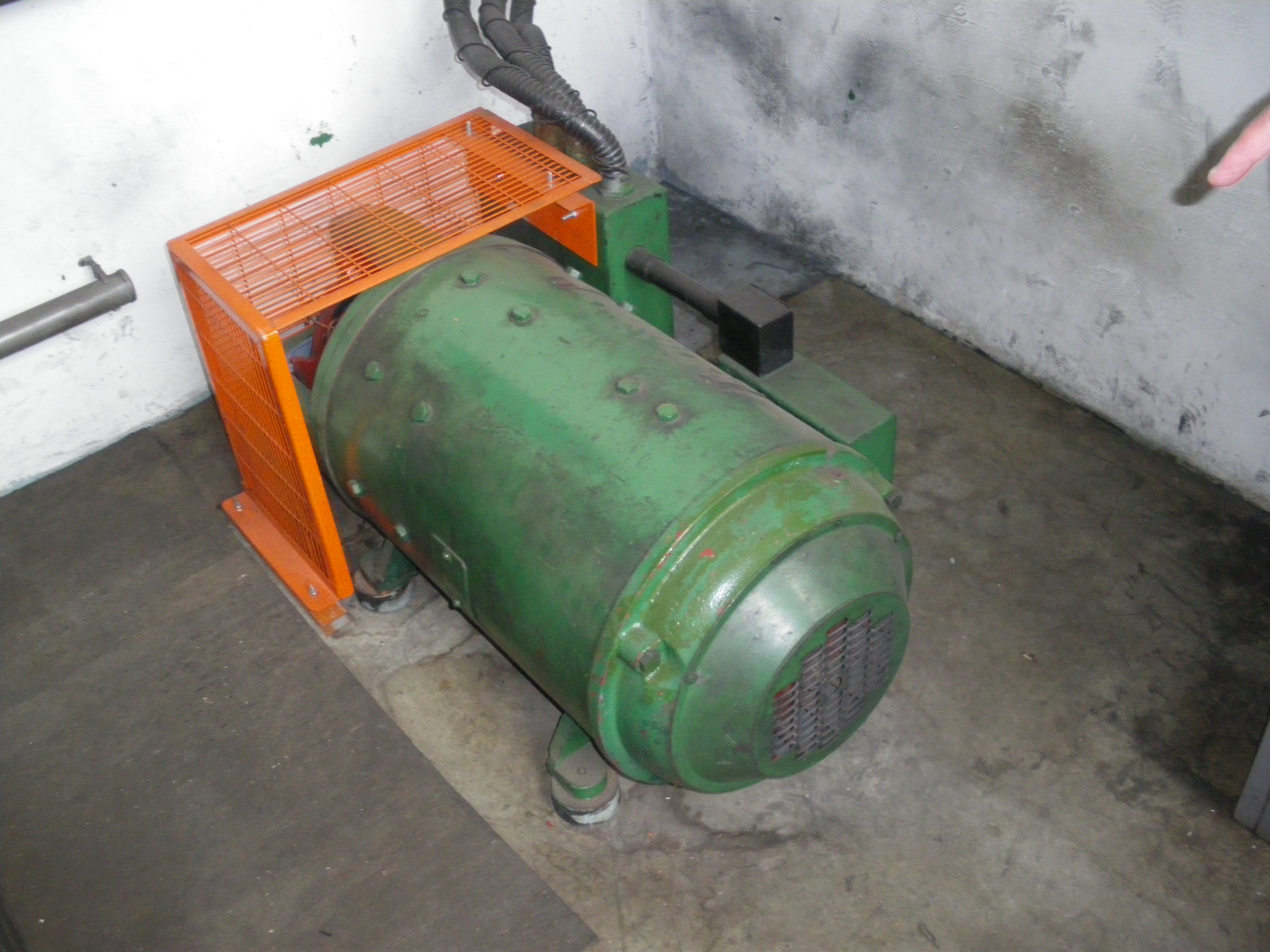
The lifts were very safe, they had an electromechanical brake that held the lift in place when the motor was not running and a governor – a standard safety feature of all traction lifts that stops the lift from plummeting in the very unlikely event that the ropes snap (the main ropes are made of steel and designed for a load ten times greater than they are ever likely to have to carry).
Kind thanks to fs³ for permitting me to photograph some of the historic lift equipment.
The lifts that have been replaced have more modern features than the original ones. They were installed by Guideline Lifts in around 2002-03 and are: B, F1, F2 and G. They are controlled by a microprocessor and sensors in the lift shaft. They have dot matrix LED indicators on every floor indicating which floor the lift is at; these also display moving arrows when the lift is in motion and can also display messages such as ‘Lift on maintenance’ or ‘Lift on car preference’. ‘Car preference’ is one of the features of the newer lifts; it allows those who have an appropriate key to ‘lock’ the lift so it will only respond to calls made from within the lift car and not to calls from other floors. This is very useful when moving goods. The car light and fan can also be switched on or off using a key. The newer lifts also feature Braille on the call buttons and voice announcements indicating the current floor, opening and closing of the doors and the current floor on arrival. The doors take longer to close than on the original lifts, this is supposedly for safety reasons but is annoying to passengers waiting for the doors to close. Unlike the original lifts, there is no ‘door close’ button, however the doors can be made to close immediately by holding down one of the floor buttons.
T?he electromechanical OTIS relay cabinets and floor selectors were replaced with one cabinet.
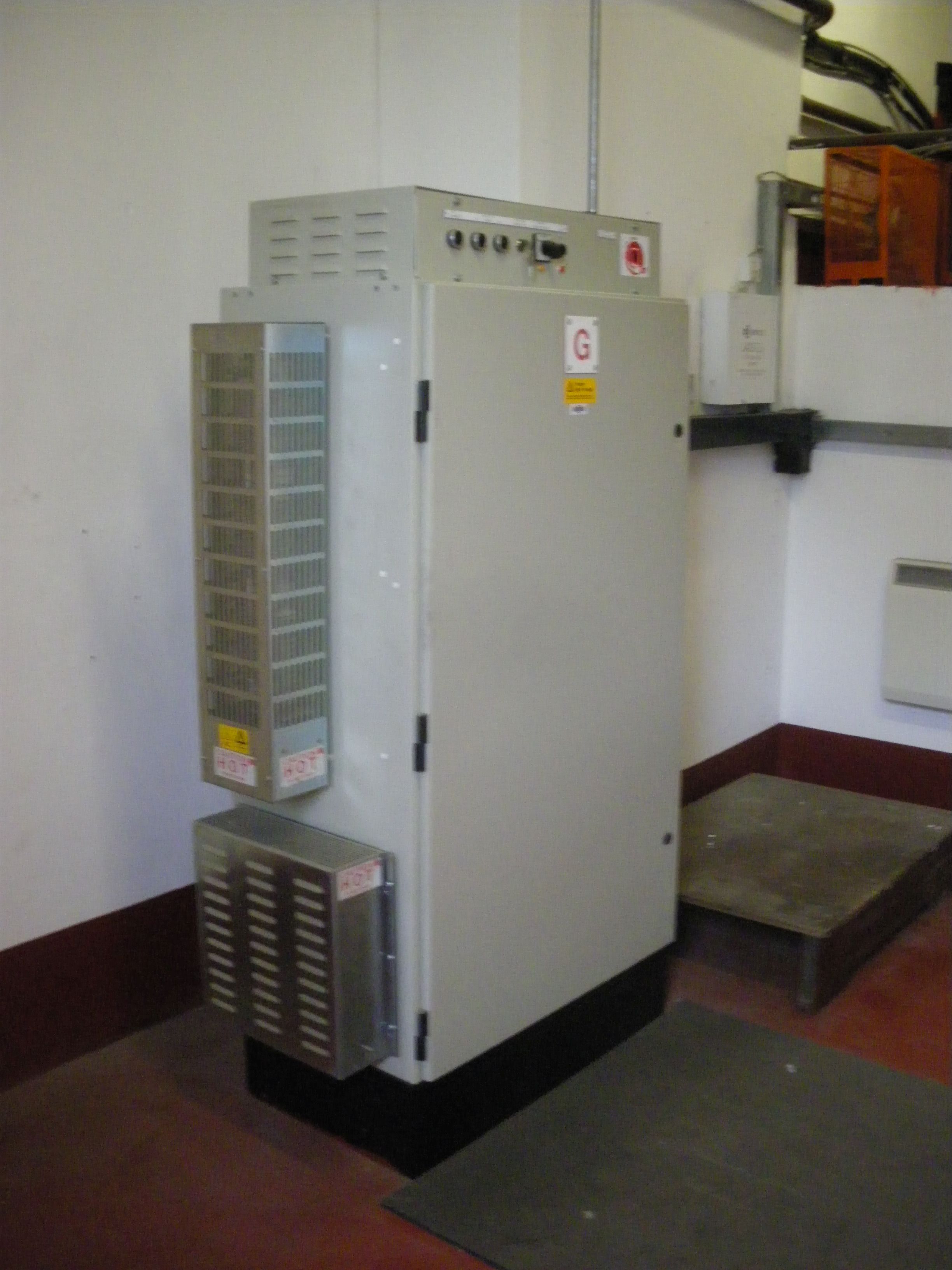
The lifts in detail
Here is a detailed breakdown (appropriate word!) of all the lifts at OS HQ. For a map showing the locations of each lift, please see Maybush.
A lift
- Installed: late 1960s
- Make: OTIS
- Type: DC traction
- Floors served: LG, G, 1, 3, 4, 5, 6
Notes: not the most used of lifts. ‘A’ lift broke down in winter 2006 (I think) when it was overloaded – 16 persons in a lift designed for 12! An attempt was made to hand-wind the lift down to the next floor but it would not budge so the passengers had to be rescued by ladder. It has since been mothballed due to ‘Major Component Failure’, although sadly, I don’t know the exact reason.
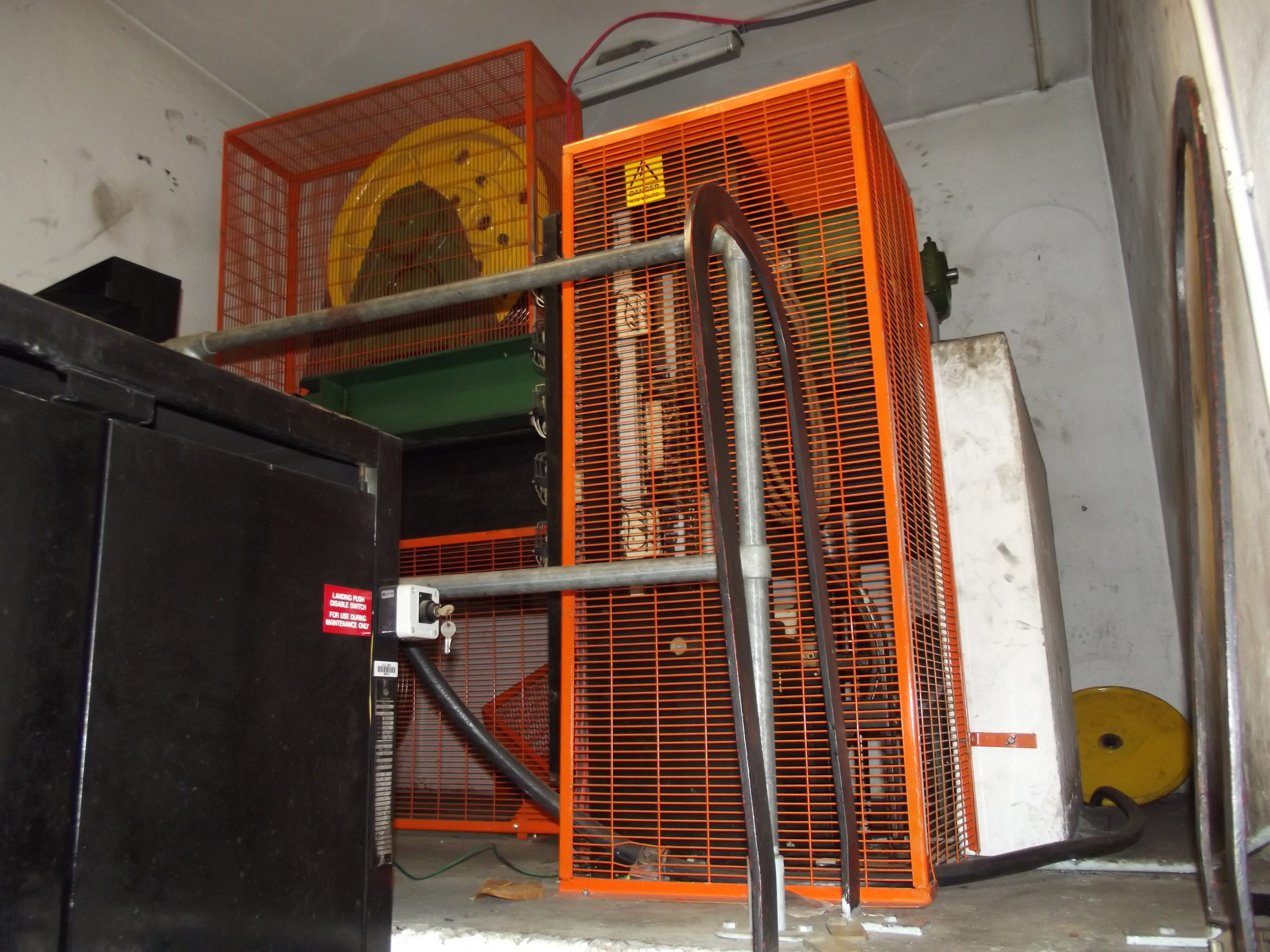
A lift’s machine (sheave and selector), 24 Sep 2011 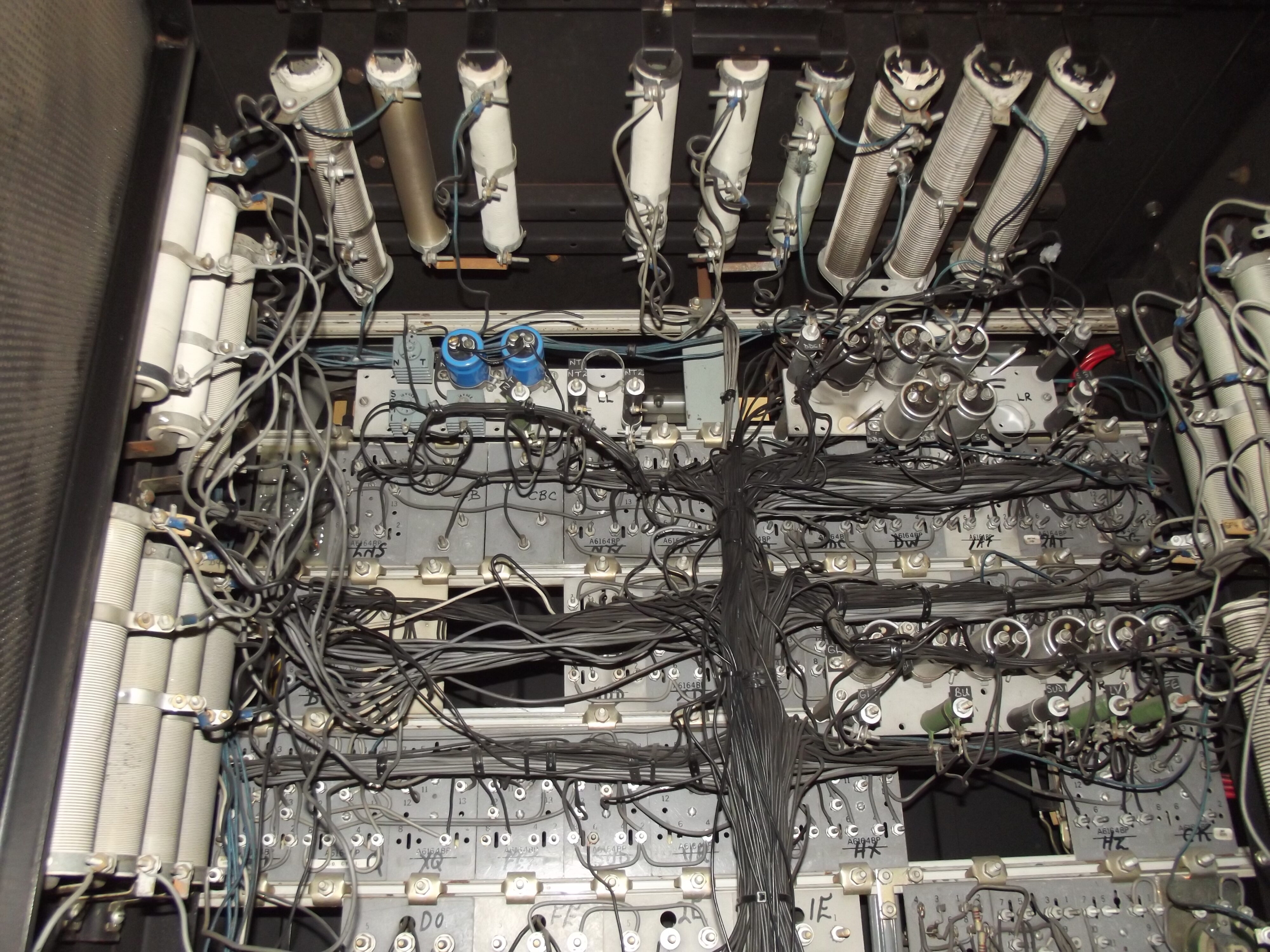
Rear of A lift’s Otis lift control cabinet, 24 Sep 2011 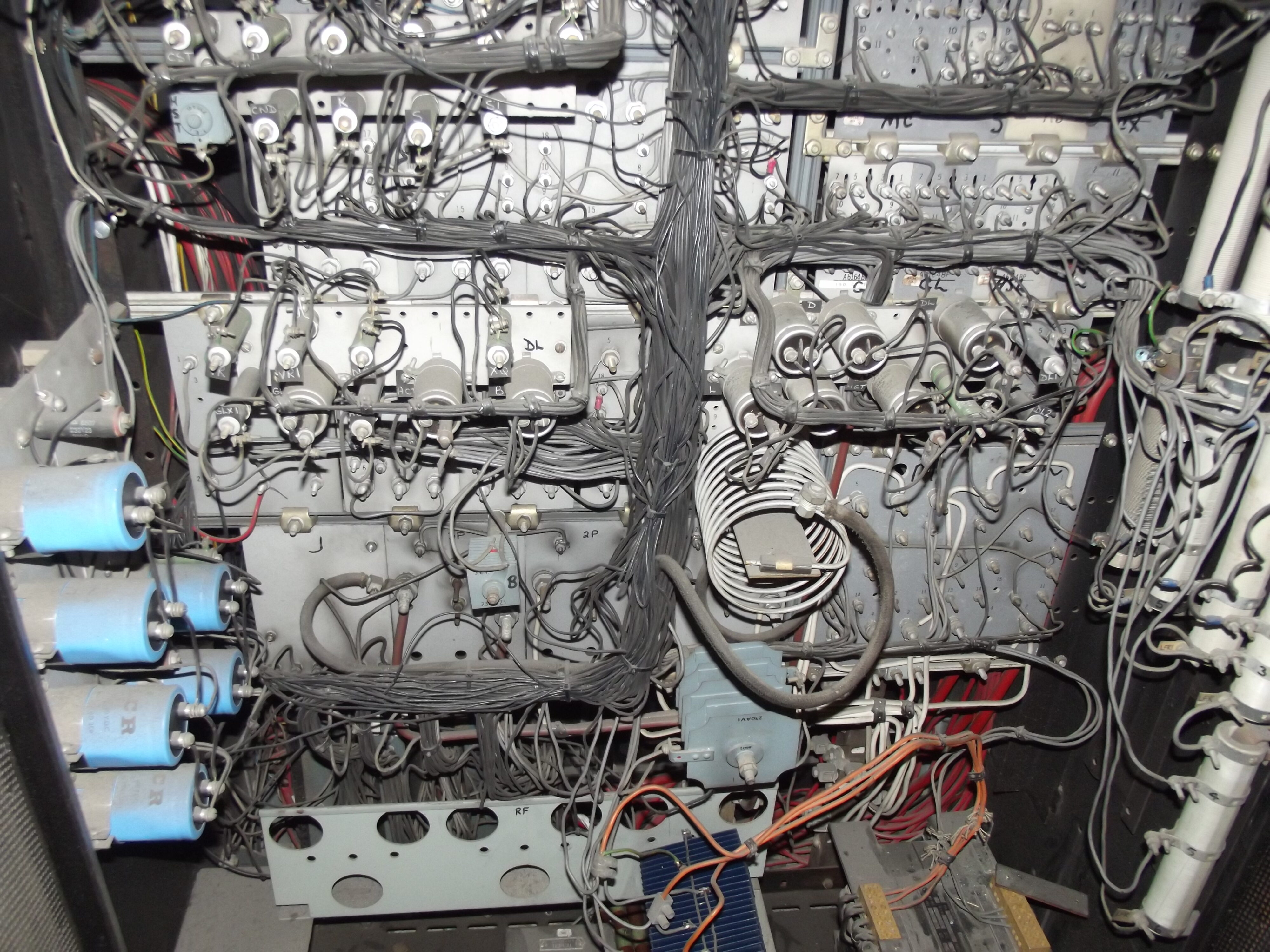
Rear of A lift’s Otis lift control cabinet, 24 Sep 2011 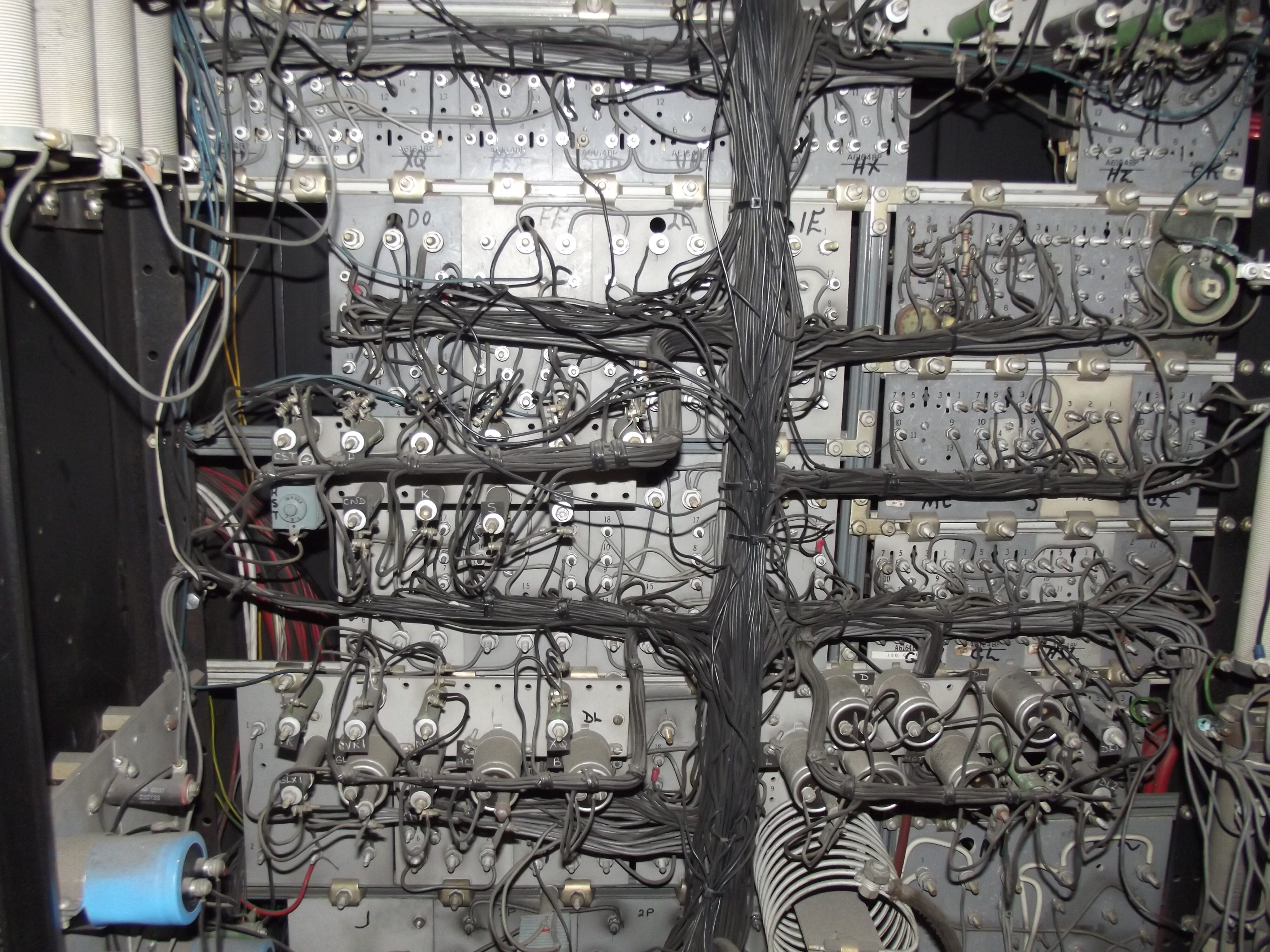
Rear of A lift’s Otis lift control cabinet, 24 Sep 2011 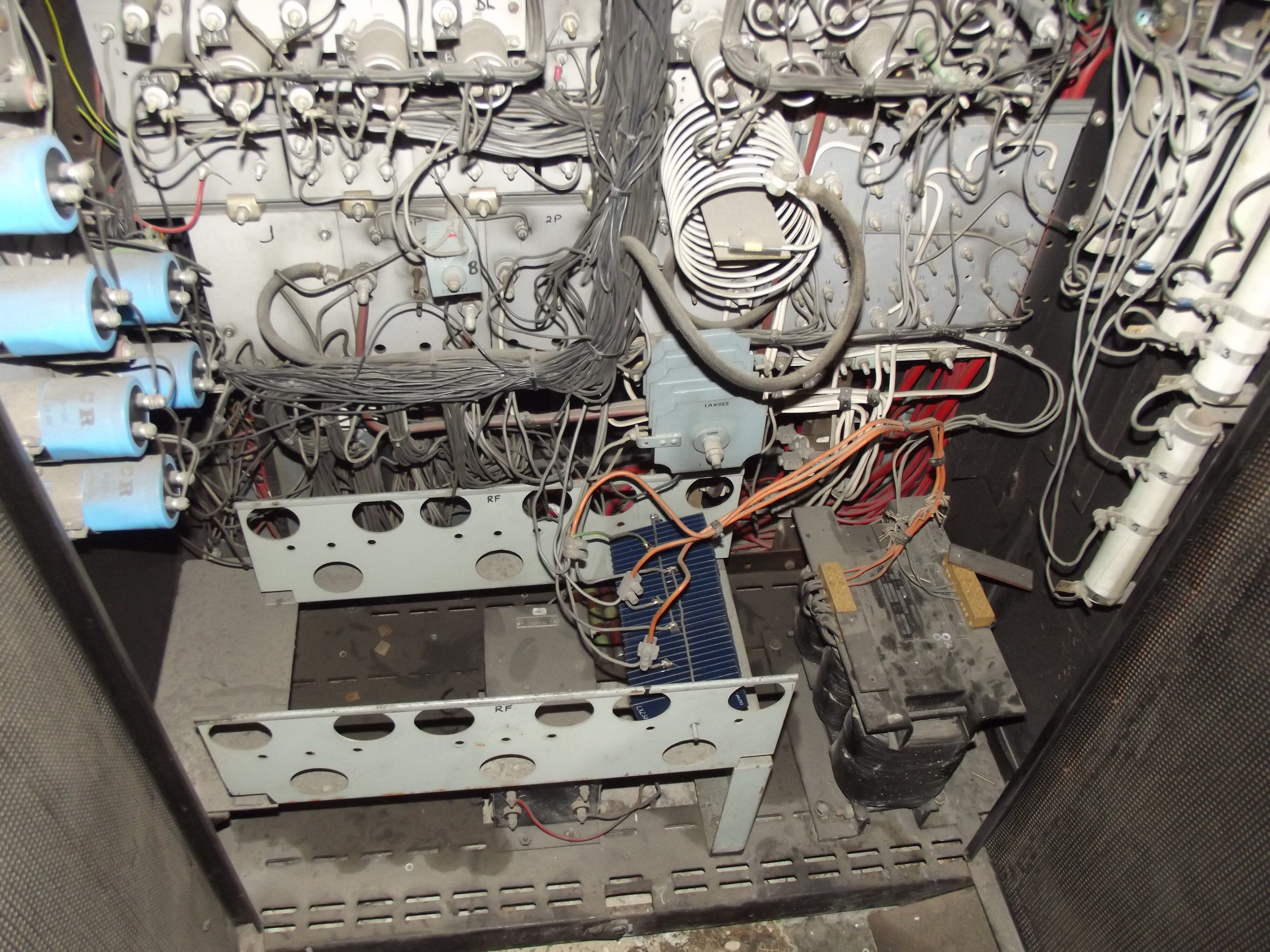
Rear of A lift’s Otis lift control cabinet, 24 Sep 2011 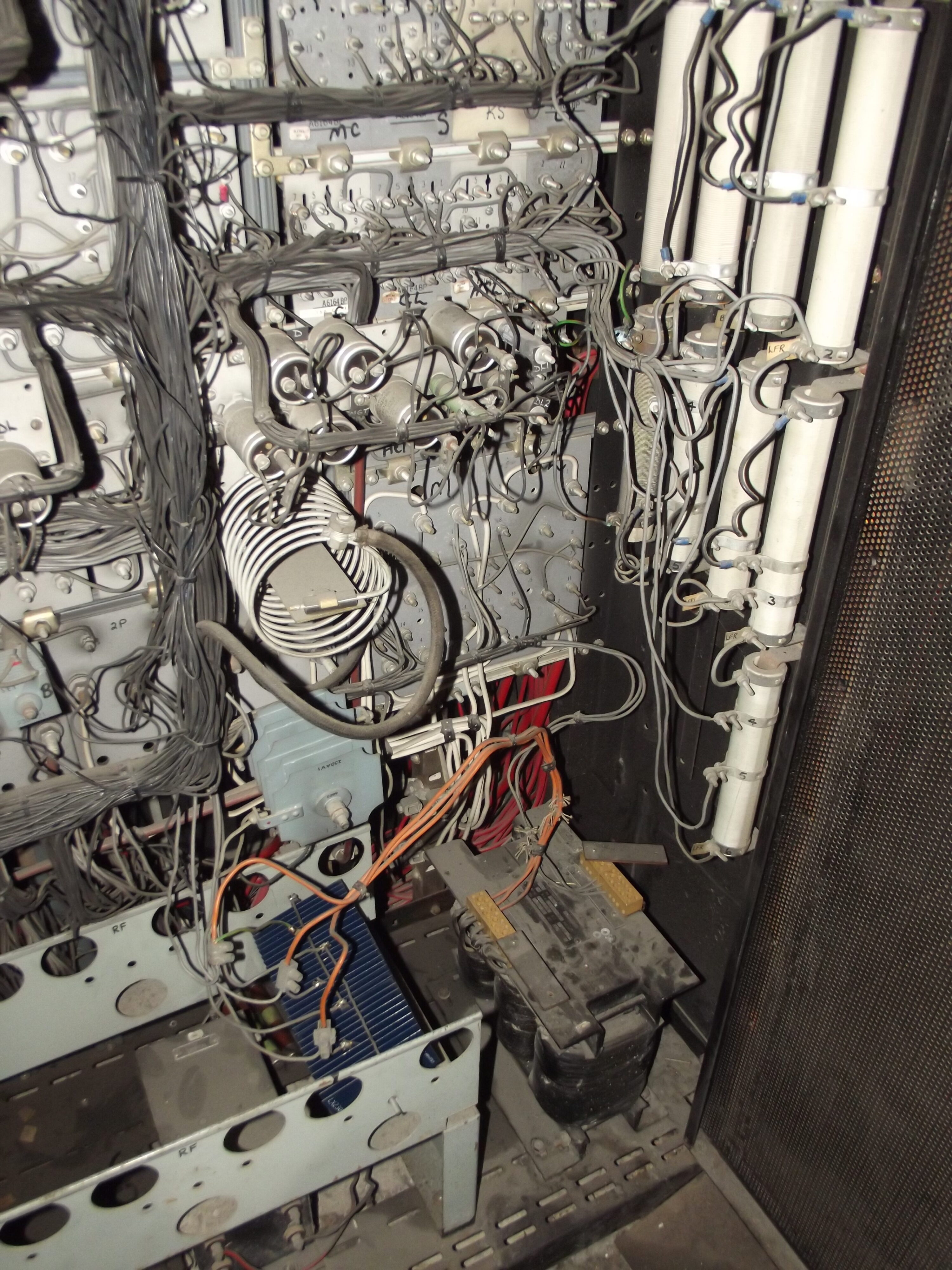
Rear of A lift’s Otis lift control cabinet, 24 Sep 2011 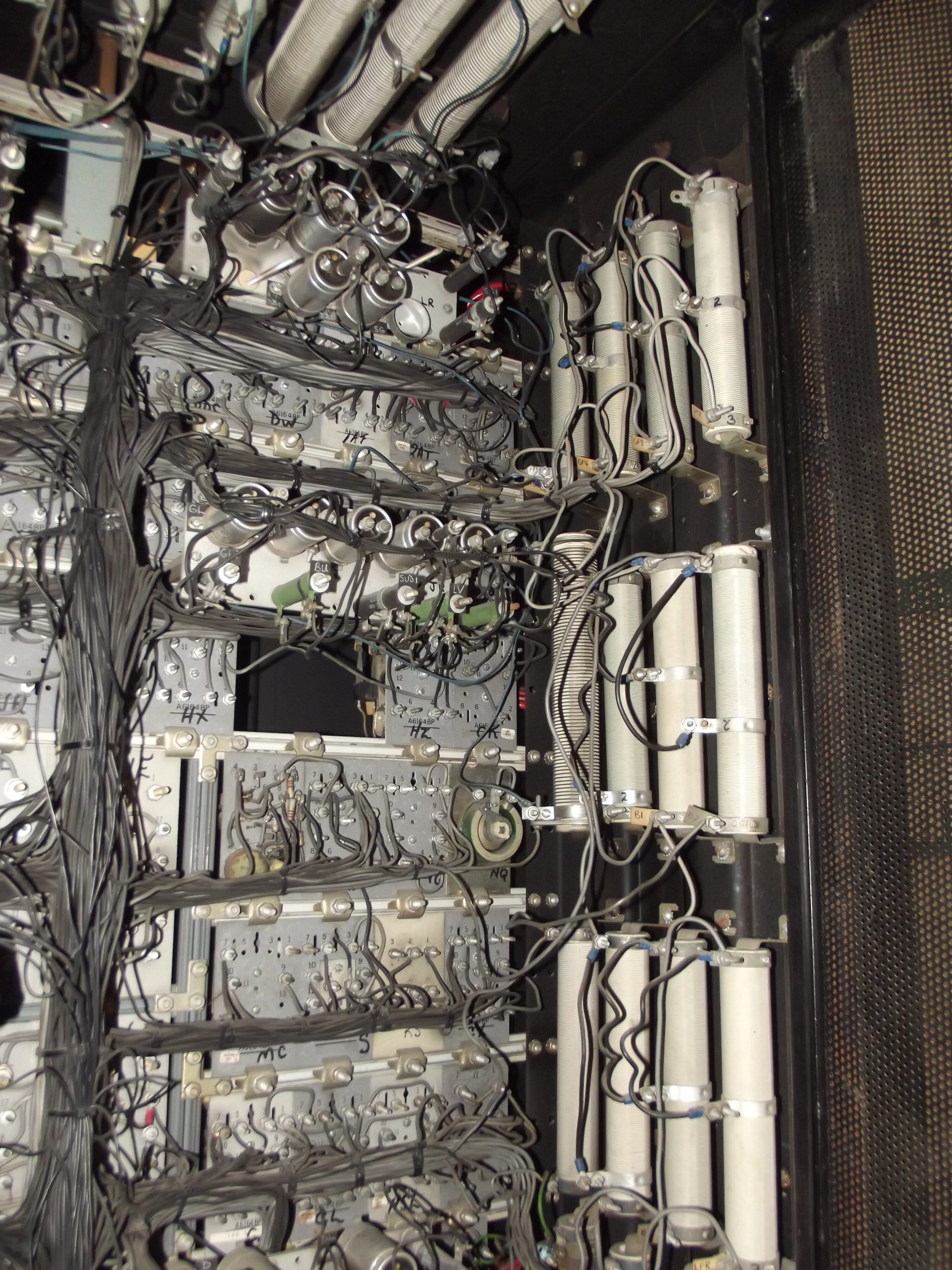
Rear of A lift’s Otis lift control cabinet, 24 Sep 2011 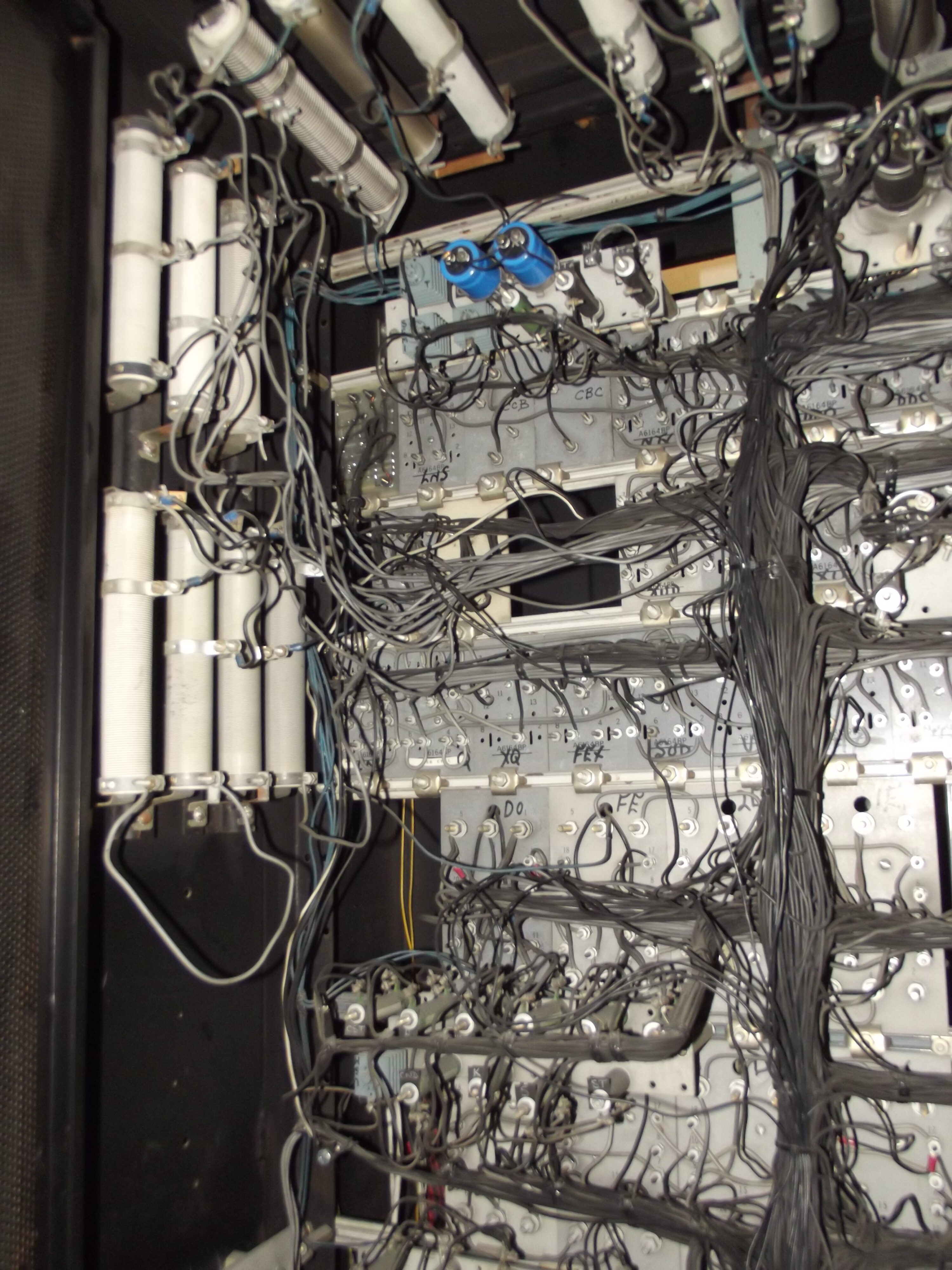
Rear of A lift’s Otis lift control cabinet, 24 Sep 2011 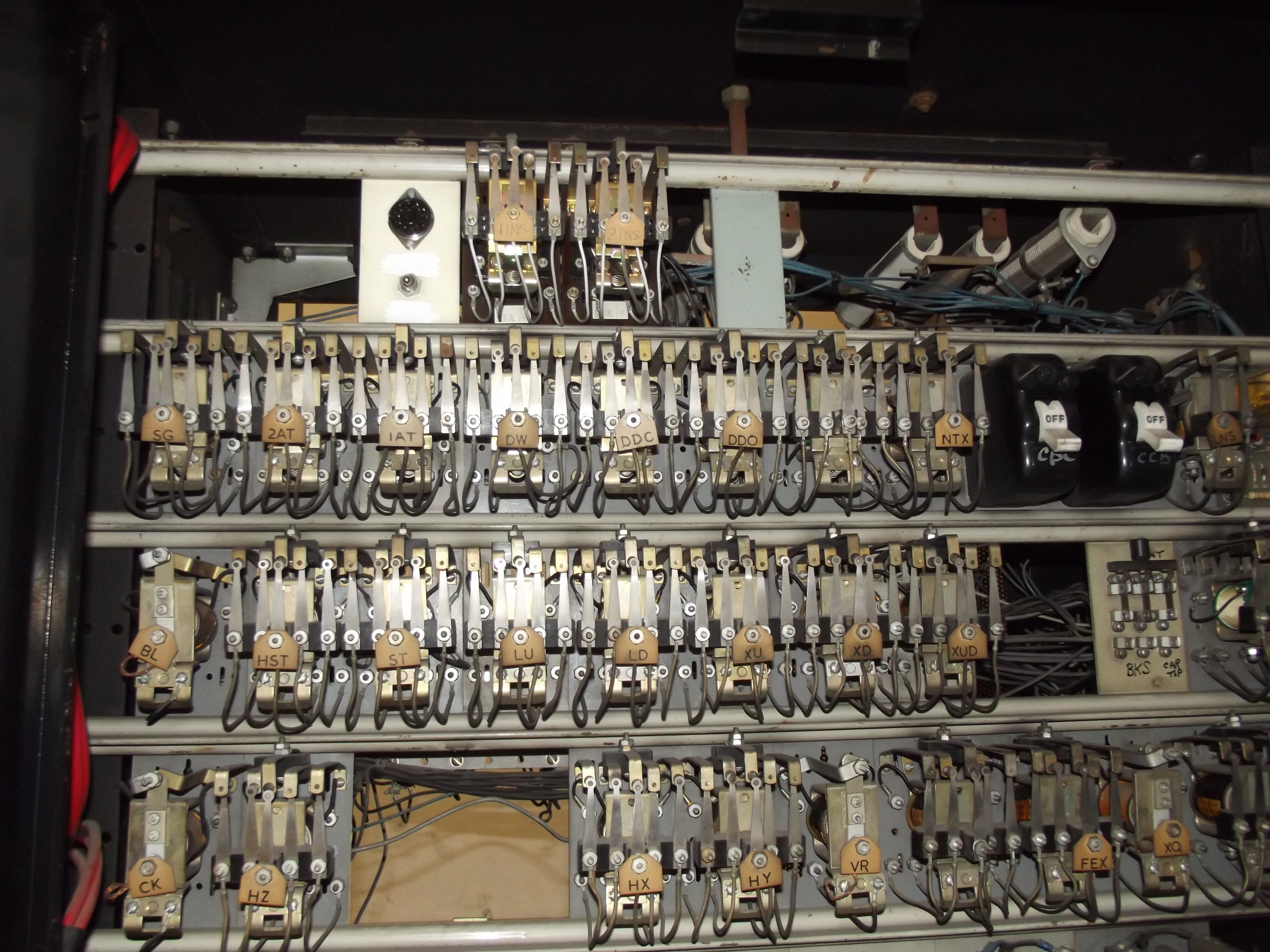
Relays in A lift’s control cabinet, 24 Sep 2011 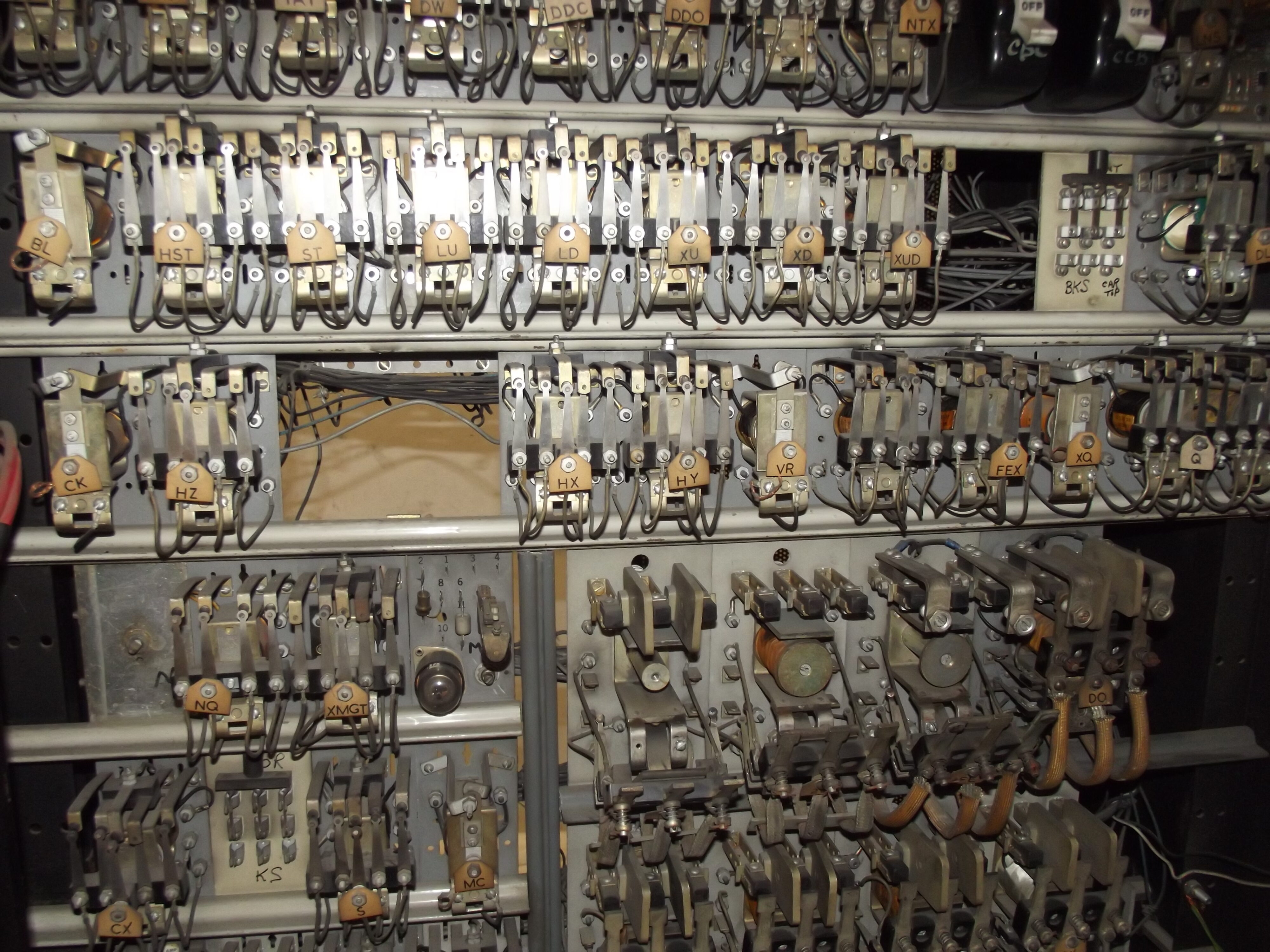
Relays in A lift’s control cabinet, 24 Sep 2011 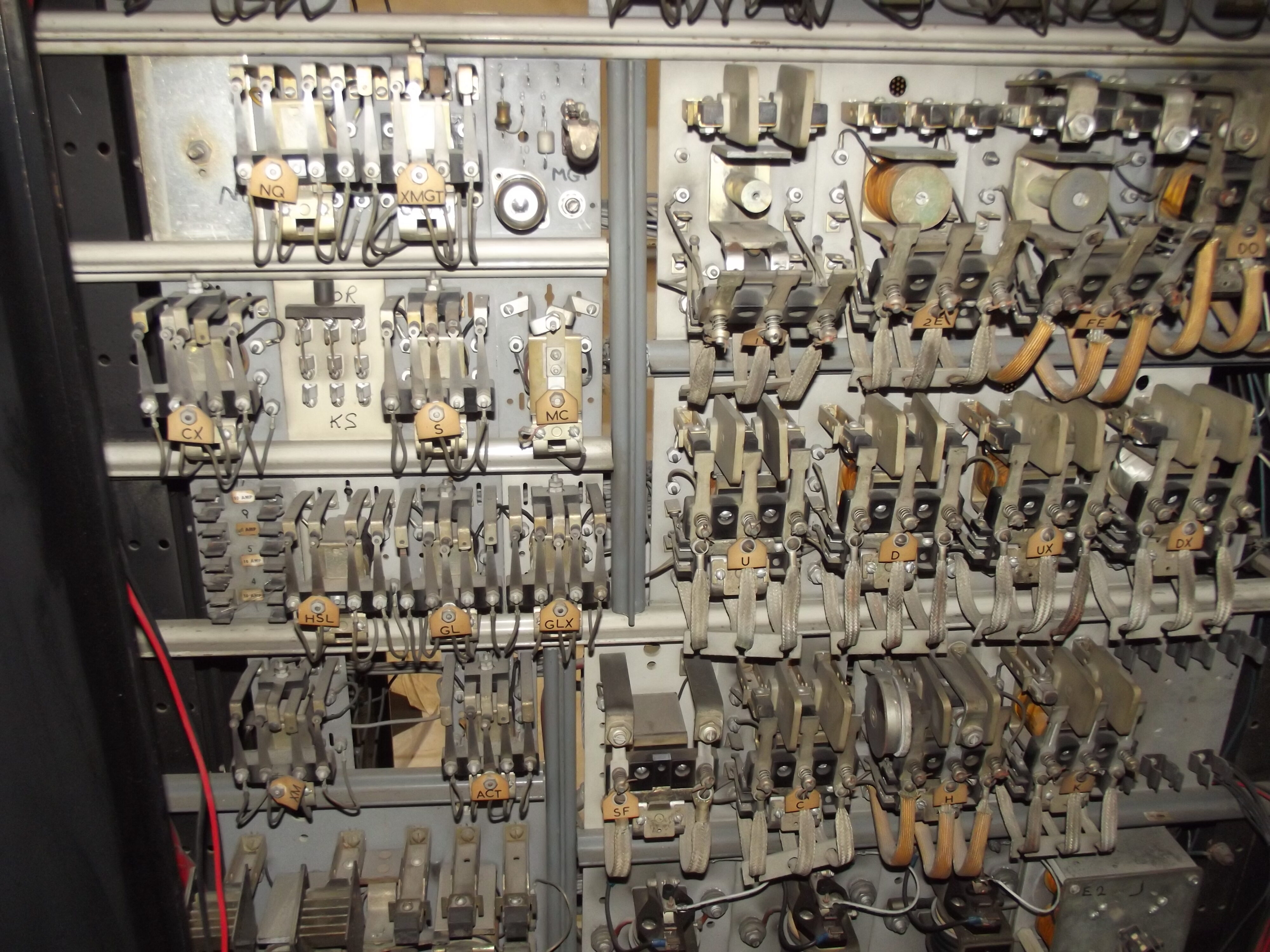
Relays in A lift’s control cabinet, 24 Sep 2011 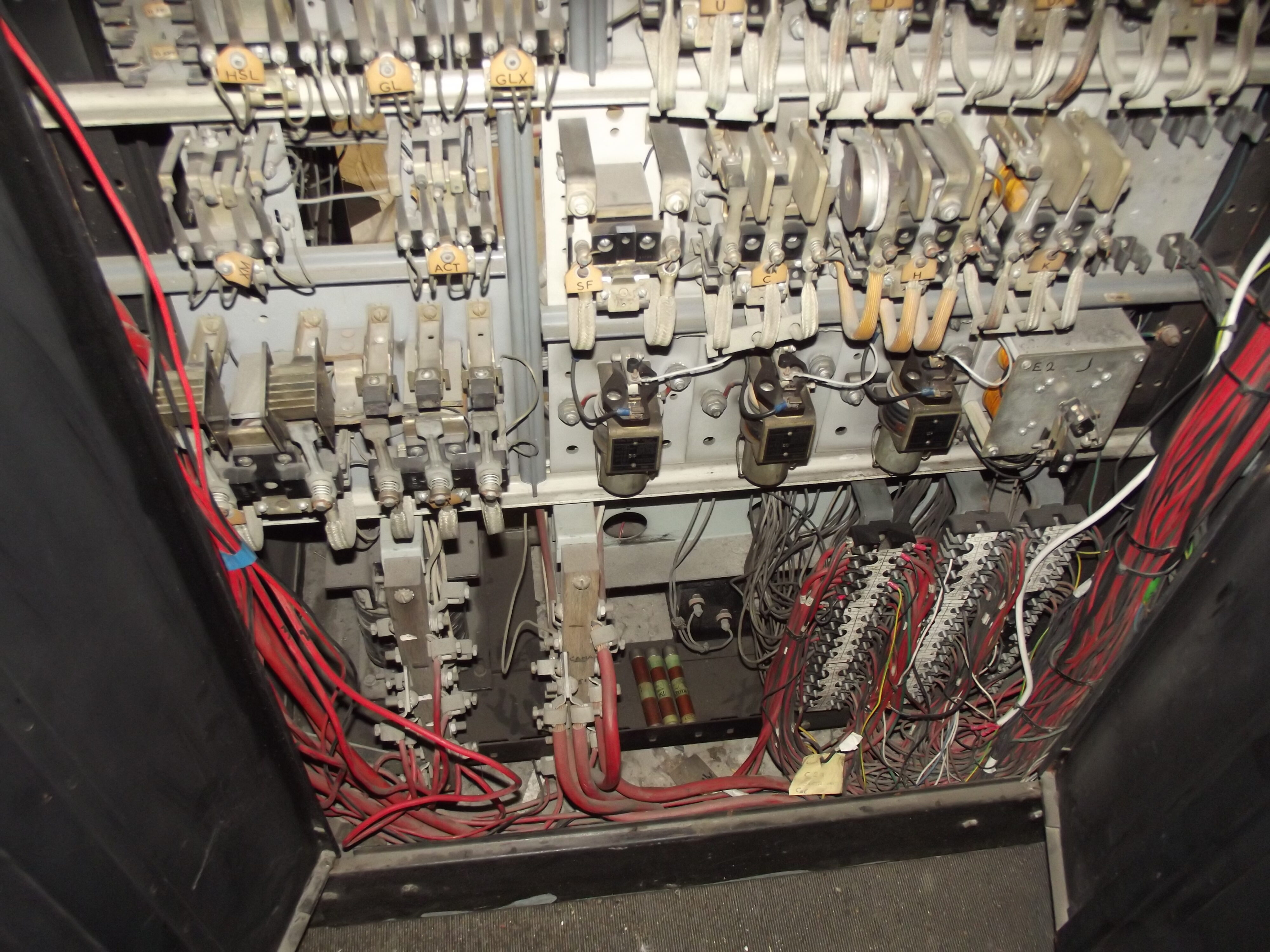
Relays in A lift’s control cabinet, 24 Sep 2011 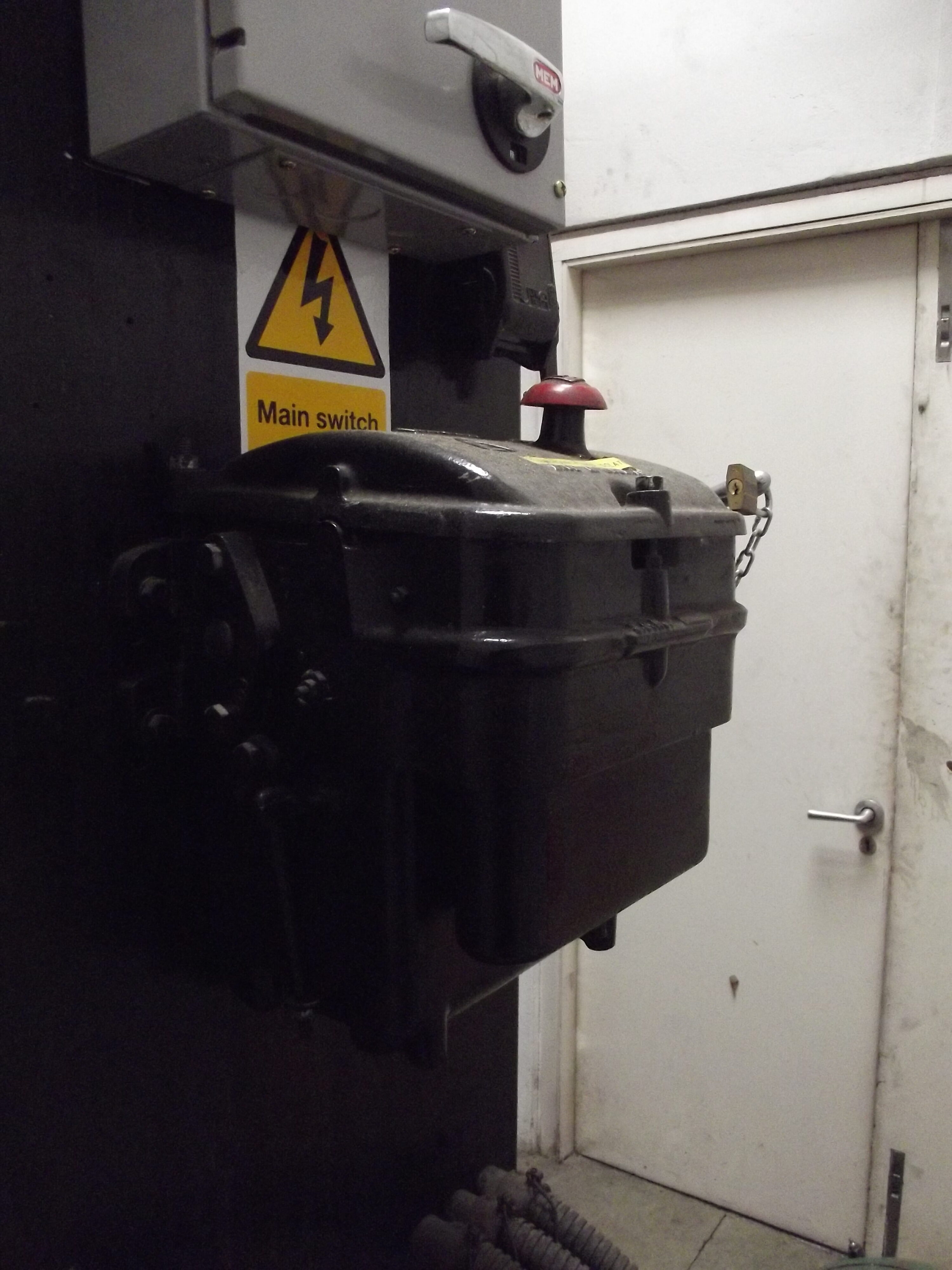
A lift main power switch, 24 Sep 2011 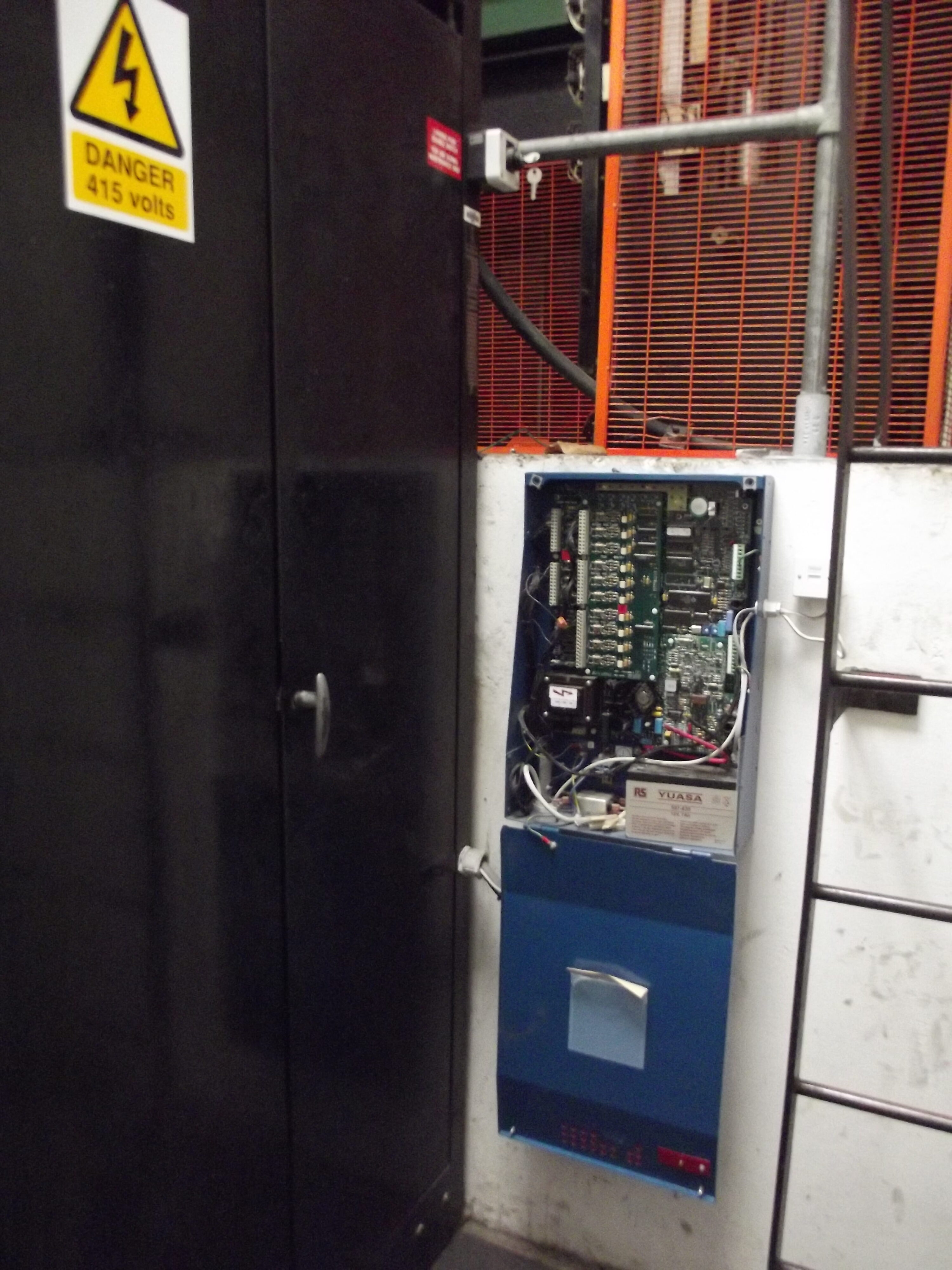
A lift control cabinet and REMS unit, 24 Sep 2011 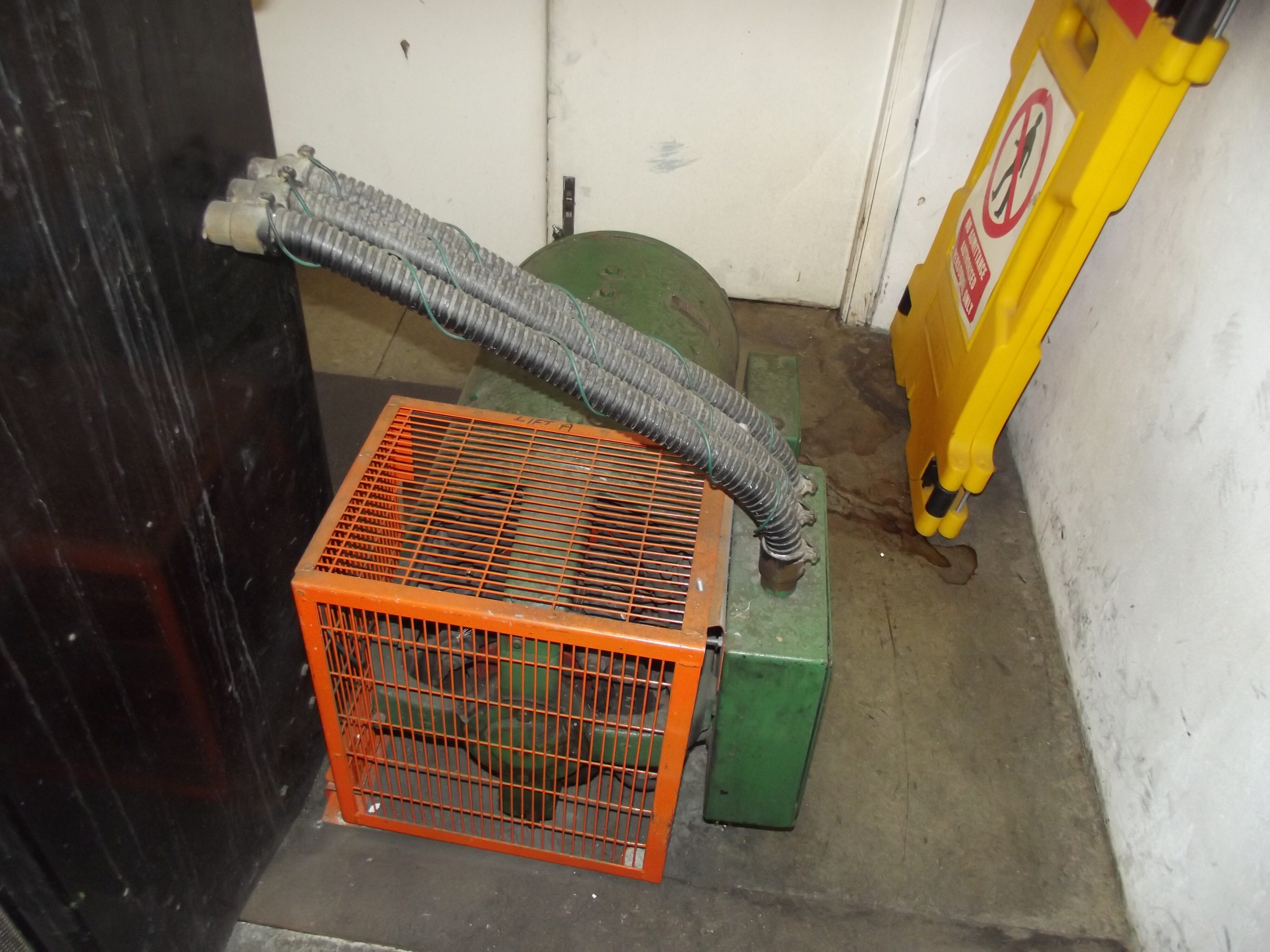
A lift Otis motor-generator set, 24 Sep 2011 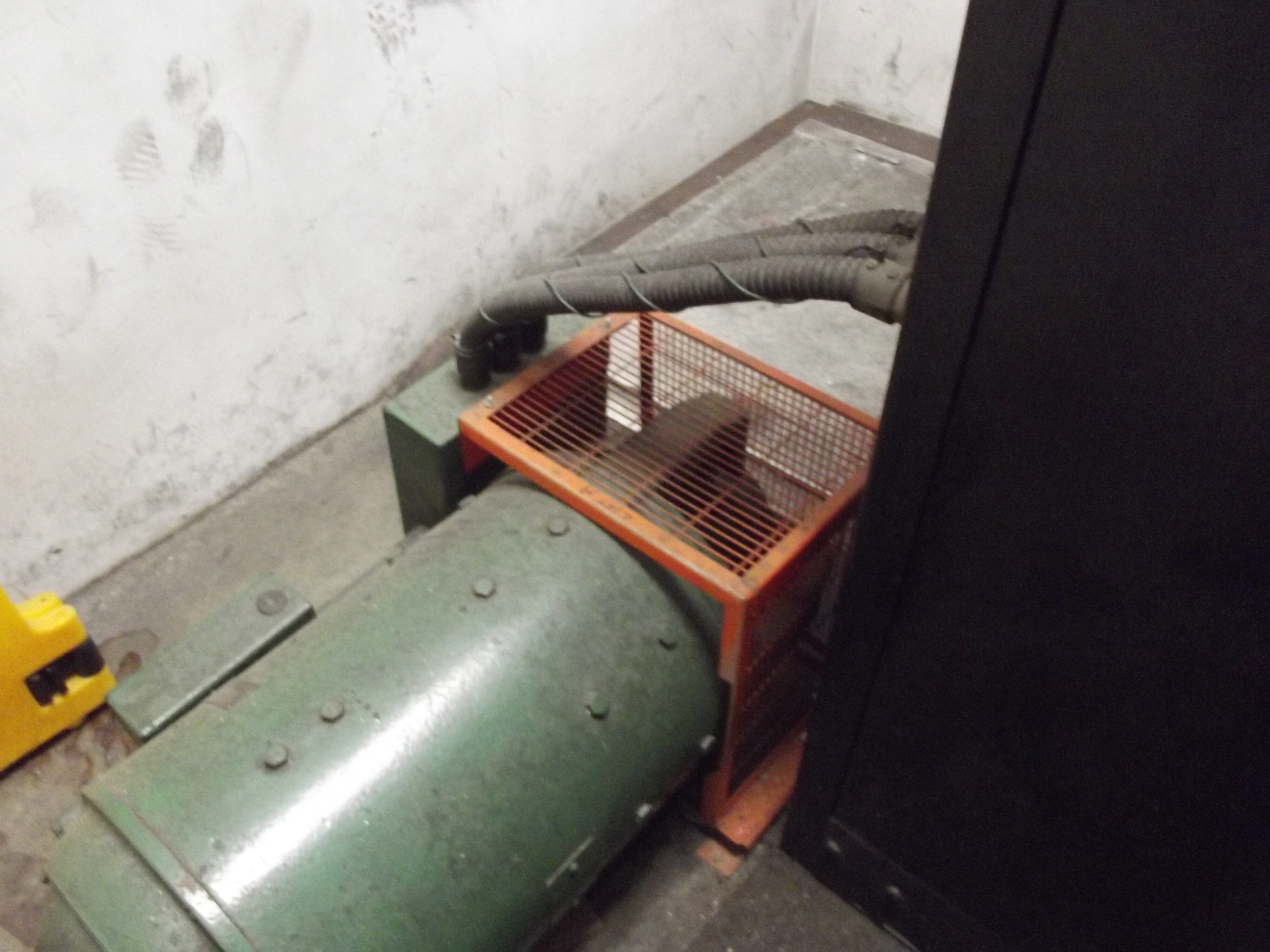
A lift’s controller cab and motor-generator set, 24 Sep 2011 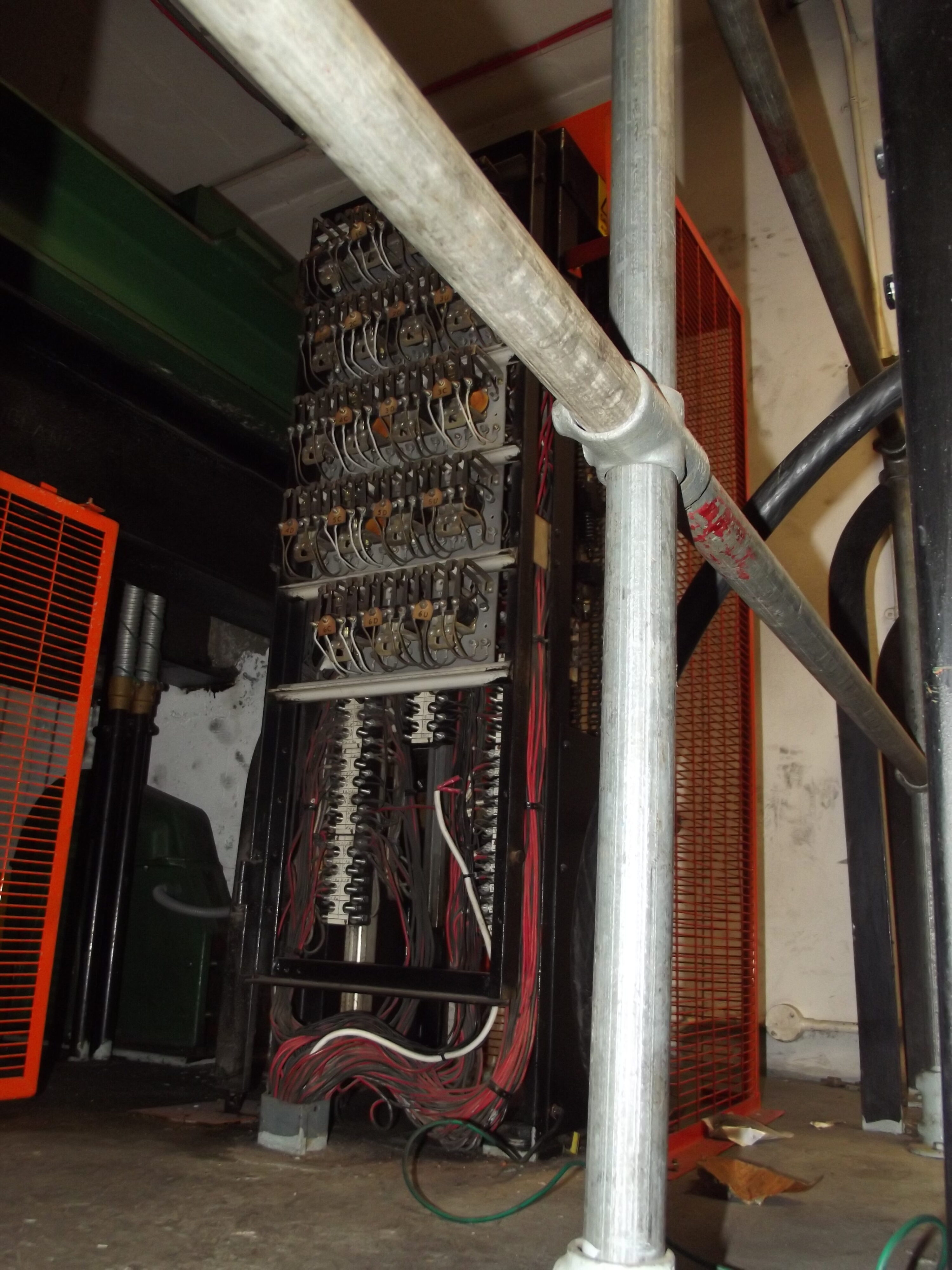
A lift selector call relays, 24 Sep 2011 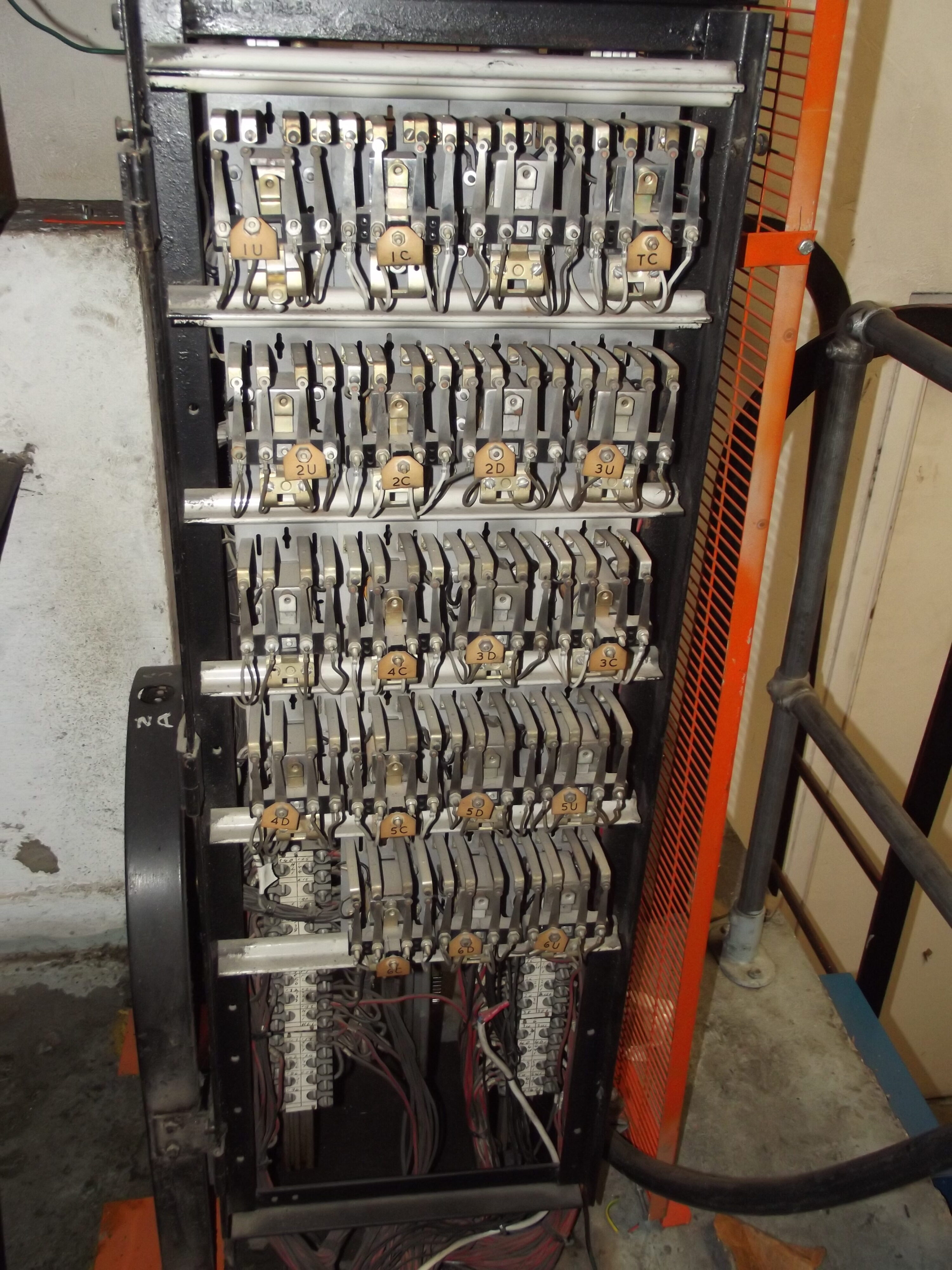
Call relays in front of A lift’s floor selector, 24 Sep 2011 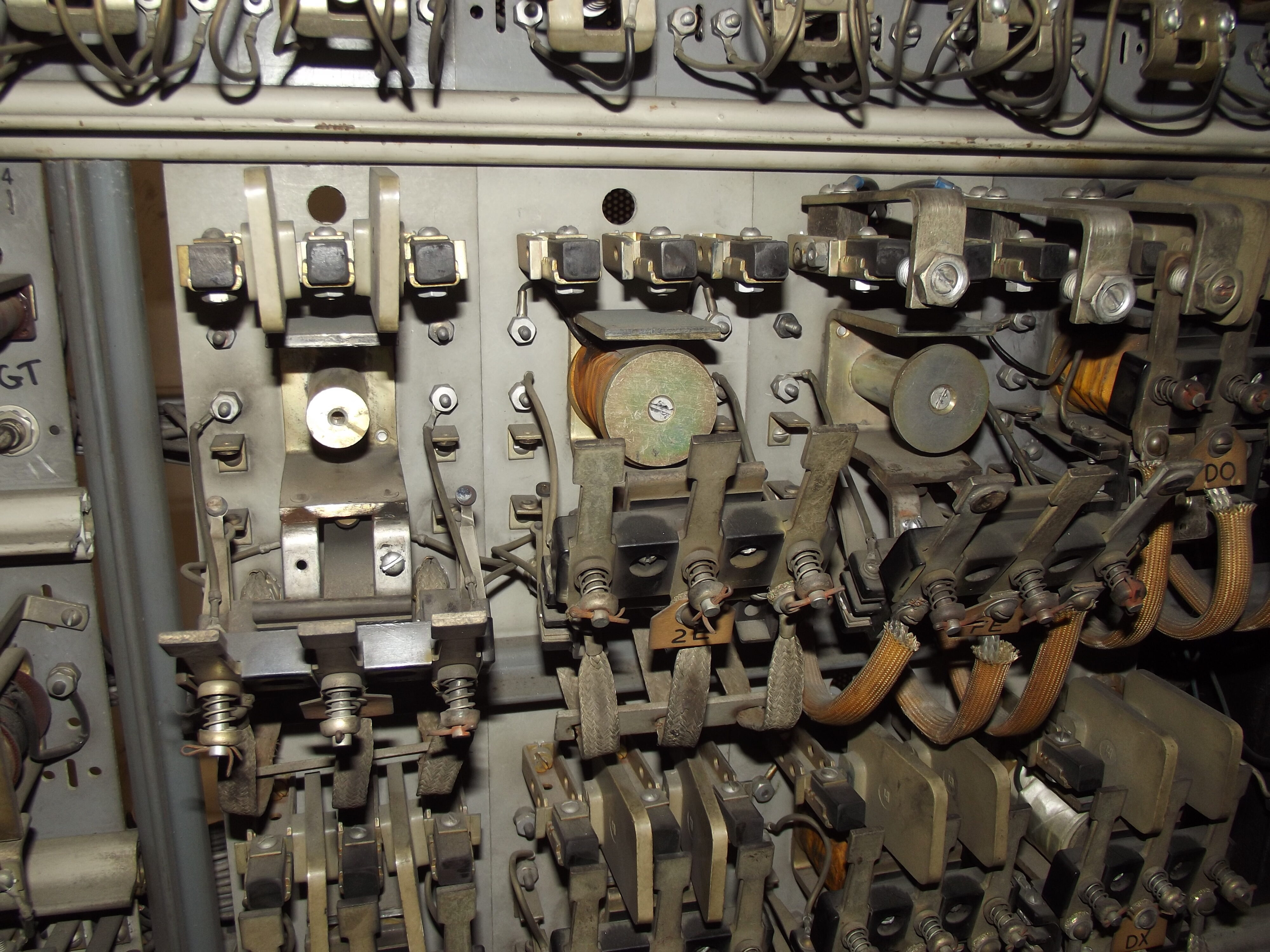
Contactors in A lift’s control cabinet, 24 Sep 2011 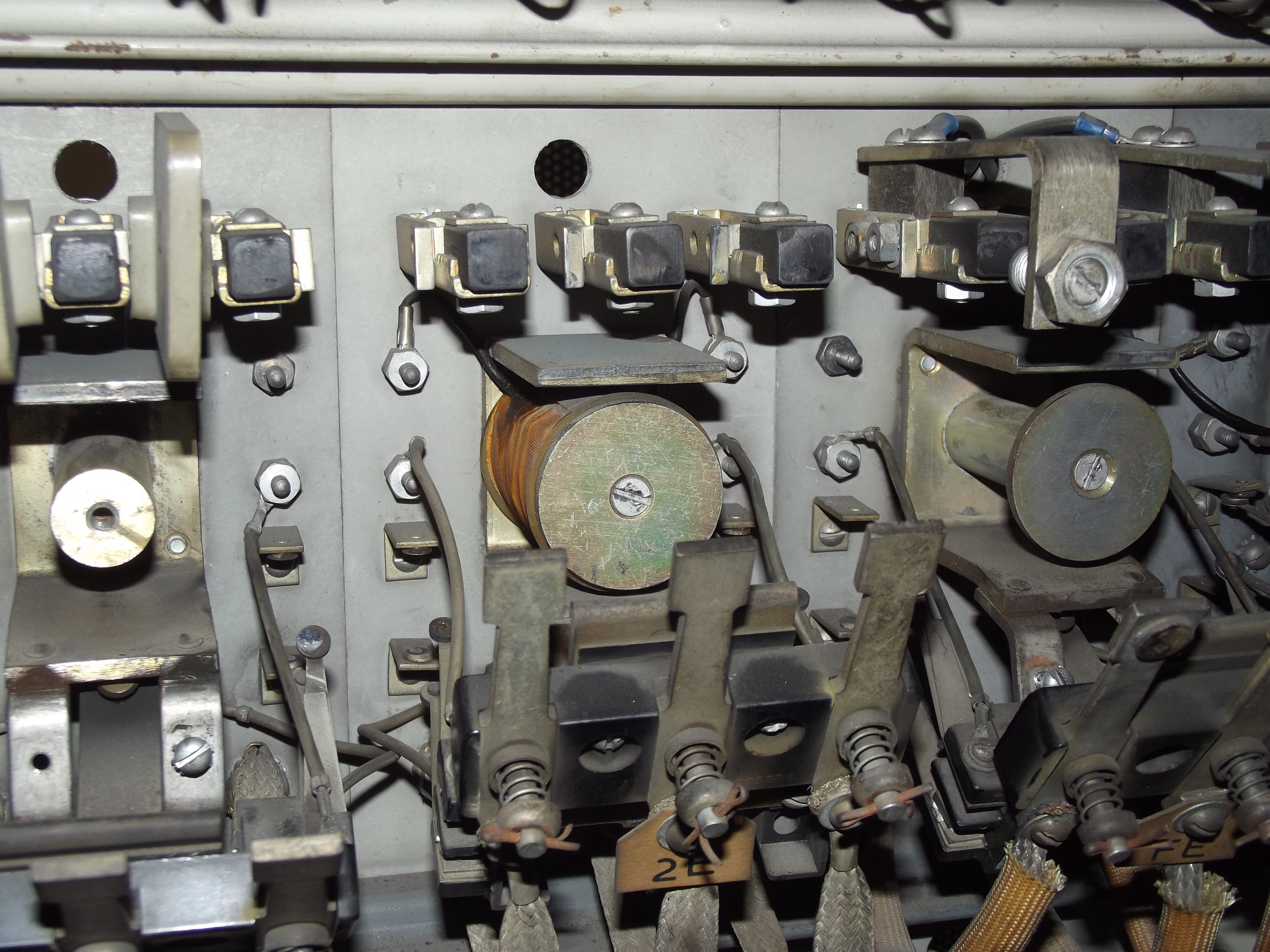
Contactors in A lift’s control cabinet, 24 Sep 2011 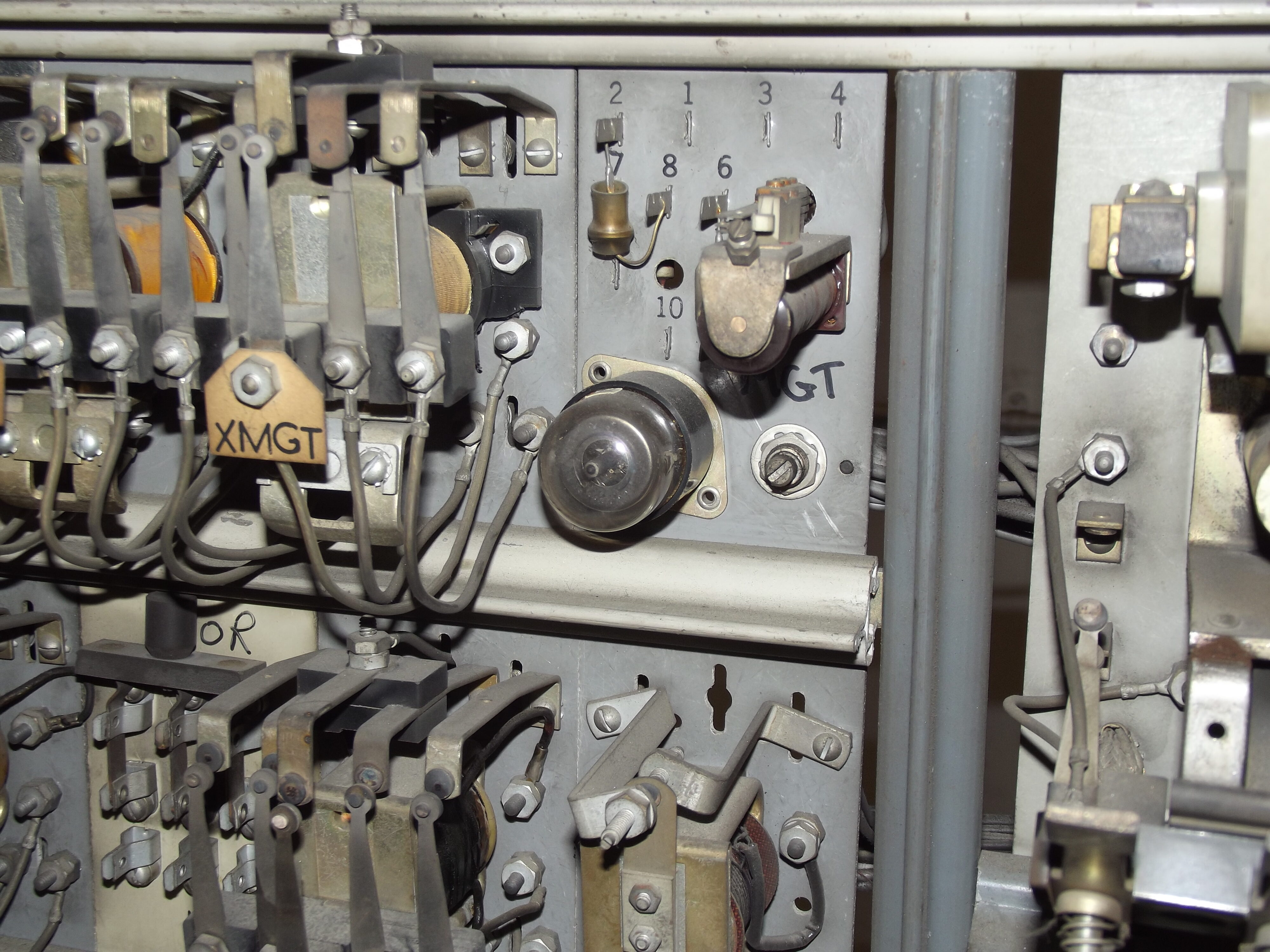
A lift’s control cabinet, 24 Sep 2011. 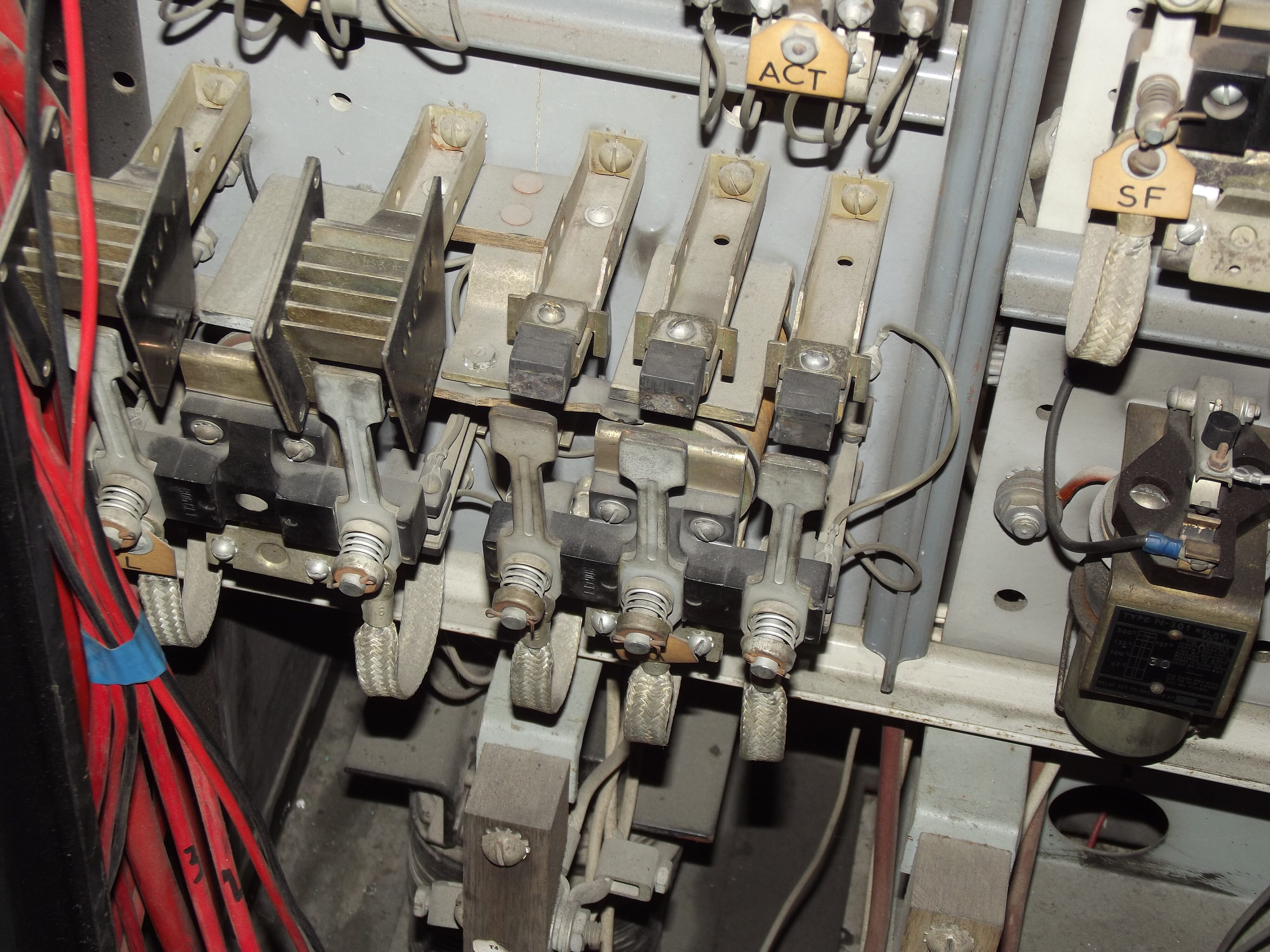
Contactors in A lift’s control cabinet, 24 Sep 2011 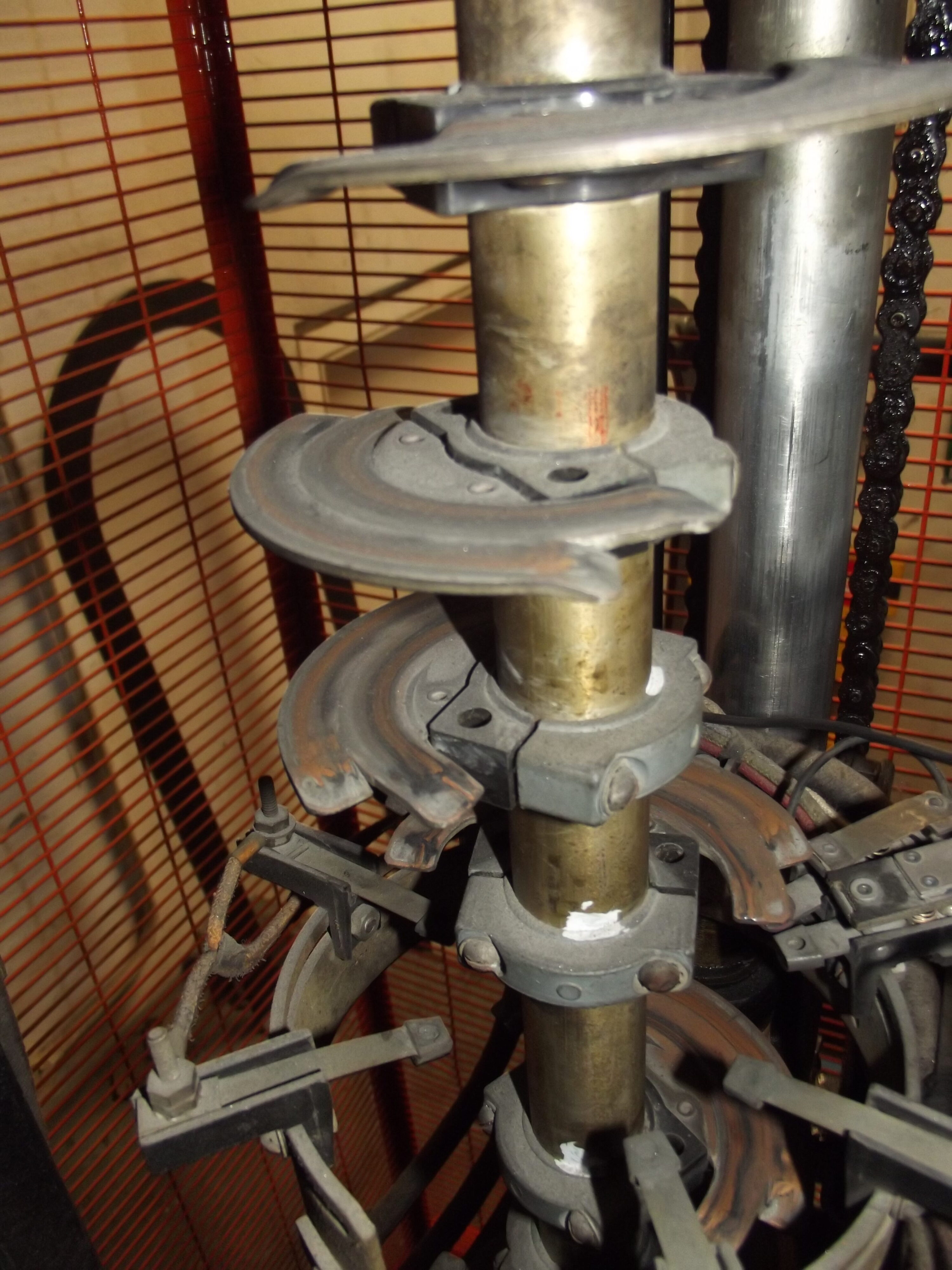
A lift’s Otis 6850BJ floor selector, 24 Sep 2011 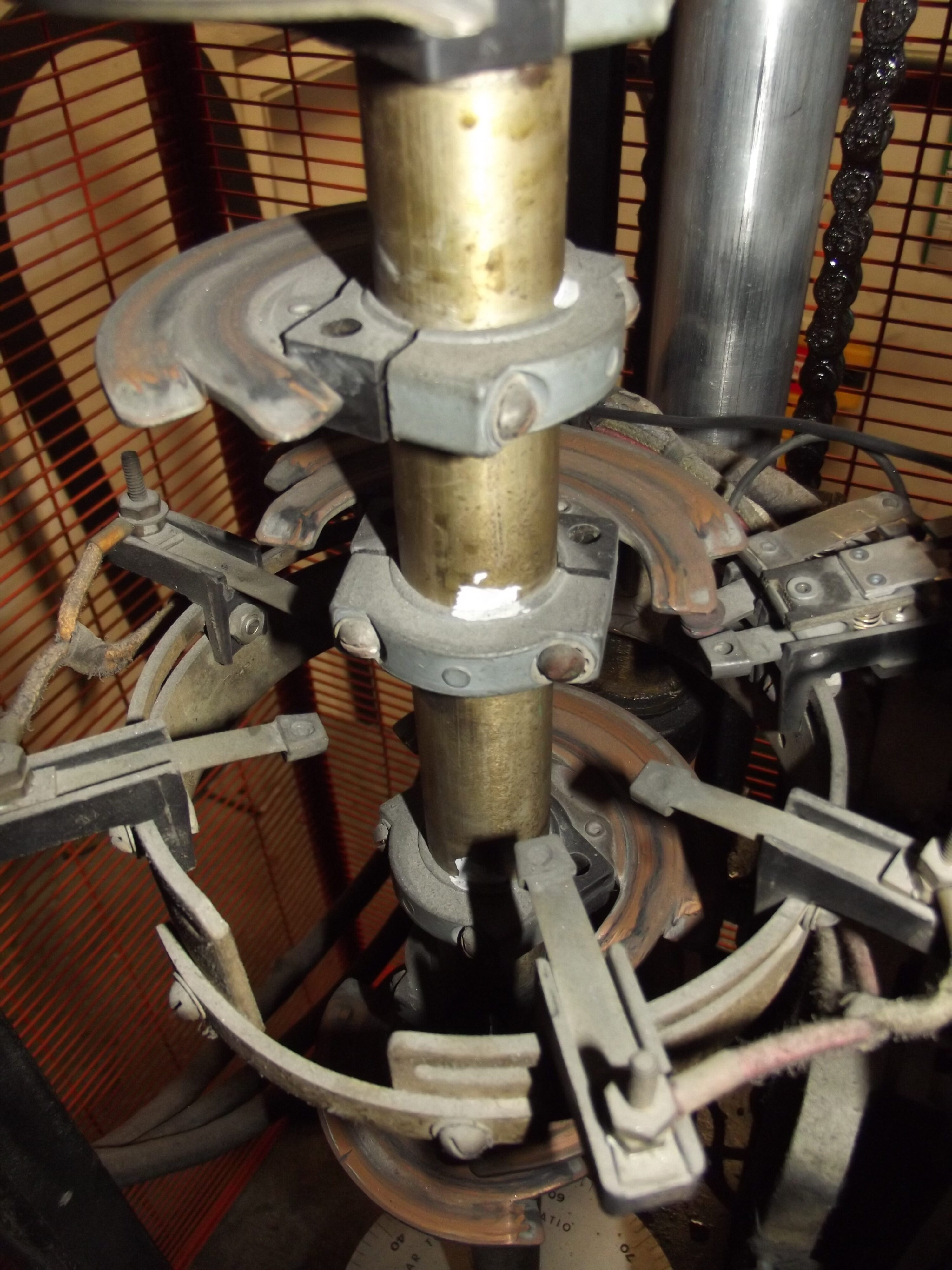
A lift’s Otis 6850BJ floor selector, 24 Sep 2011 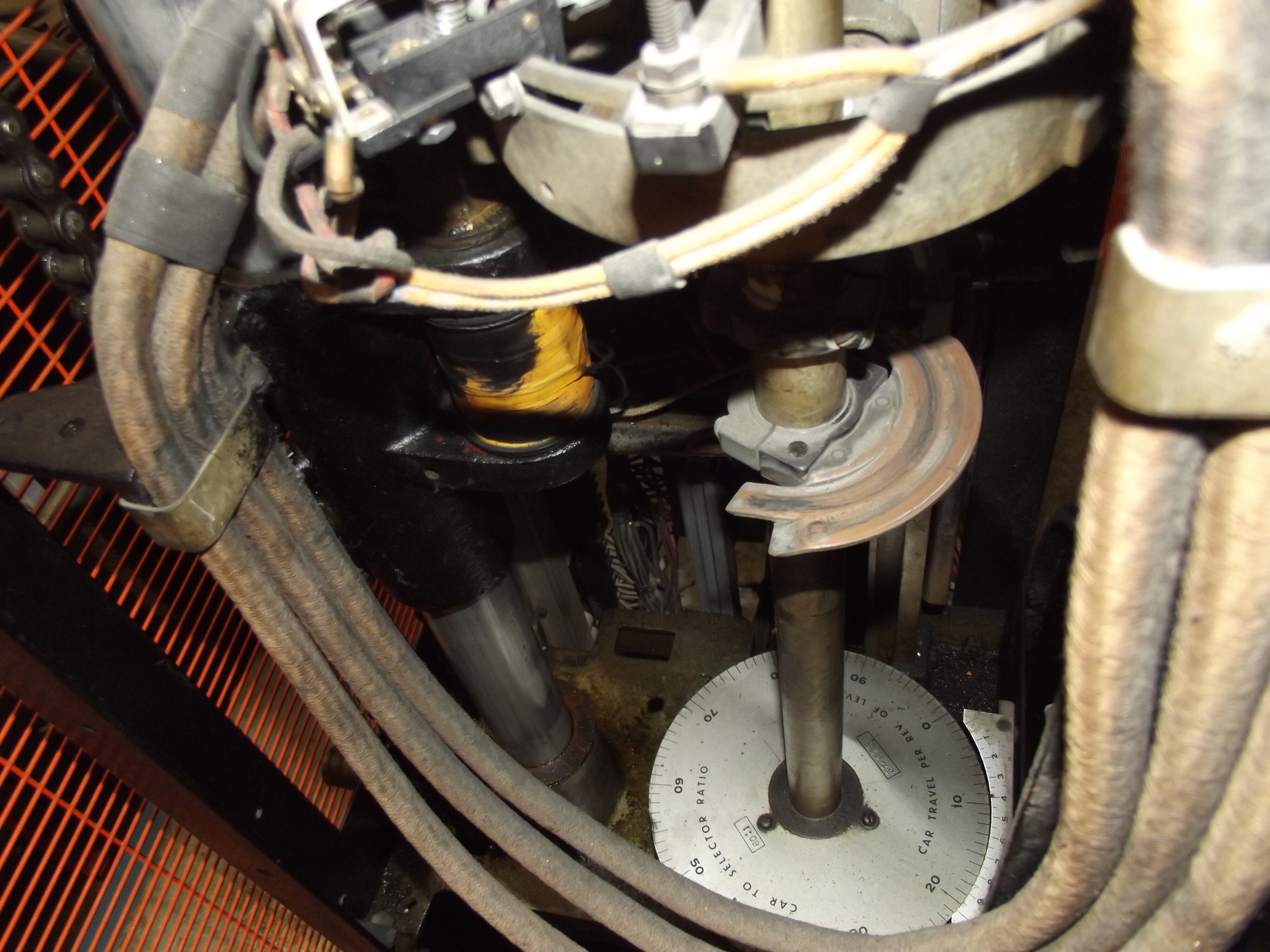
A lift’s Otis 6850BJ floor selector, 24 Sep 2011 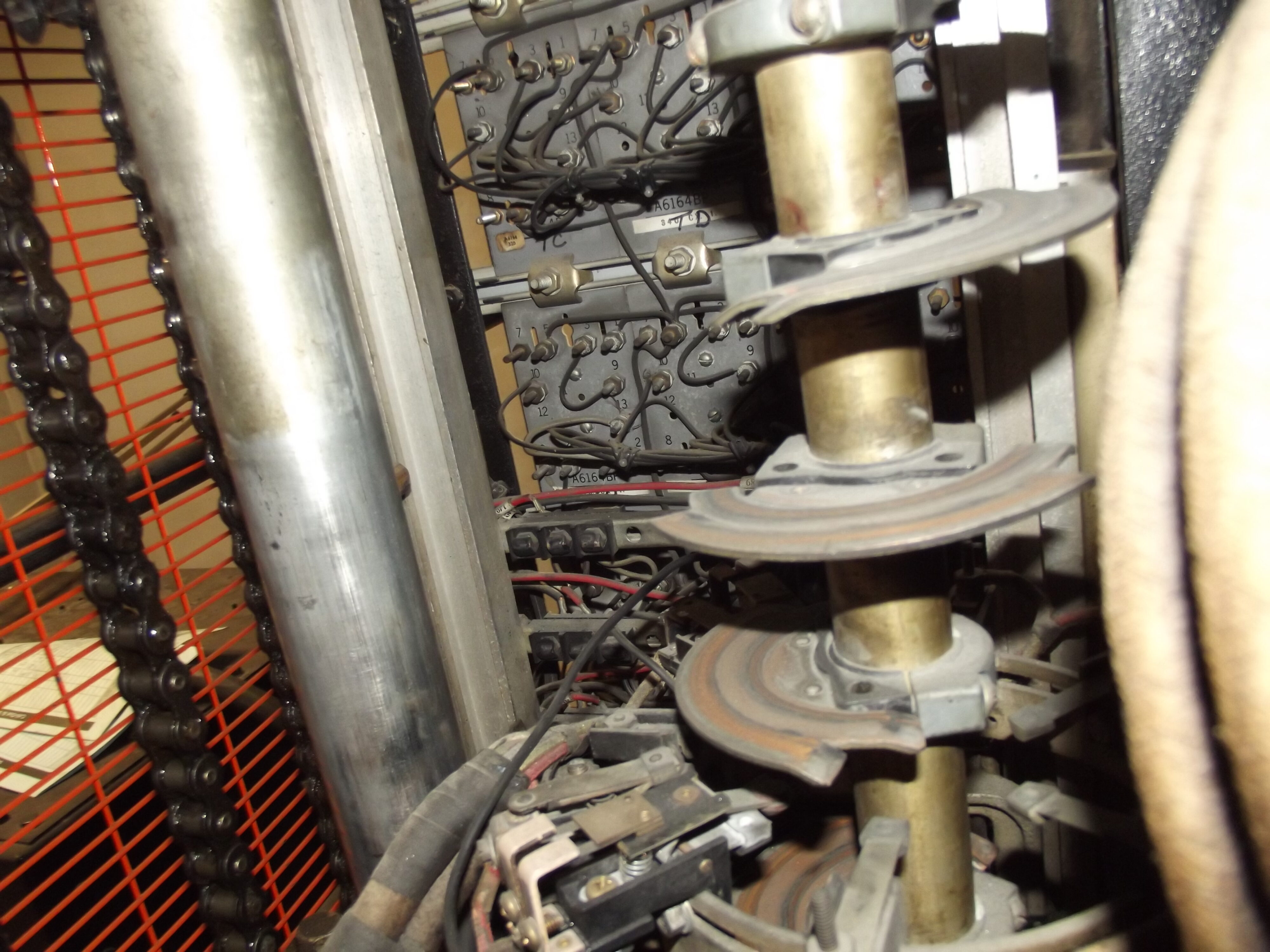
A lift’s Otis 6850BJ floor selector, 24 Sep 2011 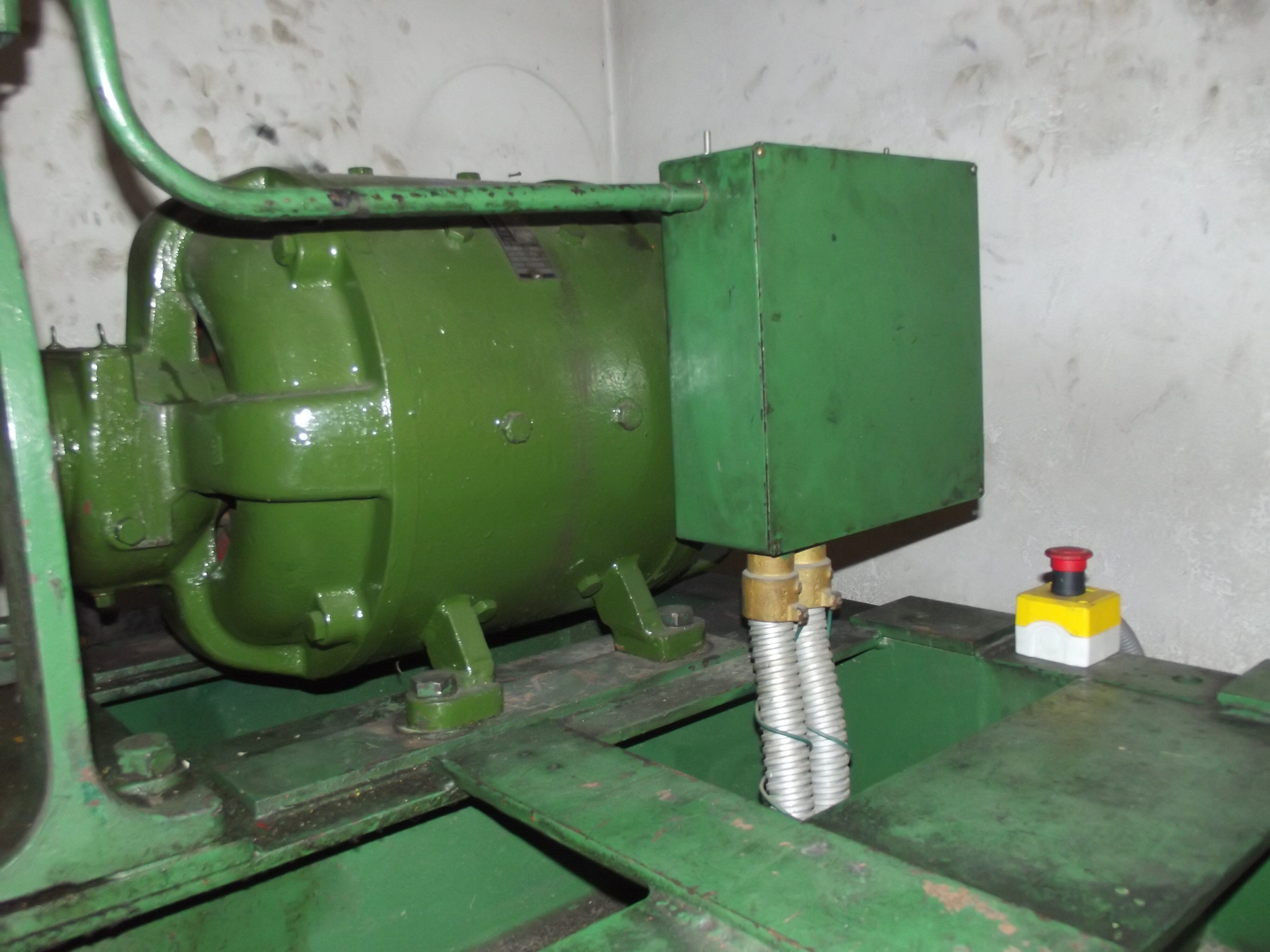
A lift’s motor, 24 Sep 2011 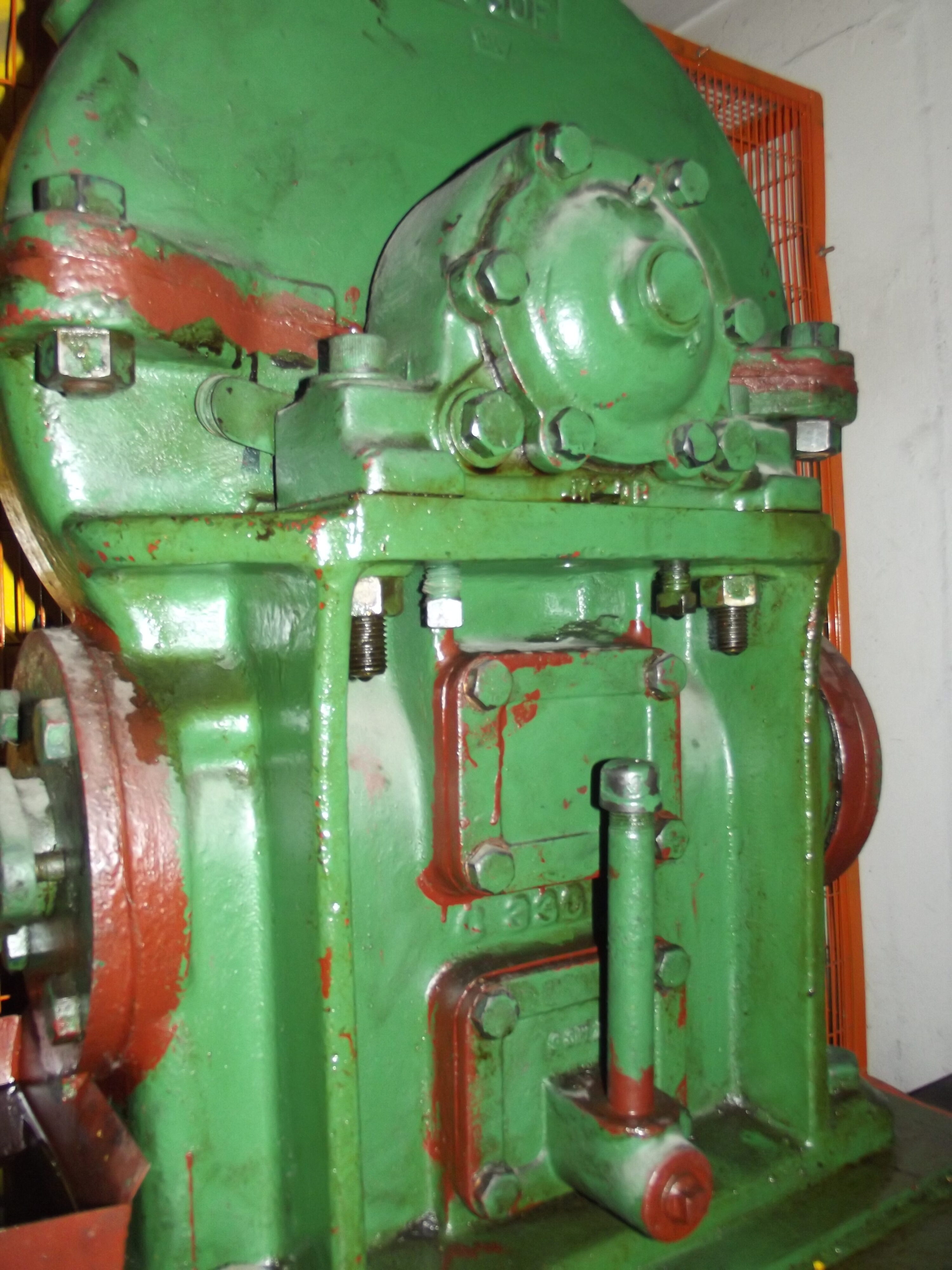
A lift’s gearbox, 24 Sep 2011 
A lift’s operating machine and sheave, 24 Sep 2011 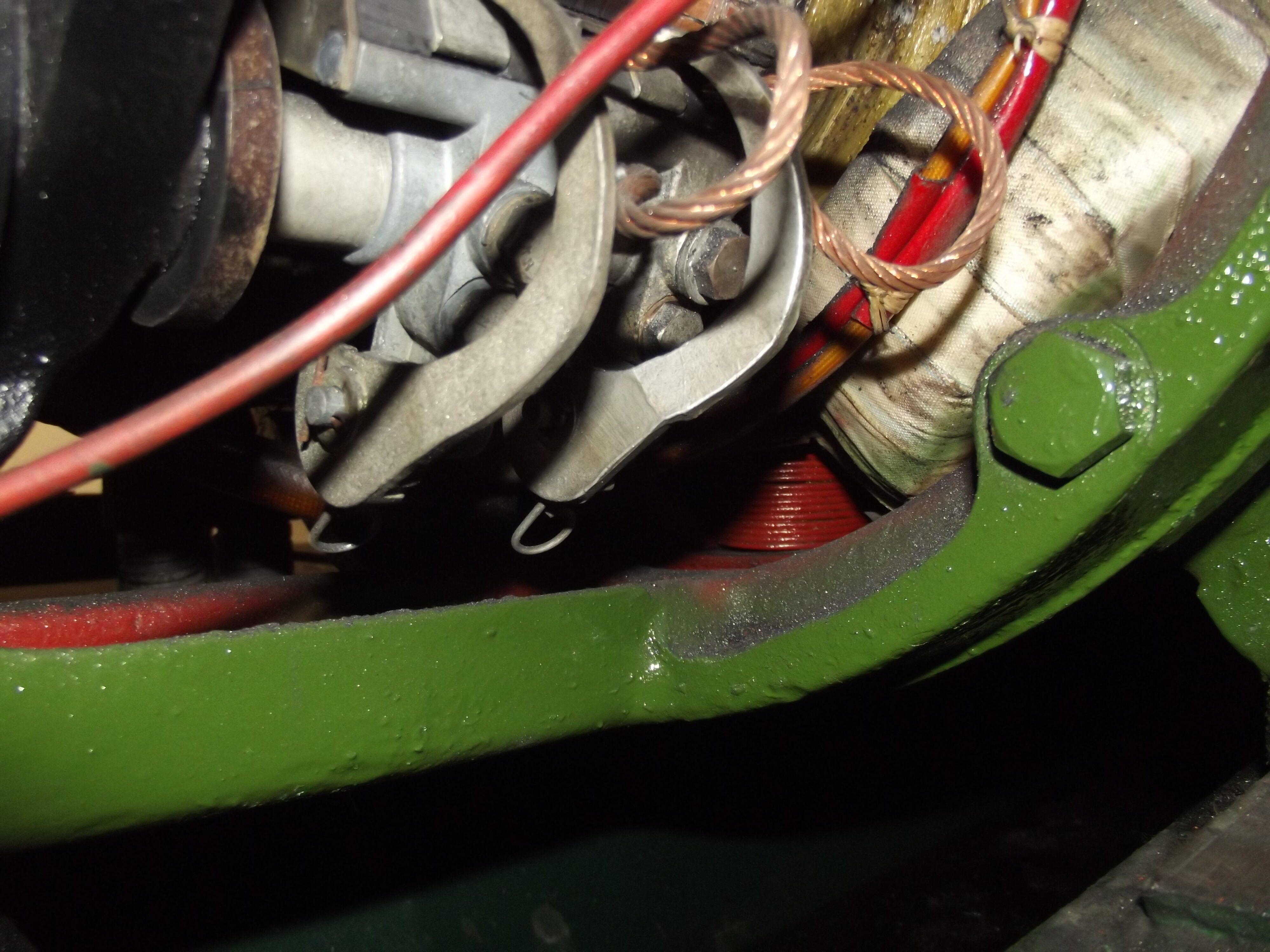
Close-up of A lift’s motor, 24 Sep 2011 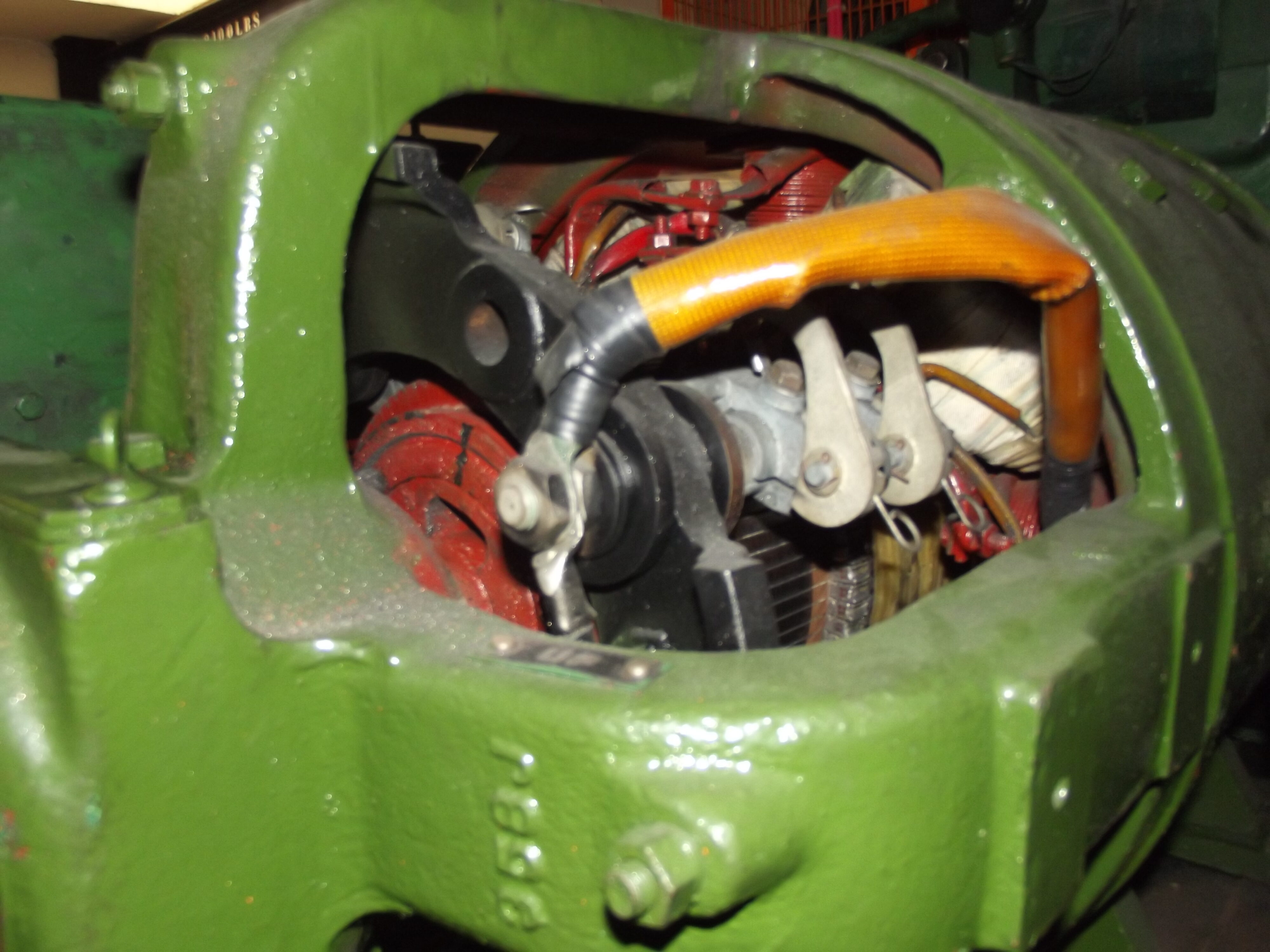
Close-up of A lift’s motor, 24 Sep 2011 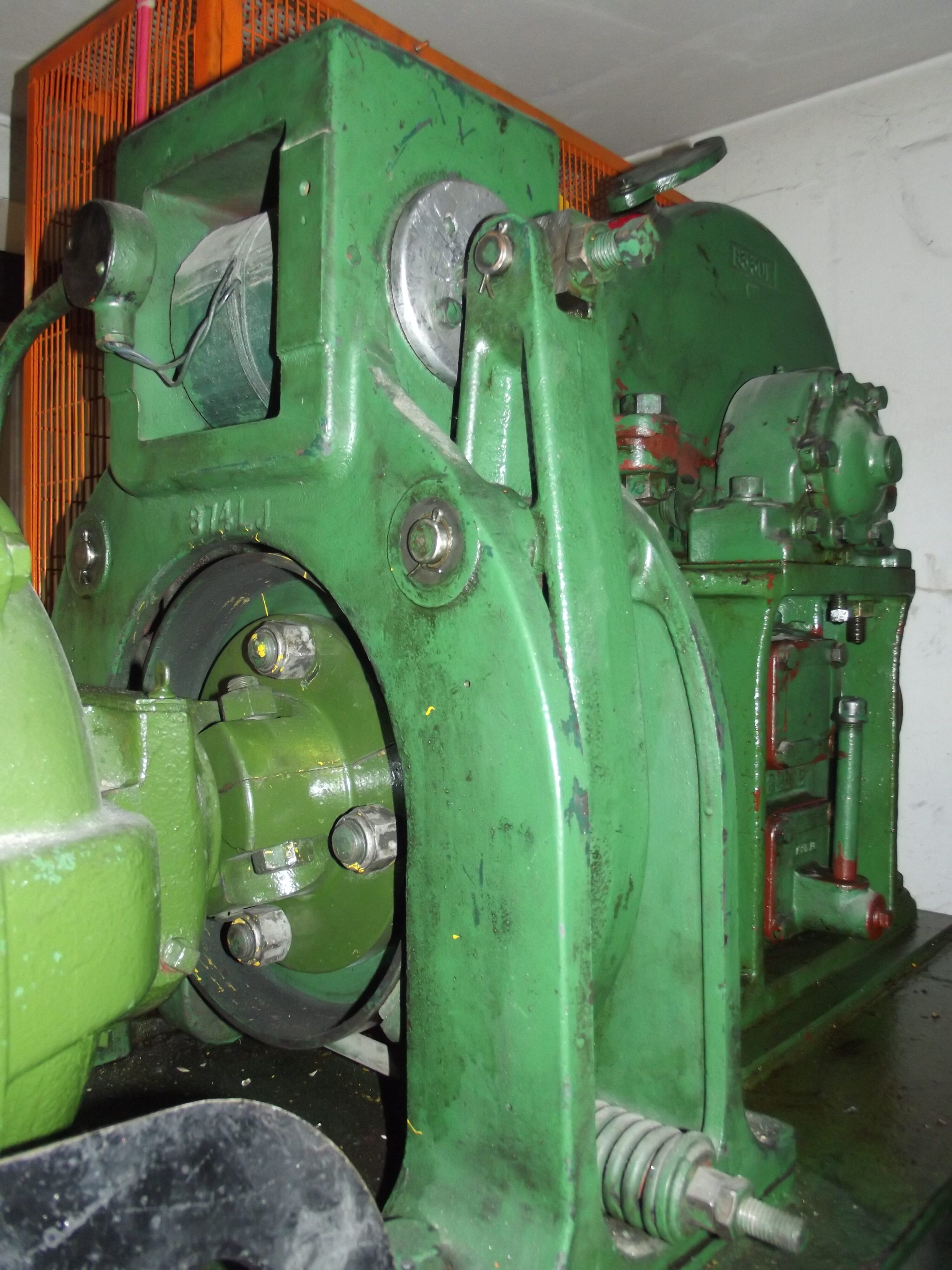
A lift’s main brake and gearbox, 24 Sep 2011 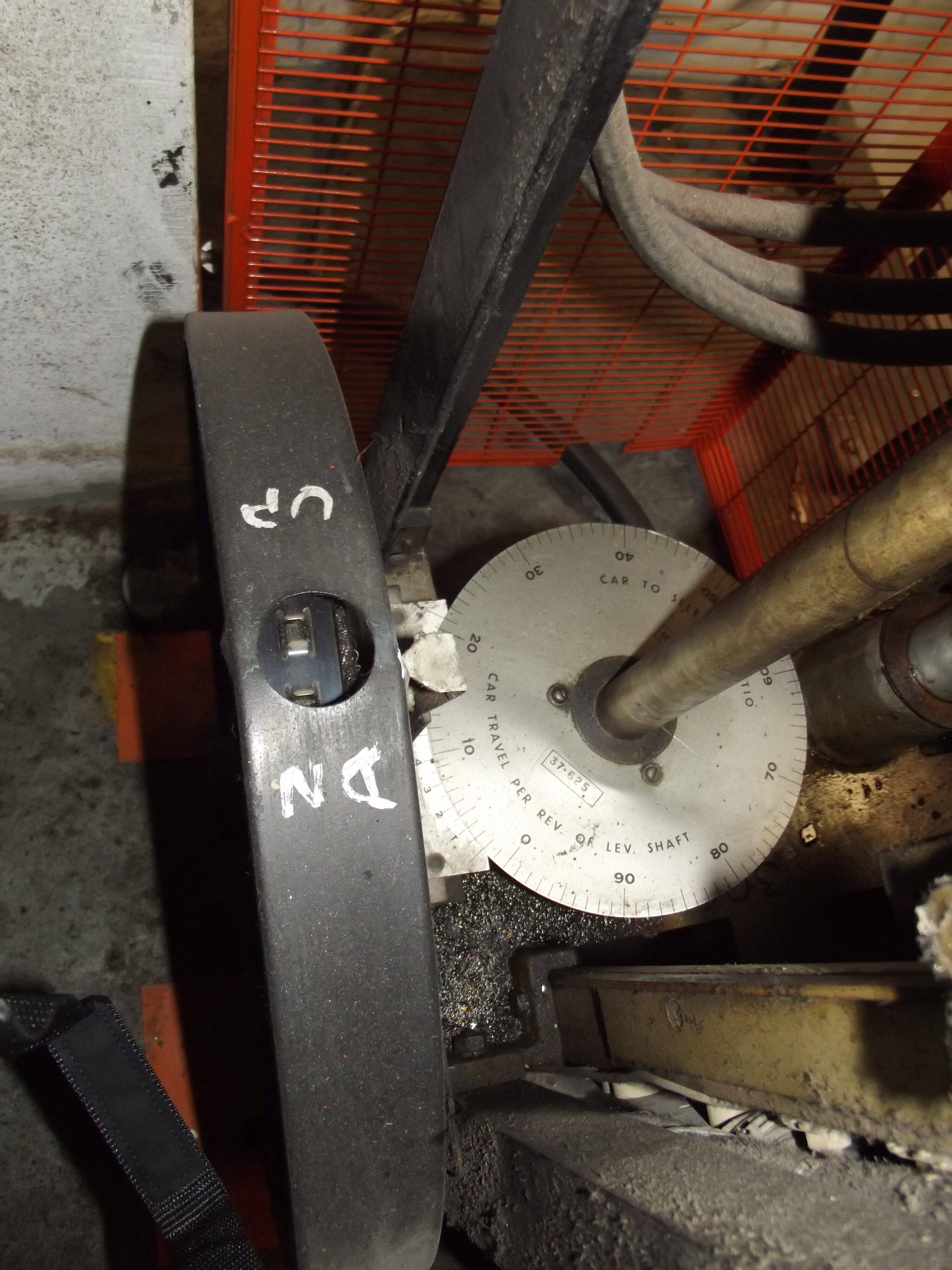
A lift floor selector and tape, 24 Sep 2011 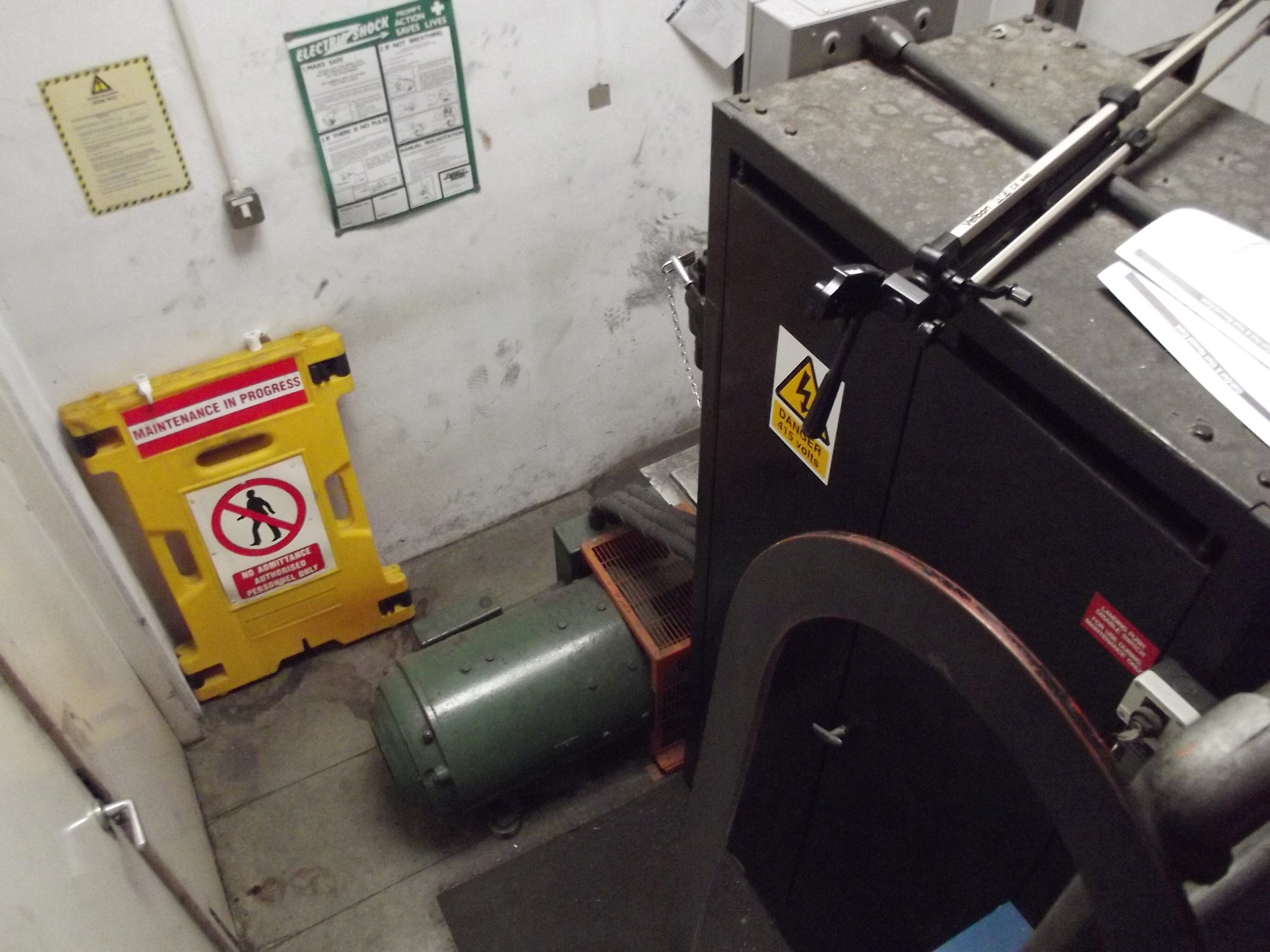
A lift’s control cabinet and MG set, 24 Sep 2011 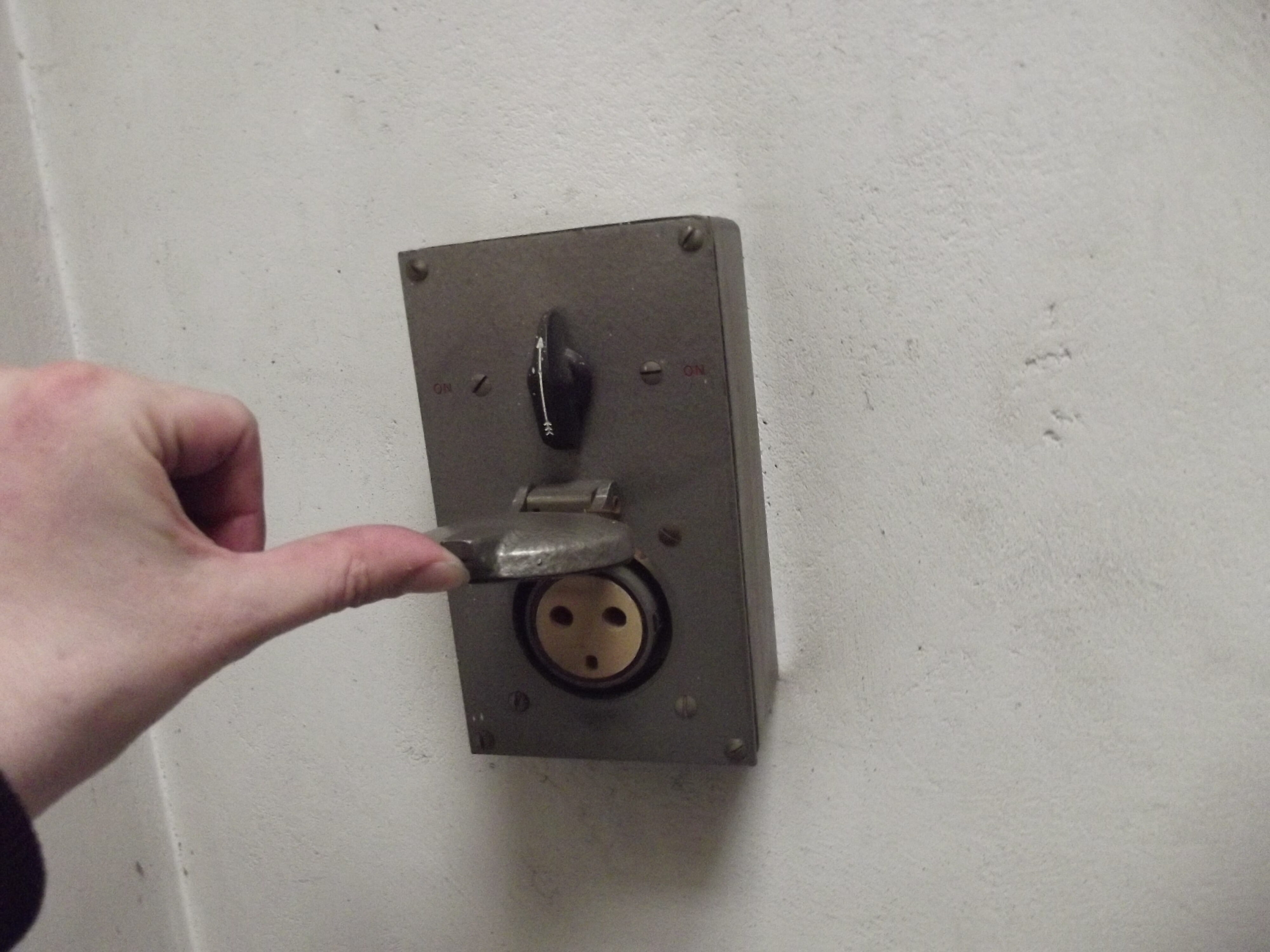
Odd socket in A lift’s motor room, 24 Sep 2011
B lift
- Installed: 2003
- Make: Guideline Lifts
- Type: Traction
- Floors served: LG, G, 1, 3, 4, 5, 6
Notes: probably the most used of the lifts at OS HQ in recent times, ‘B’ lift was totally replaced (except for the lift car itself) in 2002. Until then, it used the original machinery, which appeared to be the same as the other lifts at the front of WRB. Now modernised and computer-controlled but breaks down regularly. Famous for failing during a royal visit – the royal visitor concerned had to use the stairs instead – which had not been painted!
C lift
- Installed: late 1960s
- Make: OTIS
- Type: DC traction
- Floors served: LG, G, 1, 3, 4, 5, 6
Notes: one of the more reliable of the original lifts until it broke down in Spring 2009 and has not been repaired.
D lift
- Installed: Unknown
- Make: Unknown
- Type: Unknown
- Floors served: G, 1, 2, 3 (the original served the LG too)
Notes: originally, this was the main lift from OS Reception to the floors above in North Block. I know nothing about the original lift as I cannot remember it but I know it was replaced when HMRC refurbished the building. Presumably, it was the same as J1 lift and the buttons certainly appear to be the same as J1 lift, according to a 1968 photograph of the lift lobby.
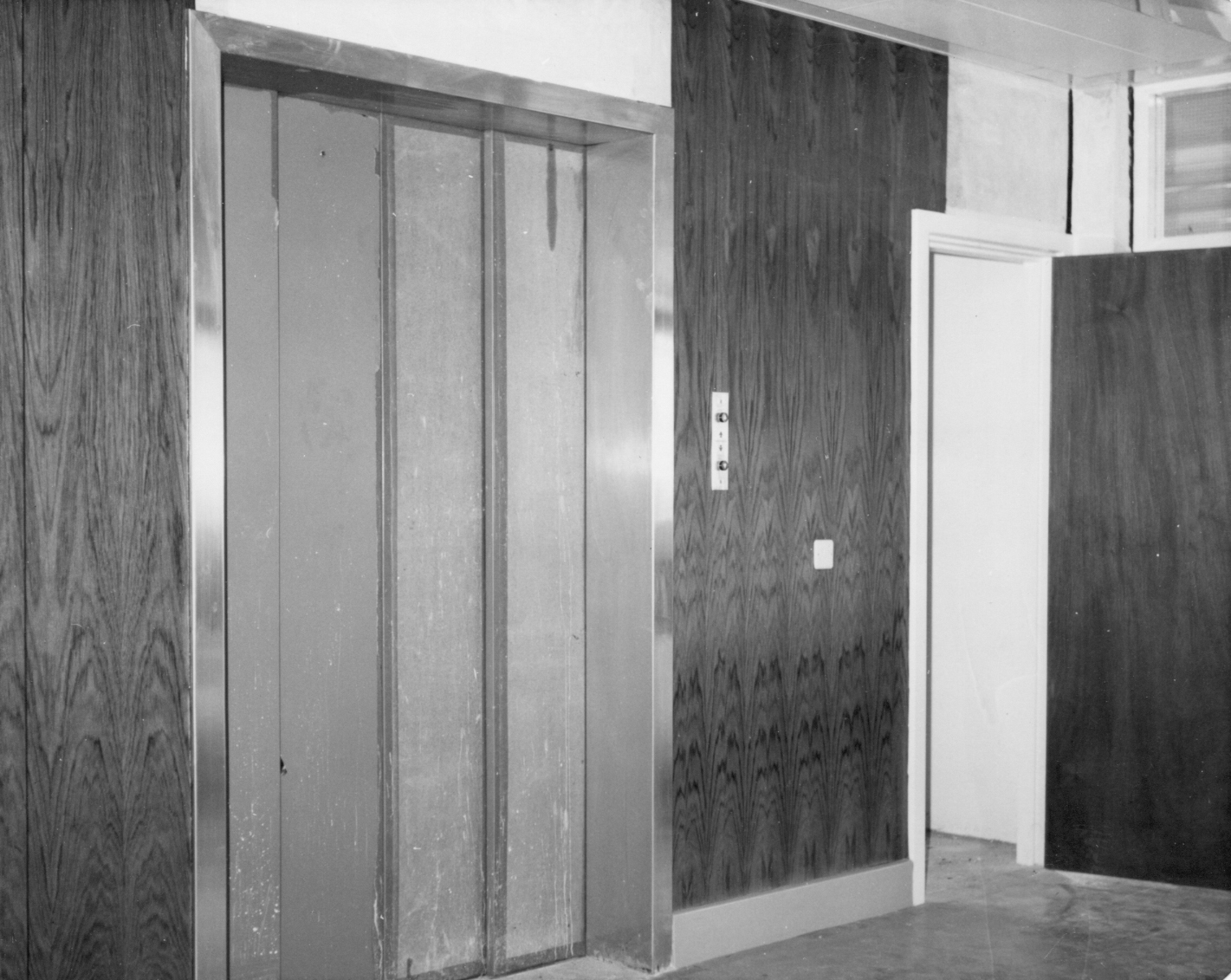
This must be D or J lift.
D1 lift
- Installed: Probably late 1990s
- Make: OTIS (I think)
- Type: Unknown
- Floors served: G, 3
Notes: there was originally no lift here; this new lift was installed to take staff between the entrance and offices of P&O on the refurbished third floor of North Block. It does not serve the intermediate floors as these were occupied by HMRC. It is probably a hydraulic lift as installing a new traction lift would have required major work to the penthouse to provide a motor room.
E lift
- Installed: late 1960s
- Make: OTIS
- Type: DC Traction
- Floors served: G, 1, 3, 4, 5, 6
Notes: probably the least used lift in WRB. The doors were rather noisy and intermittent and the floor indicator in the lift car did not work.

E lift call and floor indicator panel, ground floor. 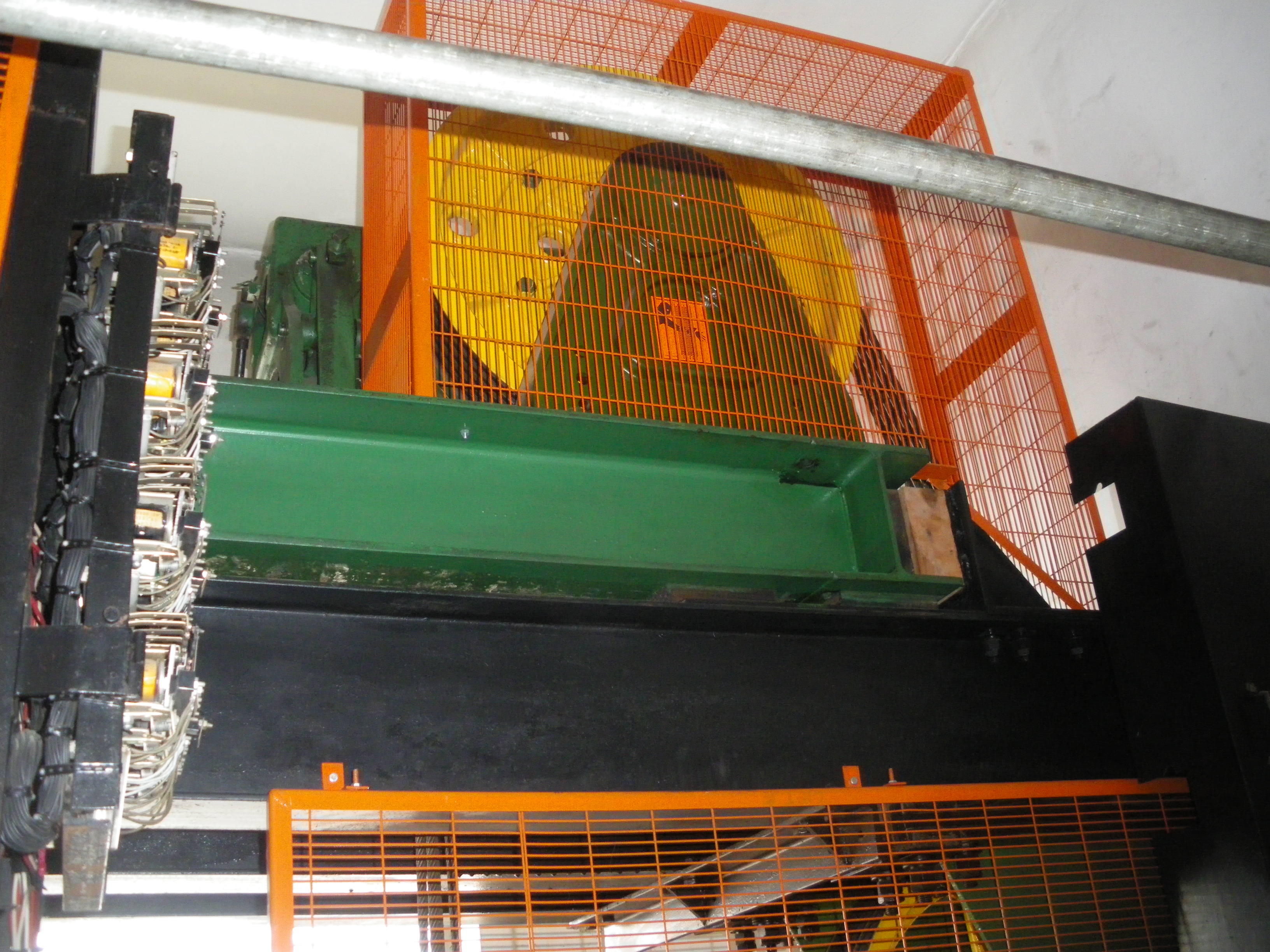
E core lift machine 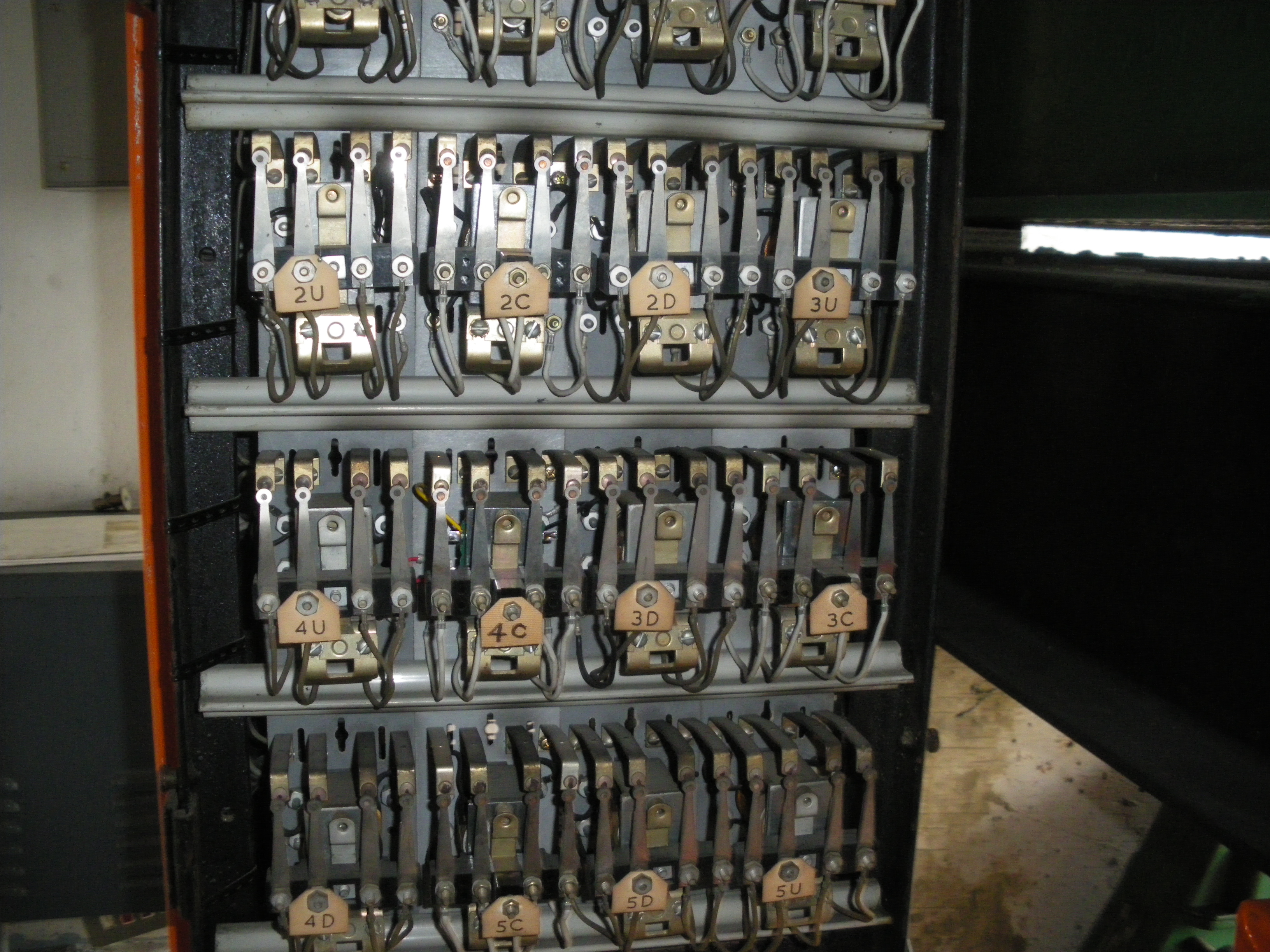
Call request relays, E lift motor room 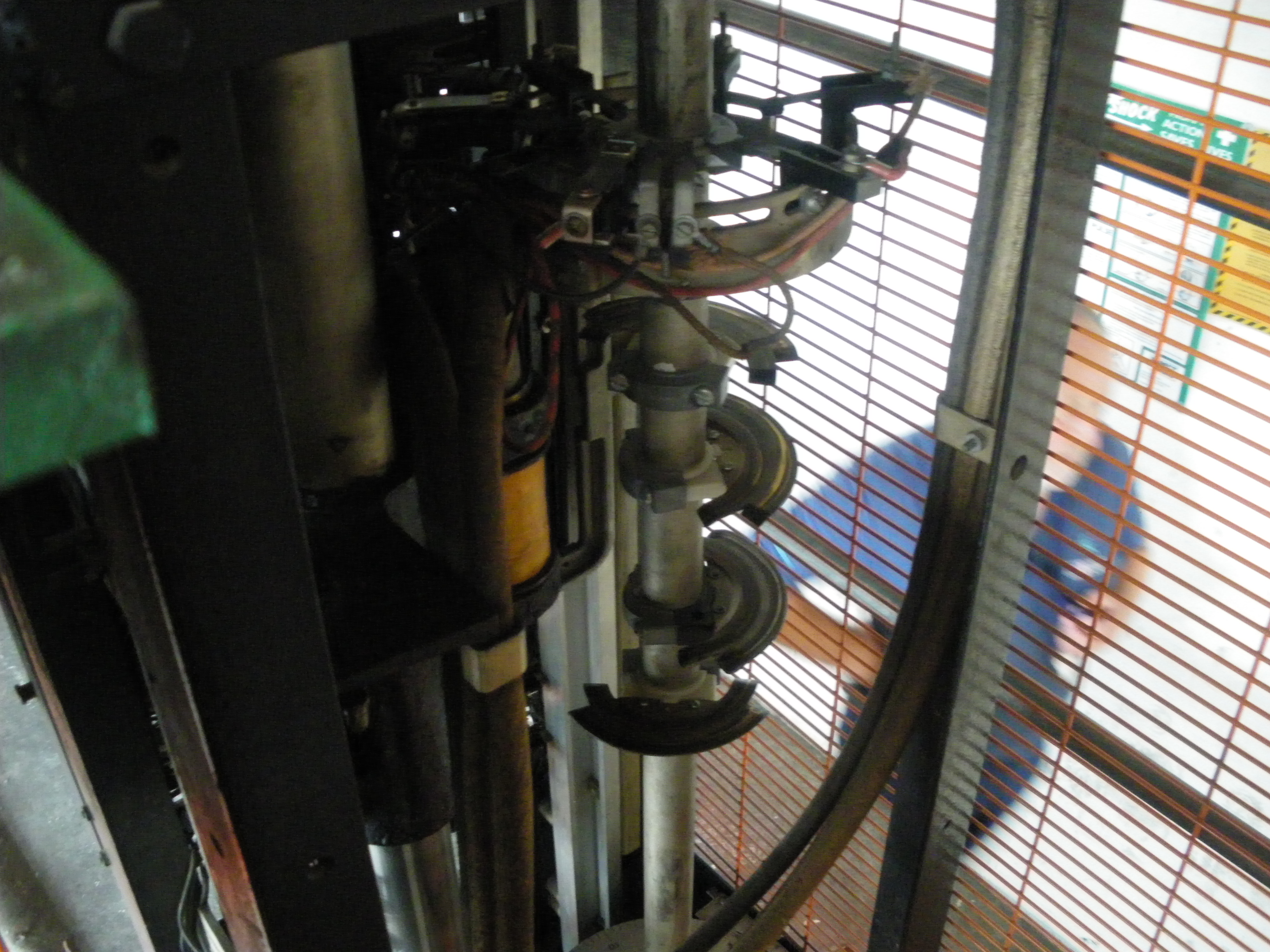
OTIS floor selector, E lift 
OTIS floor selector, E lift 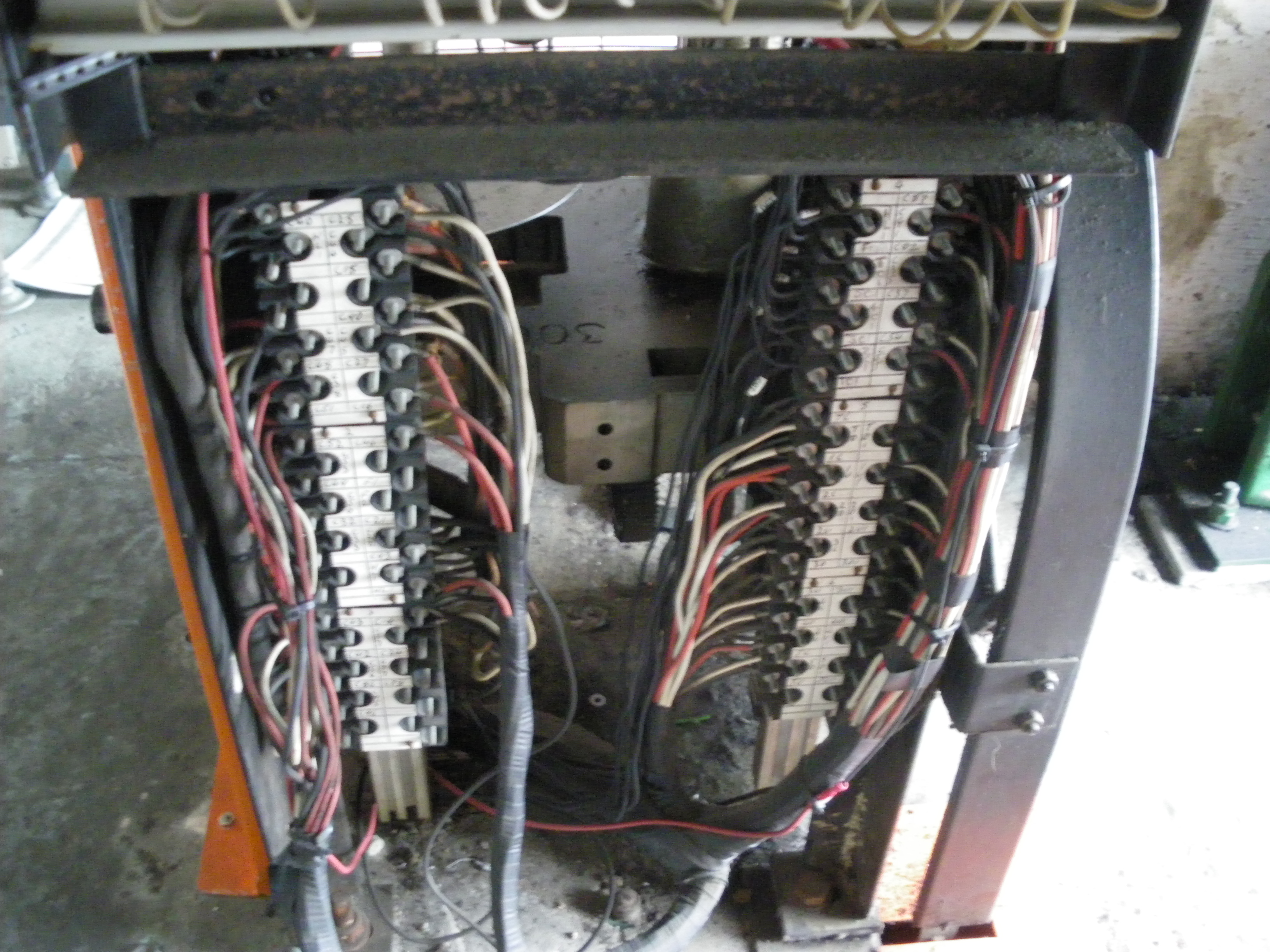
E lift – floor selector wiring terminals 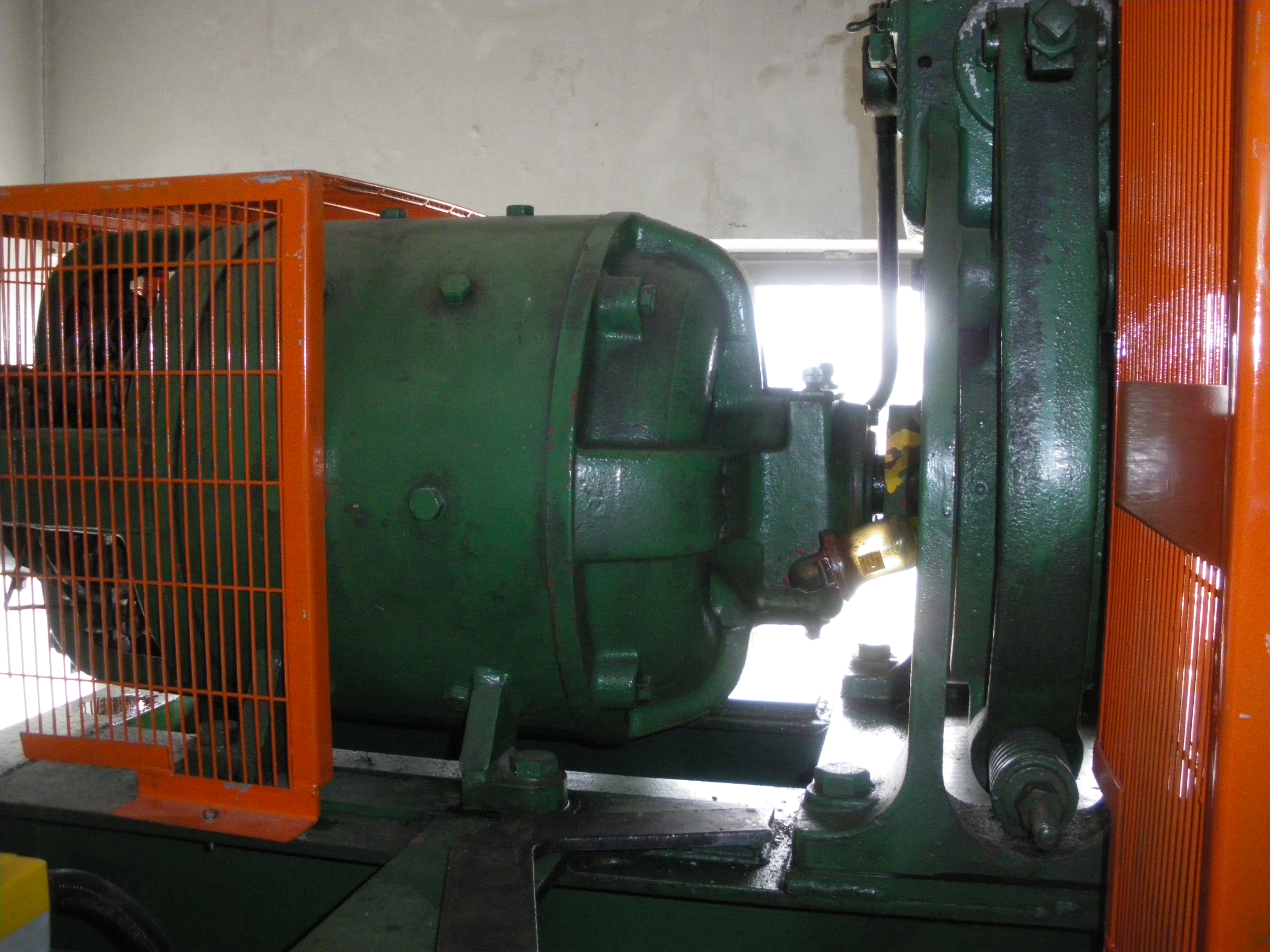
E lift motor and automatic brake 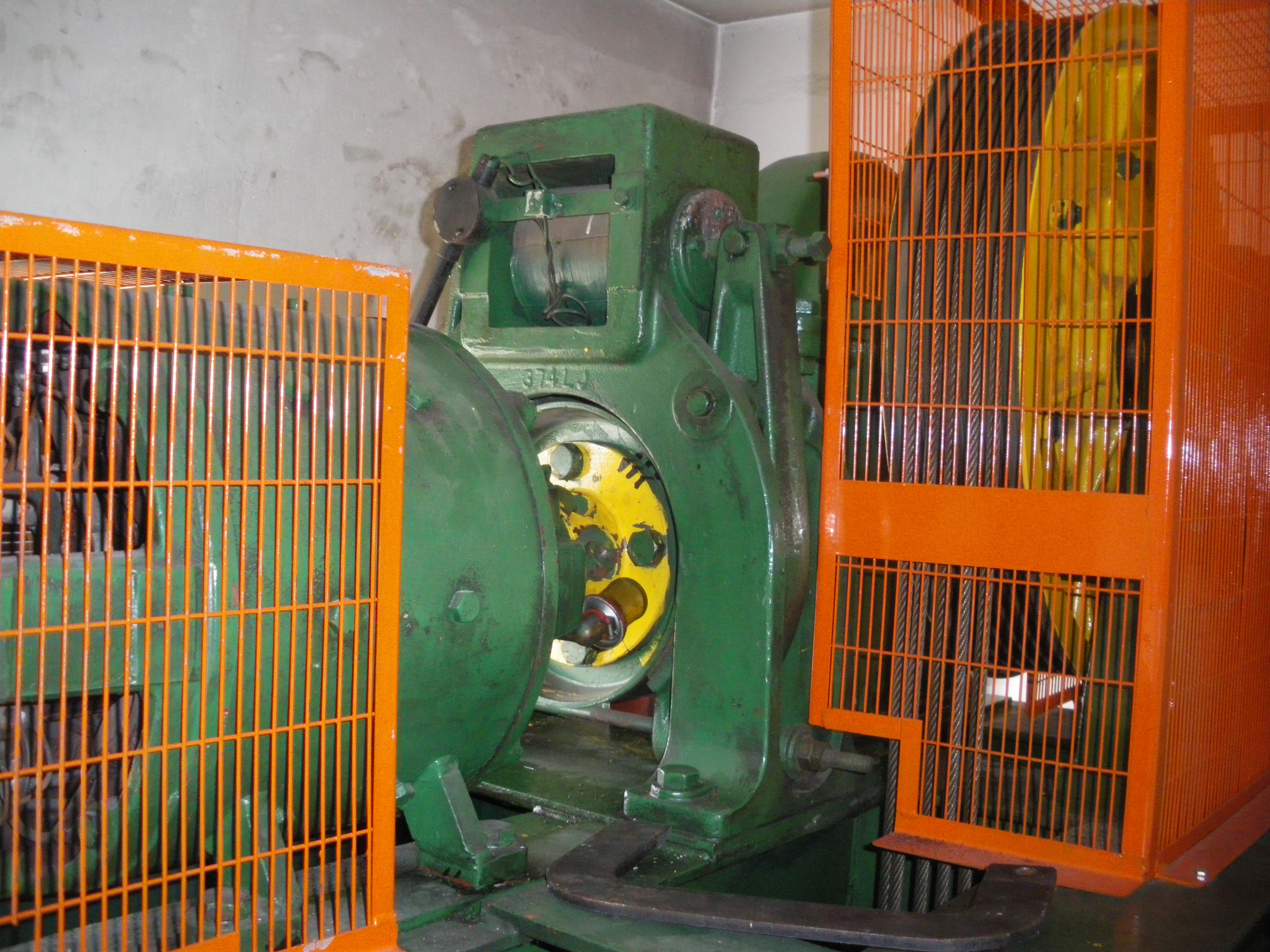
E lift machine – motor, brake, gearbox and sheave, 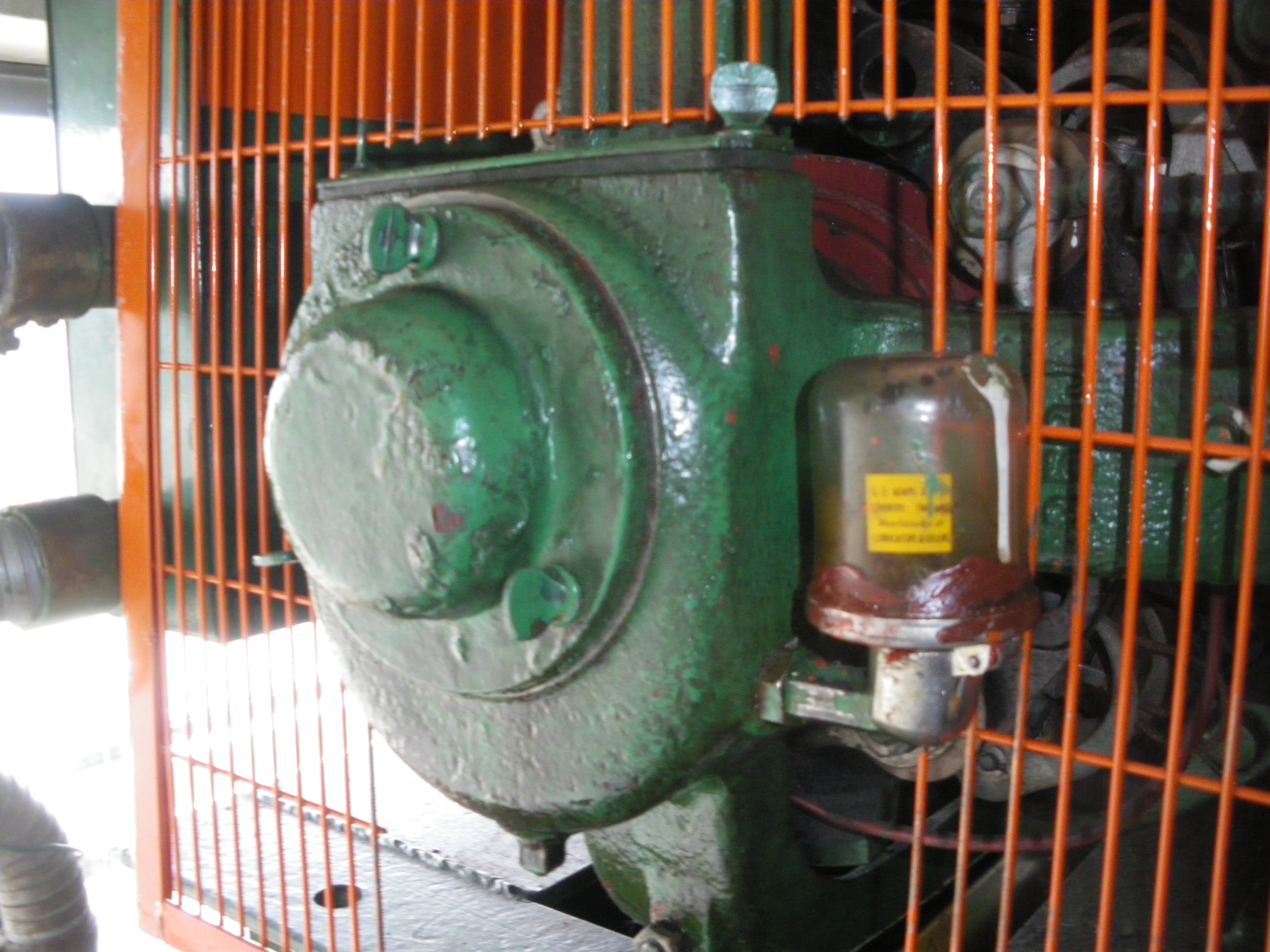
Close-up of OTIS lift motor, E core. 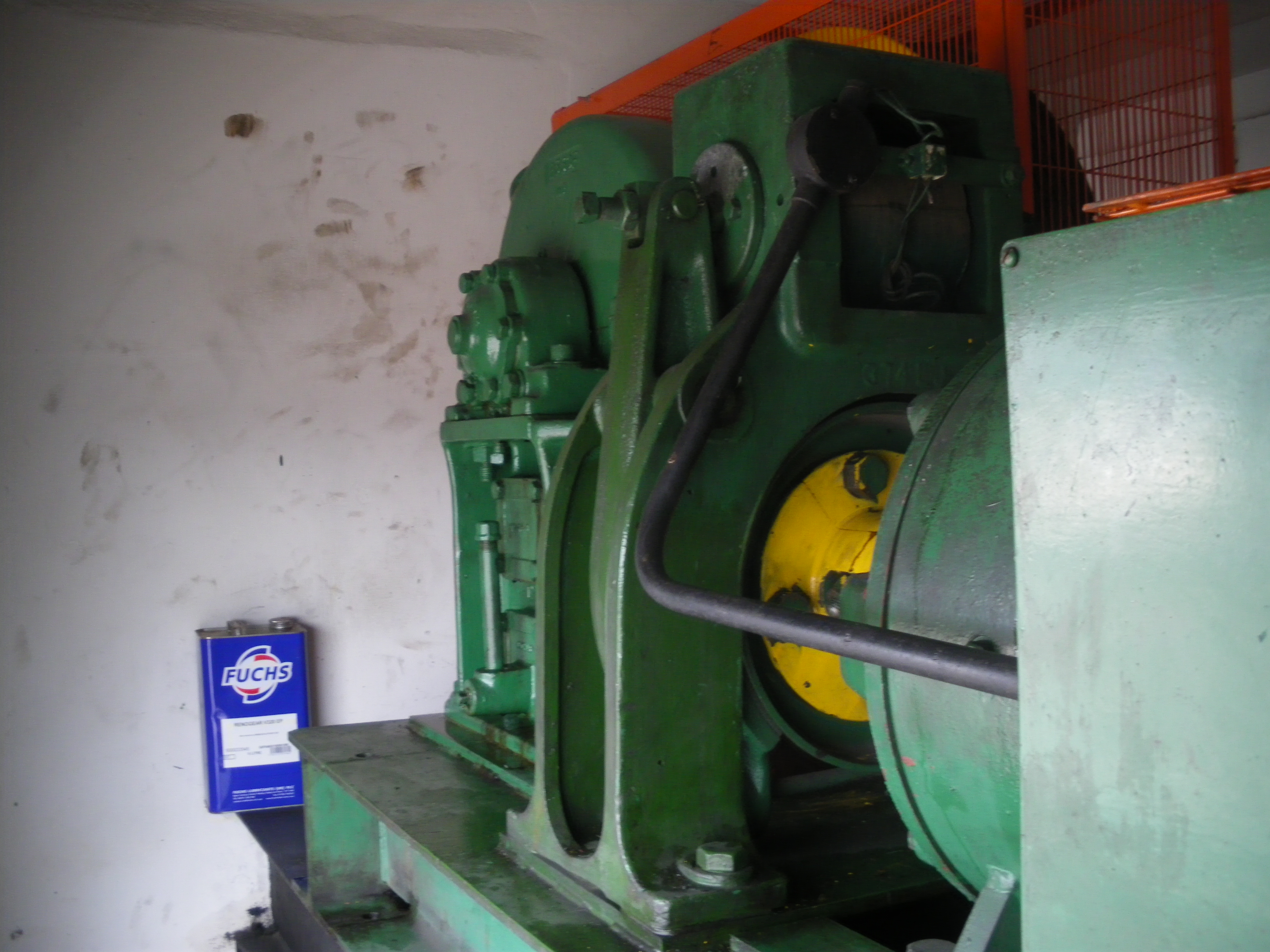
E lift machine, gearbox, brake and motor 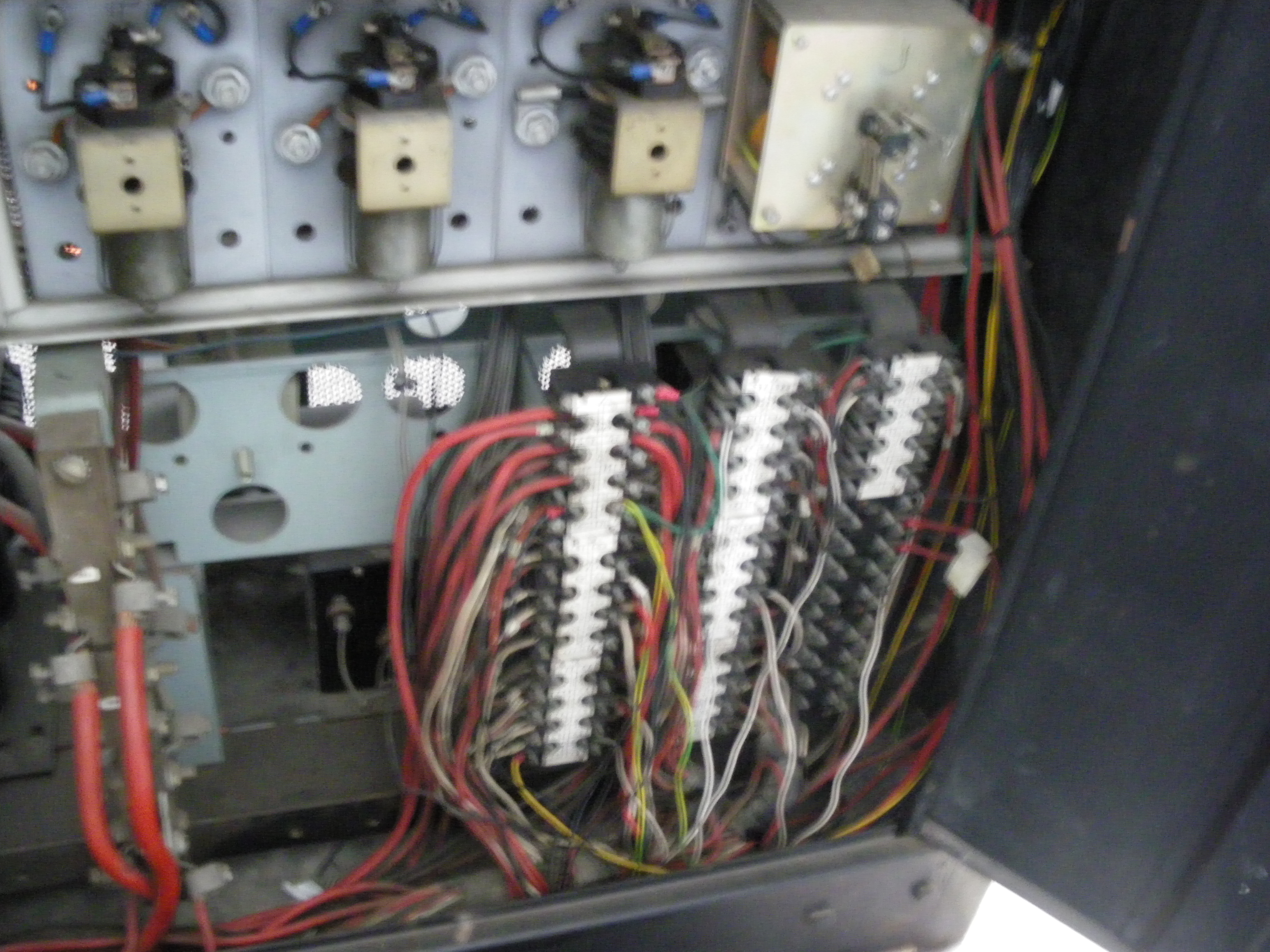
Part of E lift’s controller cabinet 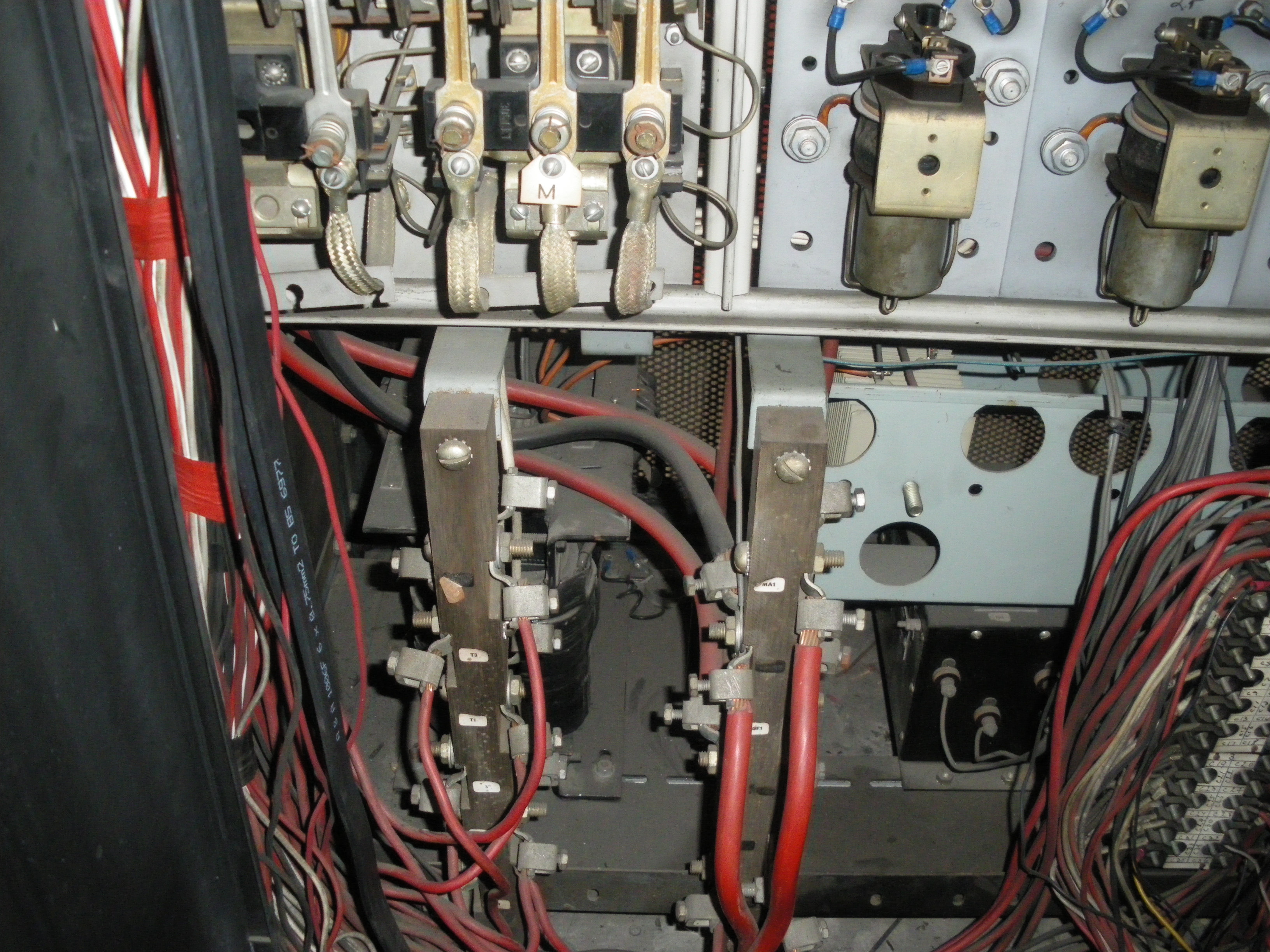
Part of E lift’s controller cabinet 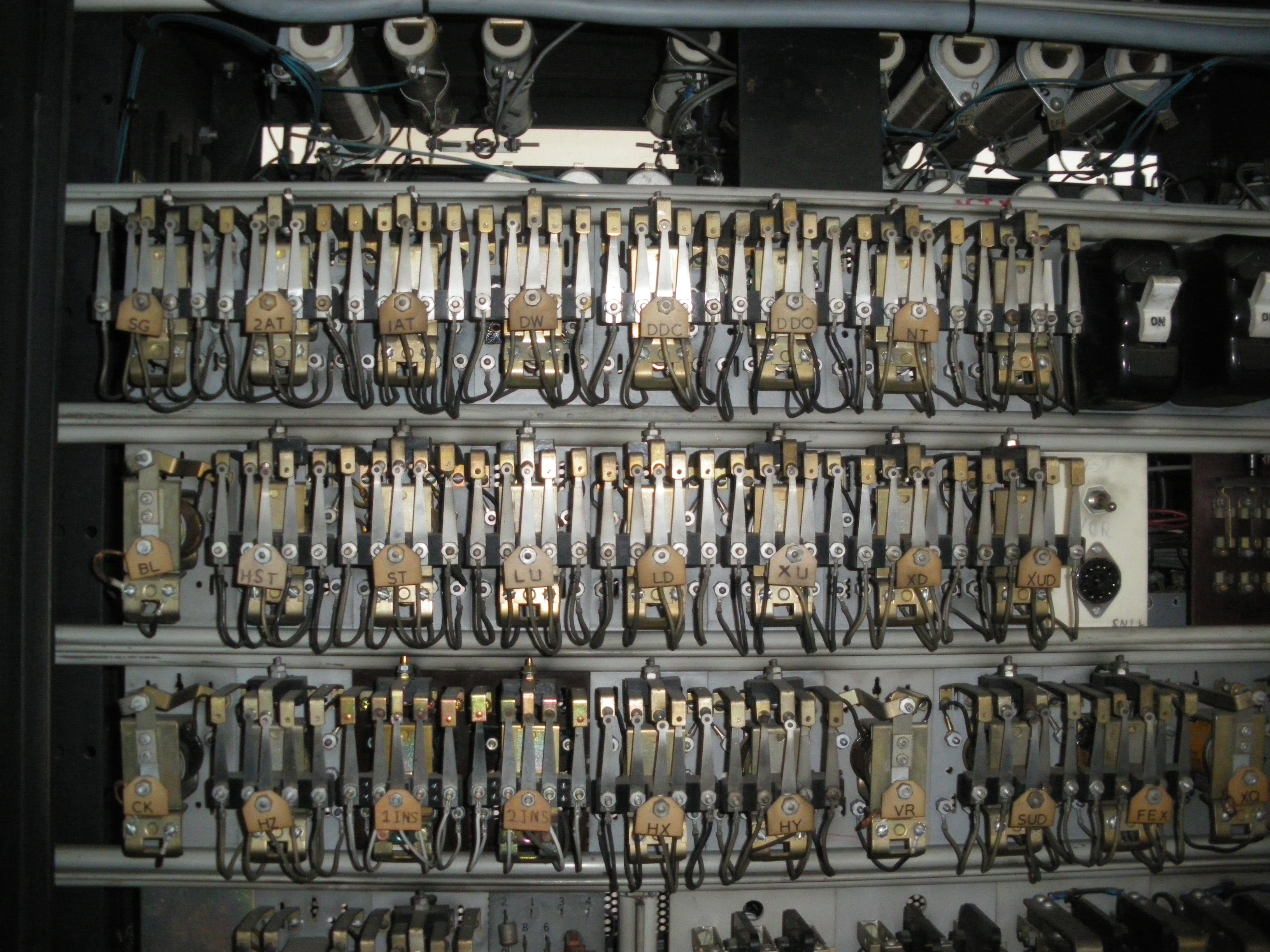
Part of E lift’s controller cabinet 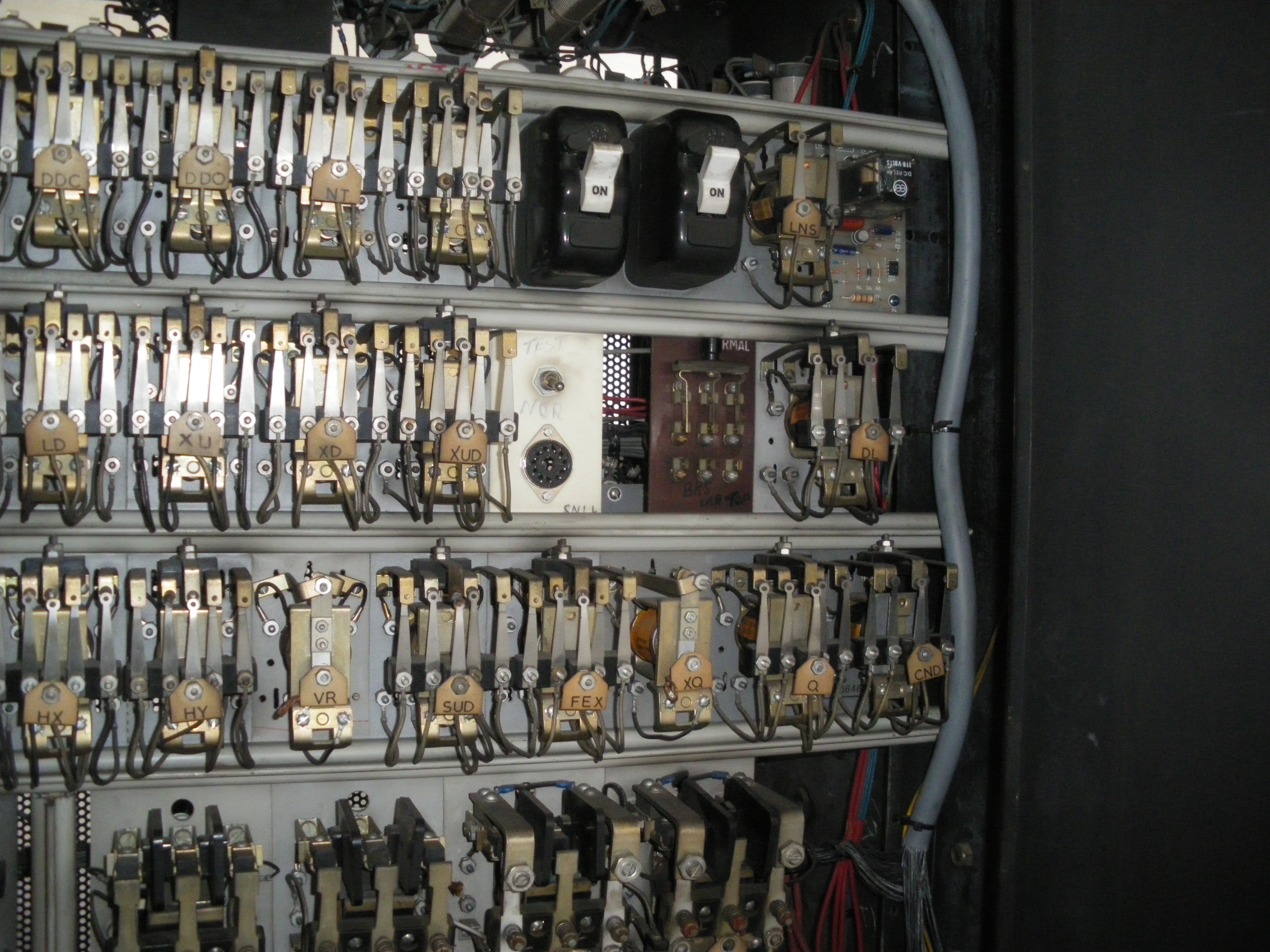
E lift control cabinet 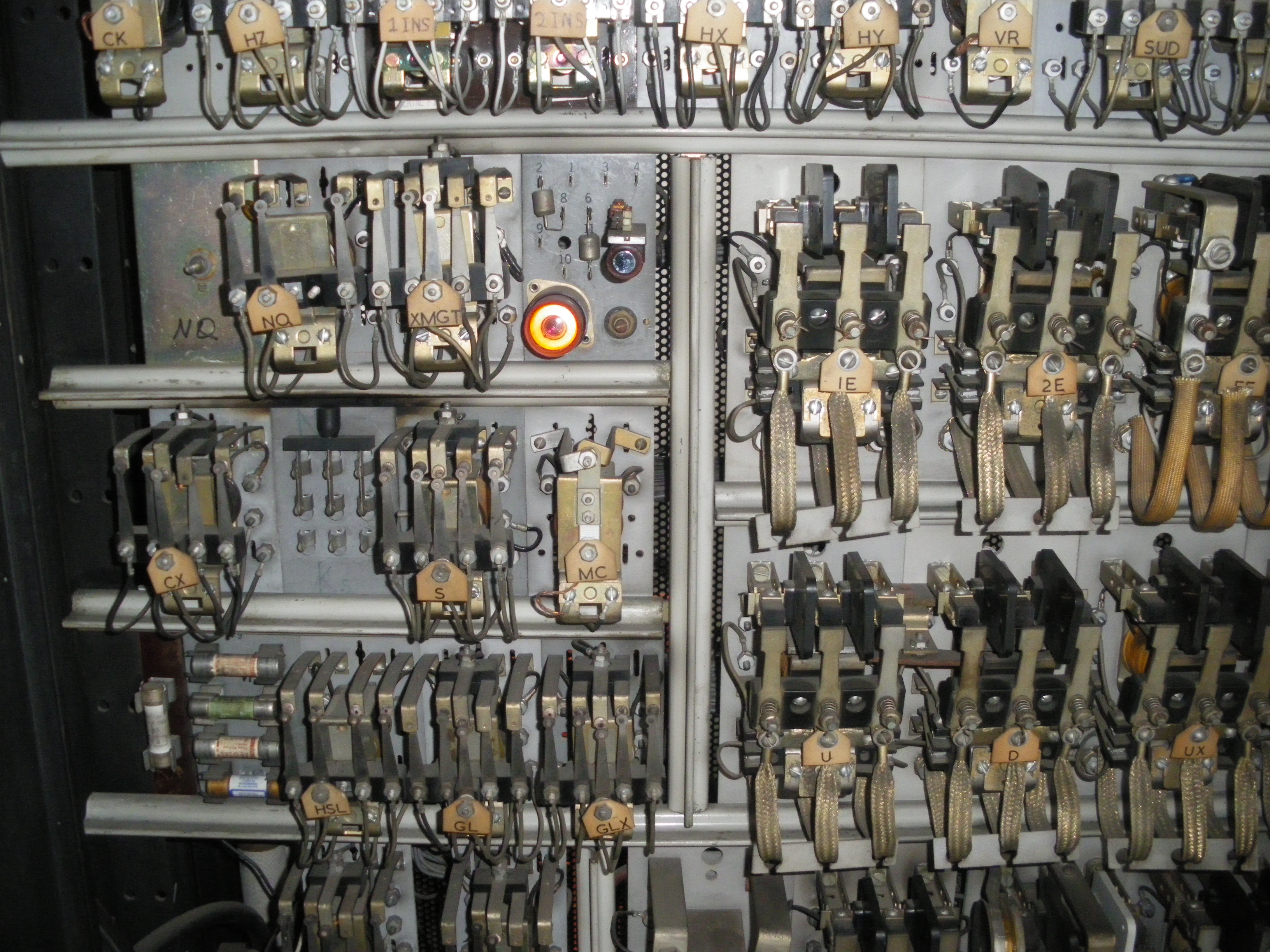
E lift control cabinet 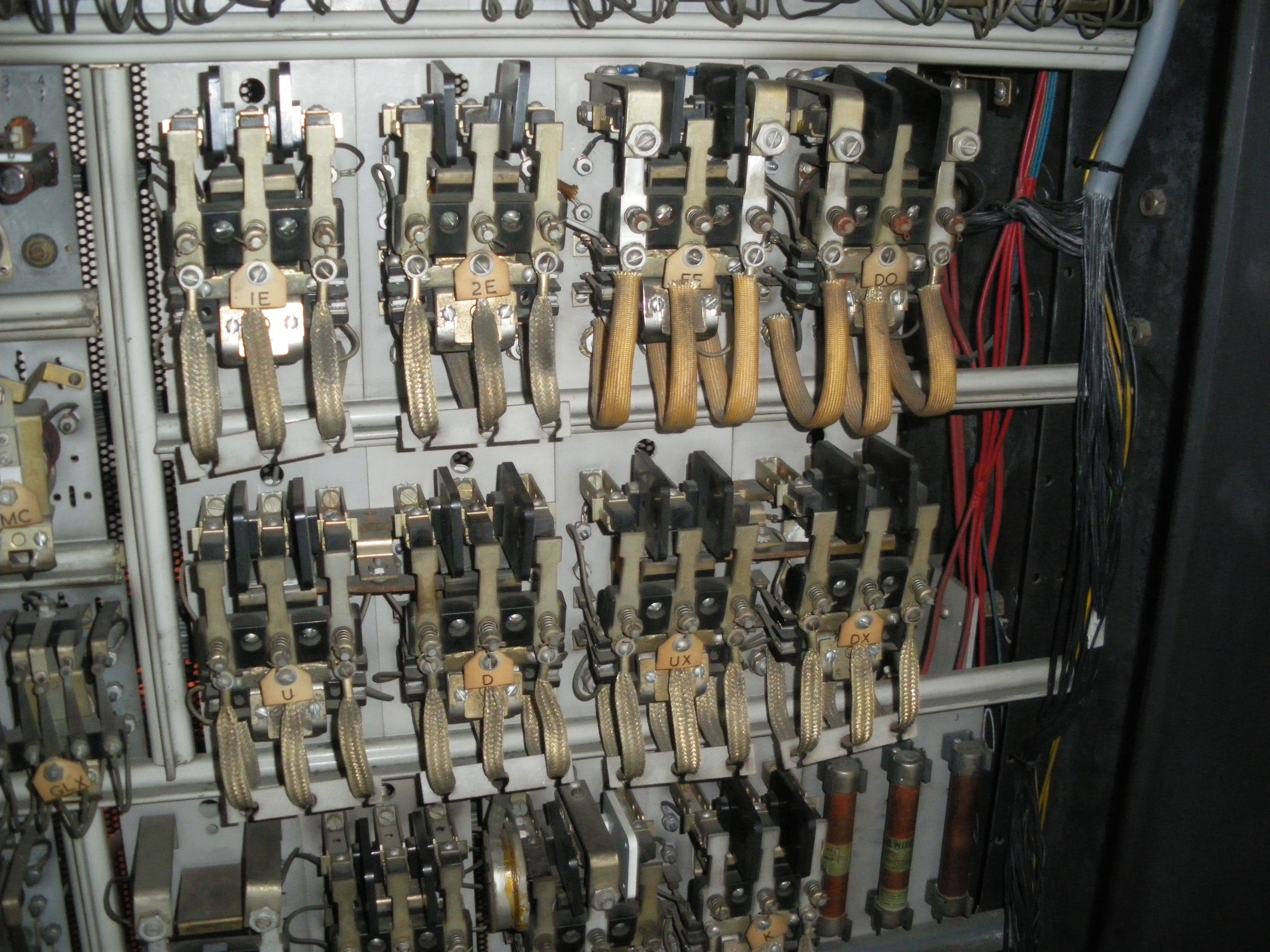
E lift control cabinet – contactors 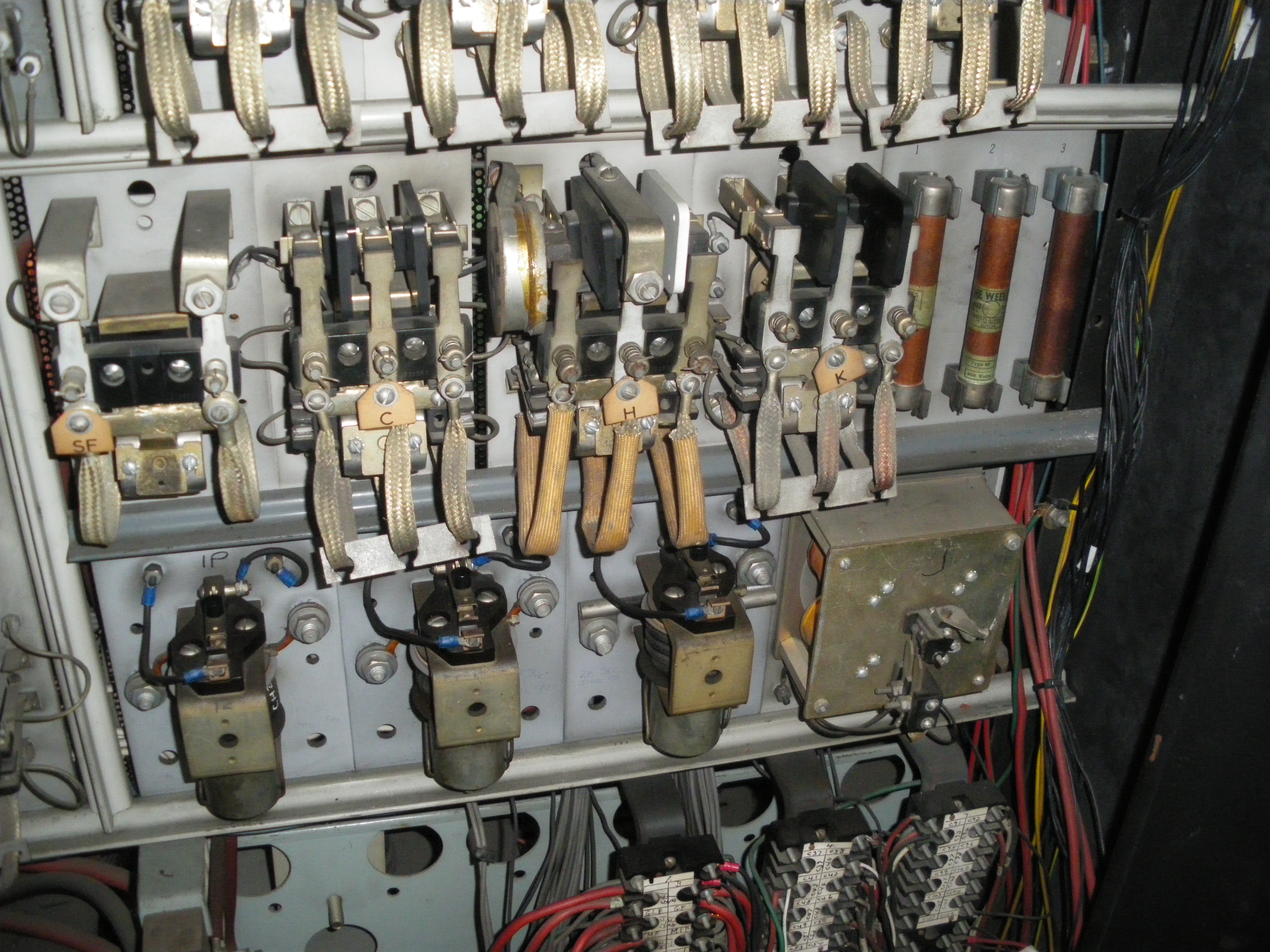
E lift control cabinet 
E lift motor-generator set. 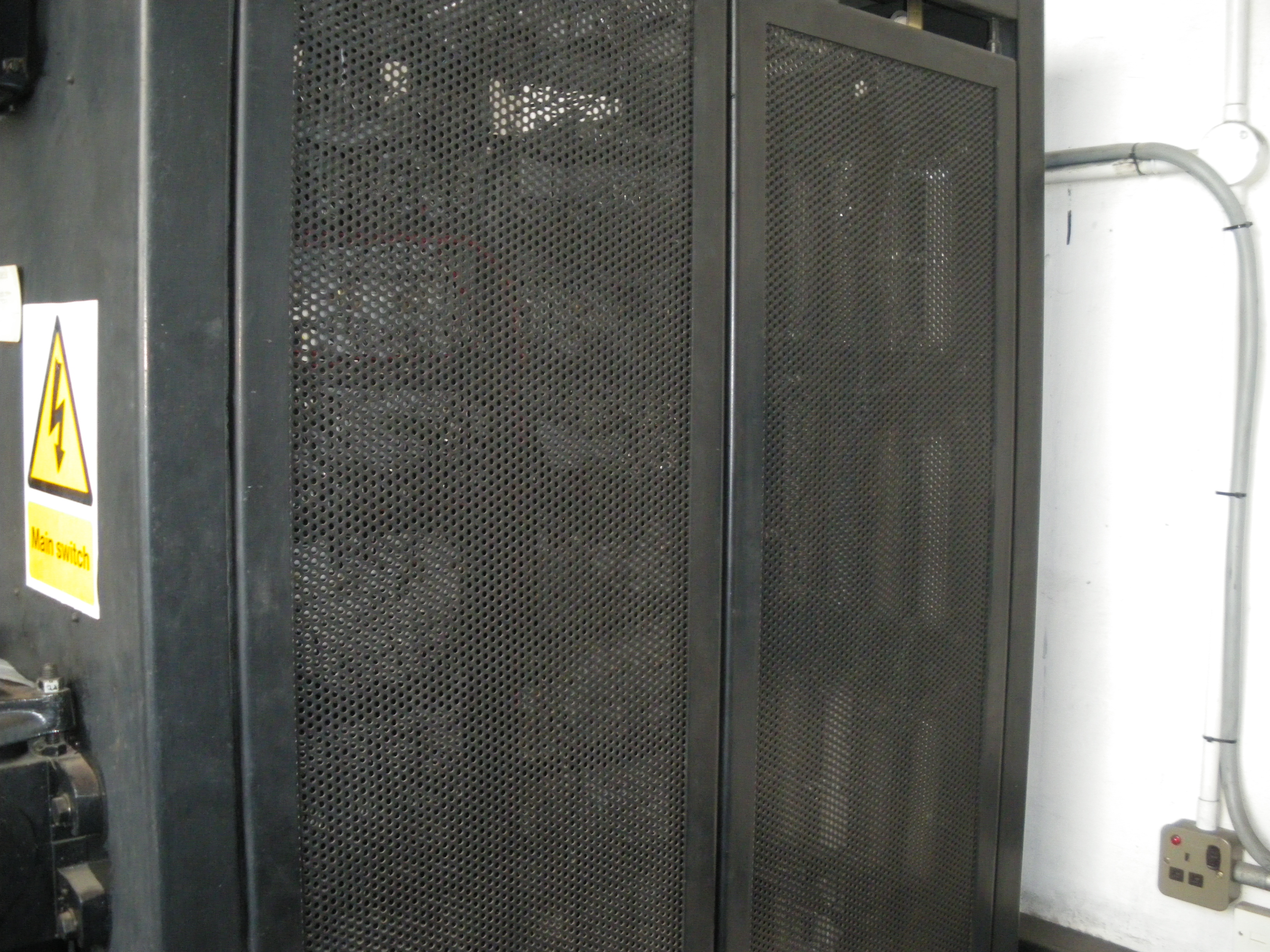
E lift, rear of control cabinet. 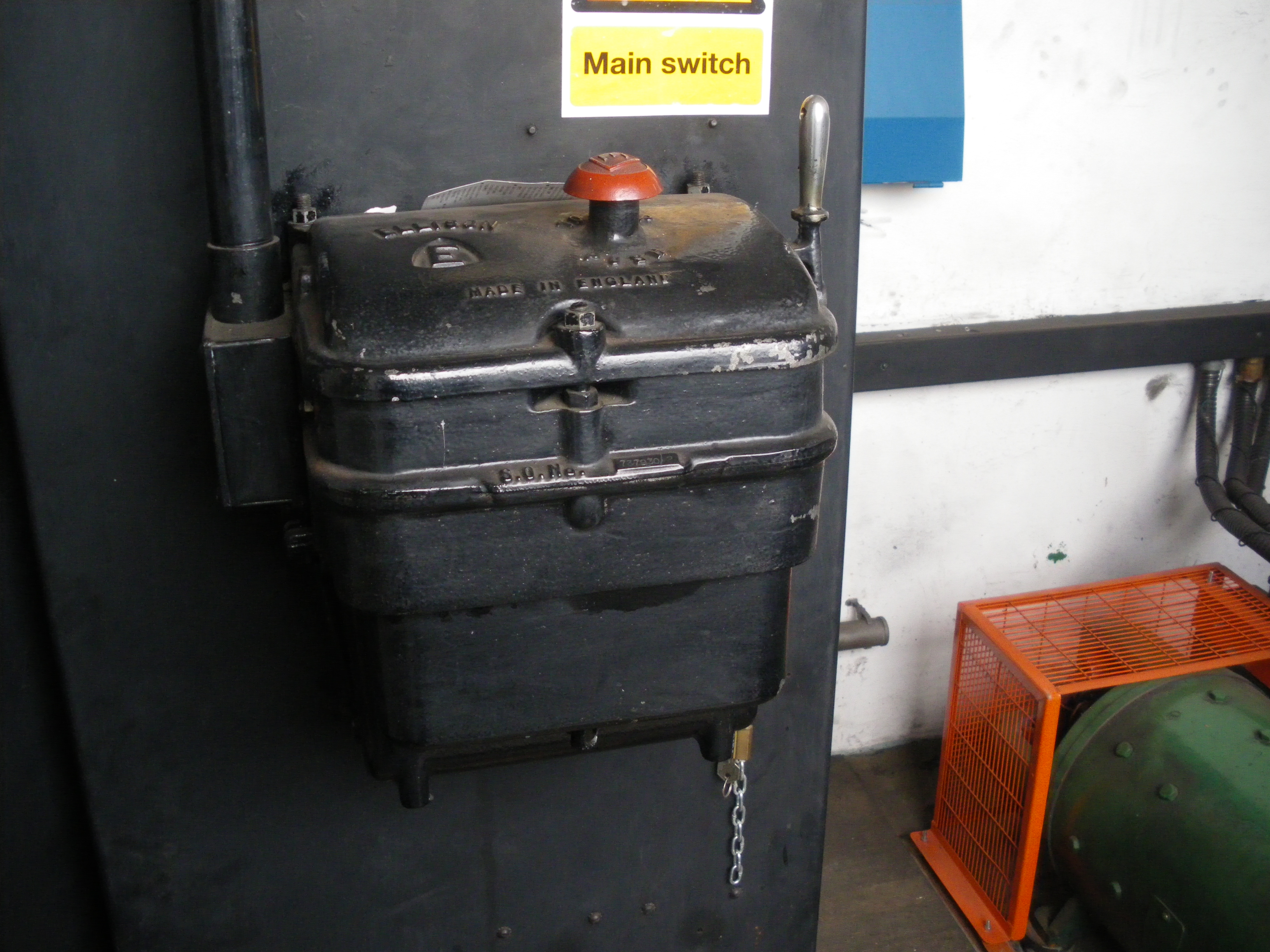
E lift control cabinet – main switch 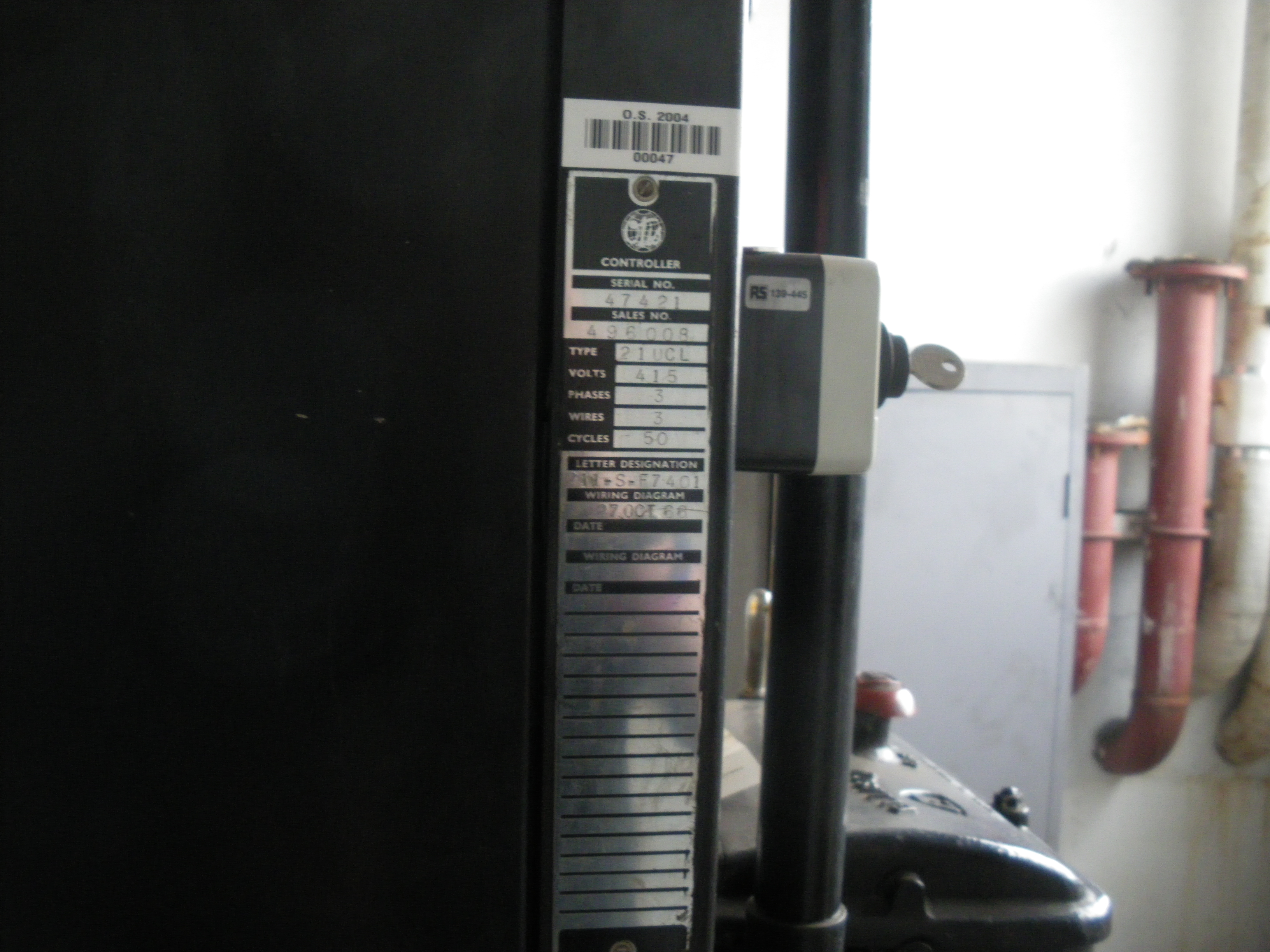
E lift control cabinet
F1 lift
- Installed: 2002
- Make: Guideline Lifts
- Type: Traction
- Floors served: LG, G, 1, 2, 3, 4, 5, 6
Notes: the smaller of the two lifts at F core. The original lifts were entirely separate but the new ones are controlled by one button (this technology was not readily available in 1969). This way of working is actually a nuisance when one lift is designated as a goods lift – pressing the call button brings whichever lift is closest and passengers are not supposed to use the goods lift – but if it turns up, you’ve got to use it because the controller will not send the other lift! Replaced in 2002 – everything was replaced, including the actual lift car.
F2 lift
- Installed: 2002
- Make: Guideline Lifts
- Type: Traction
- Floors served: LG, G, 1, 2, 3, 4, 5, 6
Notes: the larger of the two lifts at F core, this was the largest lift in the building and designed for moving goods (such as pallets) around. It could fit a standard size pallet and a pedestrian pallet truck. This lift was also totally replaced in 2002. In Summer 2010, the lift car and door surround on the third floor were badly damaged by contractors moving items out of W301. It was patched up by fs³’s resident carpenter.
G lift
- Installed: 2002
- Make: Guideline Lifts
- Type: Traction
- Floors served: LG, G, 1, 2, 4
Notes: a slightly smaller goods lift than F2. The machinery was replaced in 2002 but the original lift car remained albeit refurbished.
H lift
- Installed: late 1960s
- Make: OTIS
- Type: DC traction
- Floors served: G, 1, 3, 4, 5, 6
Notes: this busy passenger lift was still operating using the original equipment when OS vacated the site.
J lift
- Installed: late 1960s
- Make: OTIS
- Type: Traction
- Floors served: G, 1, 2, 3
Notes: this lift served the accommodation on the top floor of North Block and has an older style of push buttons than the other lifts – protruding black buttons rather than the flush metal ones.
K lift:
- Installed: late 1960s
- Make: OTIS
- Type: Unknown
- Floors served: G, 1
Notes: this lift only went between the area on the ground floor between K stairs and the paper store and the Department Record Centre (DRC) above. It is the only lift that served the DRC and is for goods use only. This was not modernised and certainly, everything looked original. The motor room was in a pit below the paper store and while I had a quick look at the motor room once, I did not see the actual traction machine.
L lift
NOTE: This assumes that L lift is the dumbwaiter next to G lift in West Block
- Installed: late 1960s
- Make: OTIS
- Type: Unknown
- Floors served: LG, G, 1, 2, 4
Notes: this had been turned off for as long as I can remember. I never got the chance to see the motor room as it would have needed a ladder – the door is at 5th floor level with no means of access. The controller looked similar to the other lifts so was probably much the same.
M lift
- Installed: 1960s
- Make: OTIS
- Type: AC traction (apparently but might be DC)
- Floors served: LG, G, 2, 4
Notes: this lift looked ancient and the interior was much more spartan than any of the other lifts at Maybush. The buttons were also different – they were of the older protruding black plastic push button style (like J lift). As of October 2009, the lift appears to have been ‘turned off’. Whether it still worked is unknown, as that end of West Block is mainly unused. I suspect it has been ‘mothballed’, as keeping it in service requires spending money on maintenance and statutory inspections – not worthwhile for a lift that is no longer used.
N lift
- Installed: presumed 1990s
- Make: Unknown
- Type: Hydraulic
- Floors served: LG, G
Notes: this small lift is for catering staff taking trollies from the Restaurant to the underground corridor. It looked relatively new and as far as I know, is the only hydraulic lift in the building although K lift may be hydraulic too (and possibly J1 and L). There is also a small dumbwaiter (between G and 1 floors) in the C016 IT suite – presumably this does not have a letter assigned as it is relatively new.
Original article written by GaryTull 14 July 2010 (UTC), please let me know if you have any information about the lifts that is not on this page.
Last updated on Friday 19 February 2021 by GaryReggae
